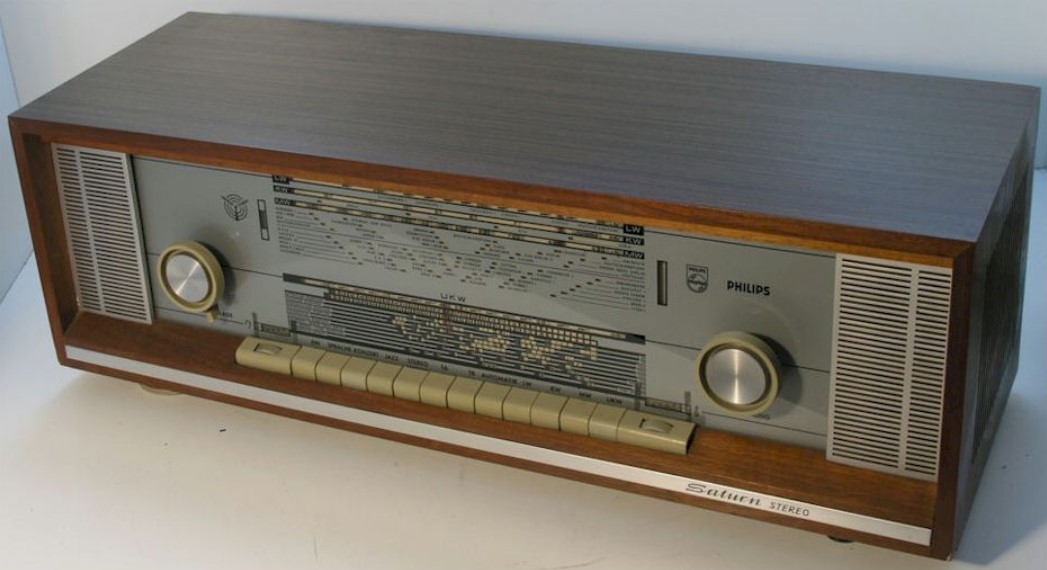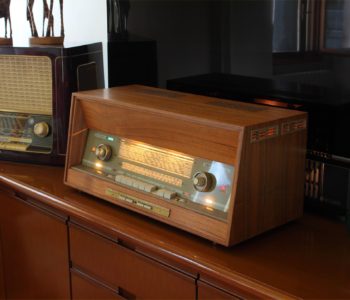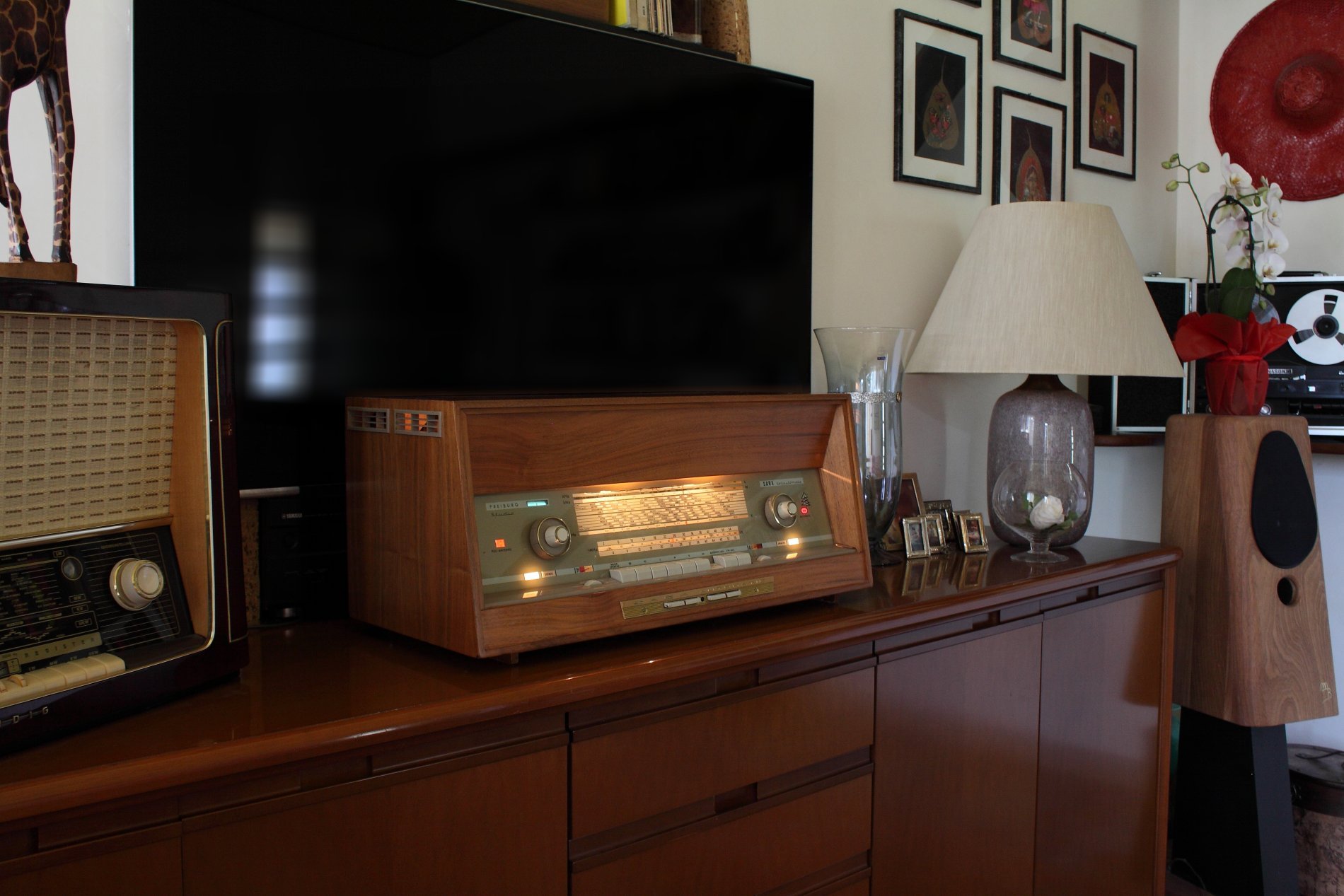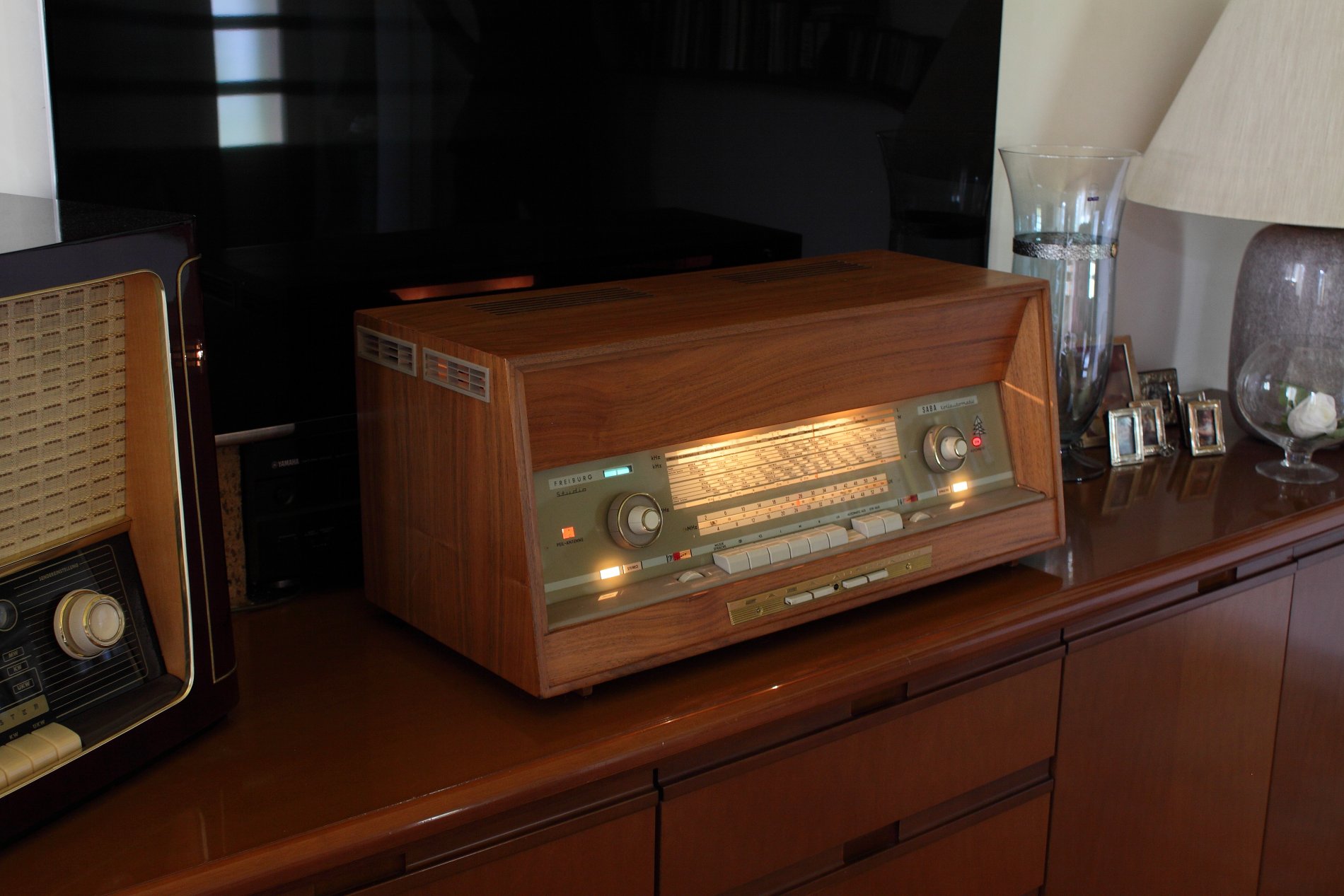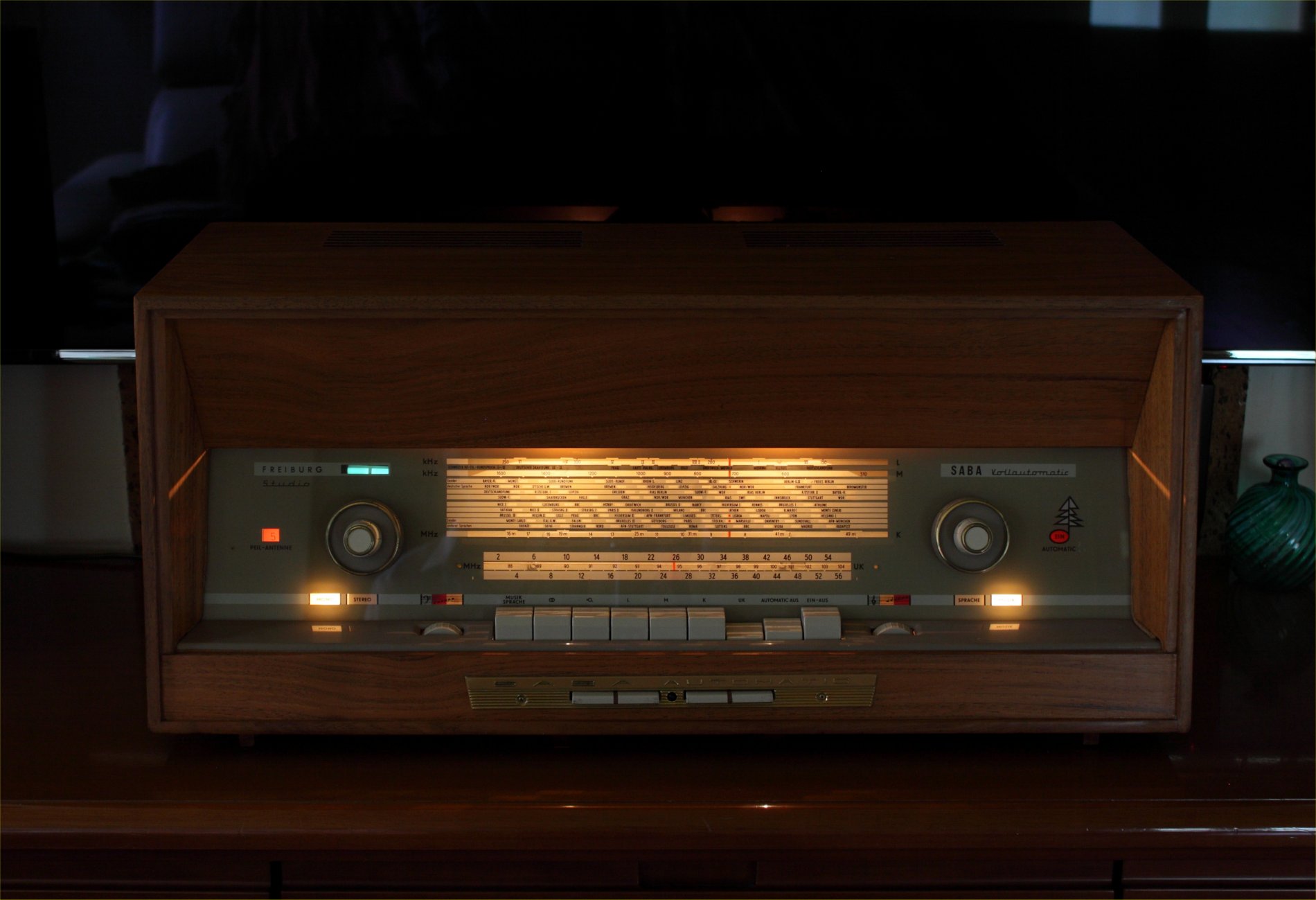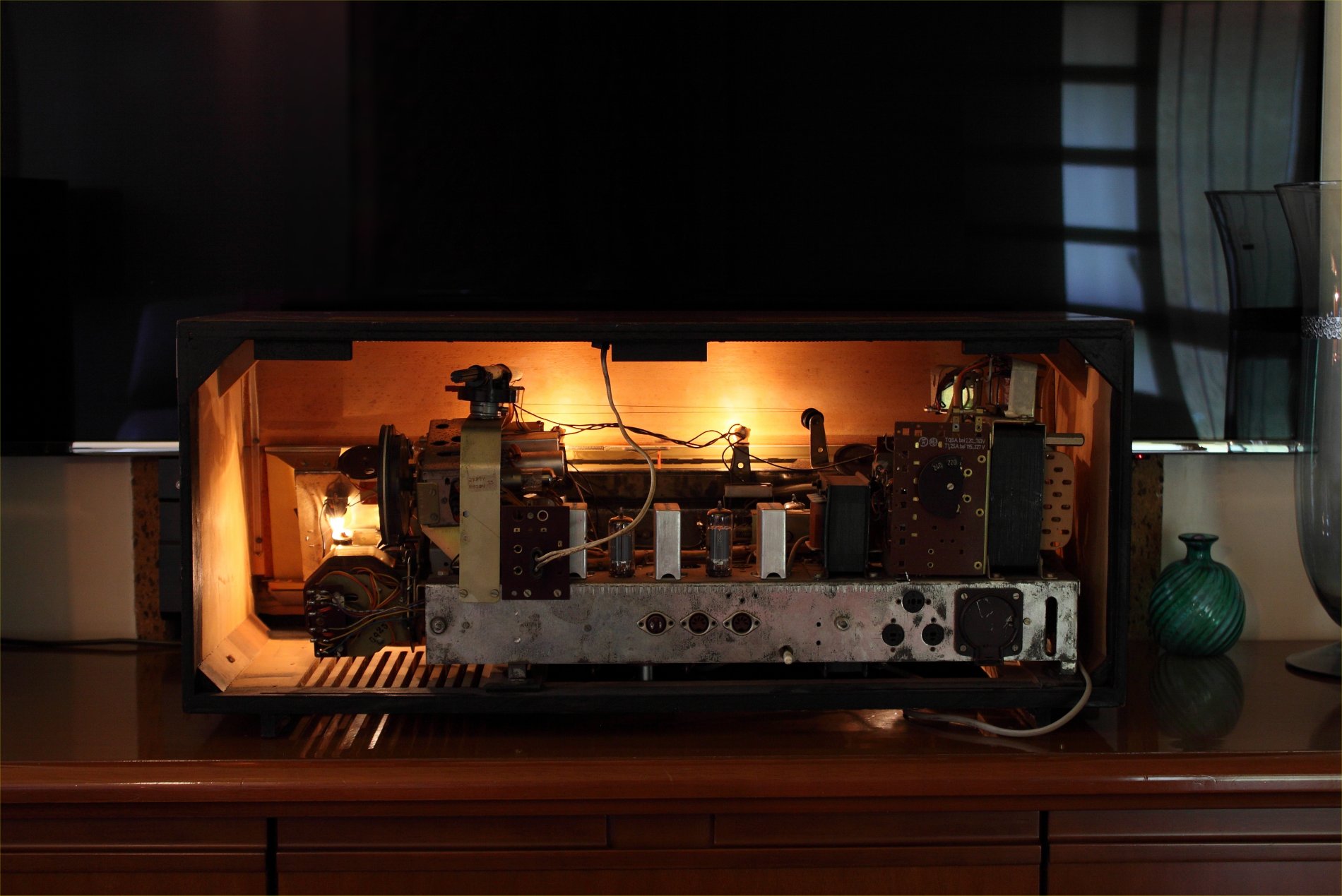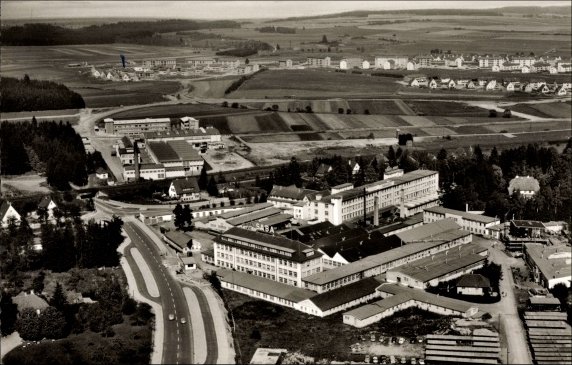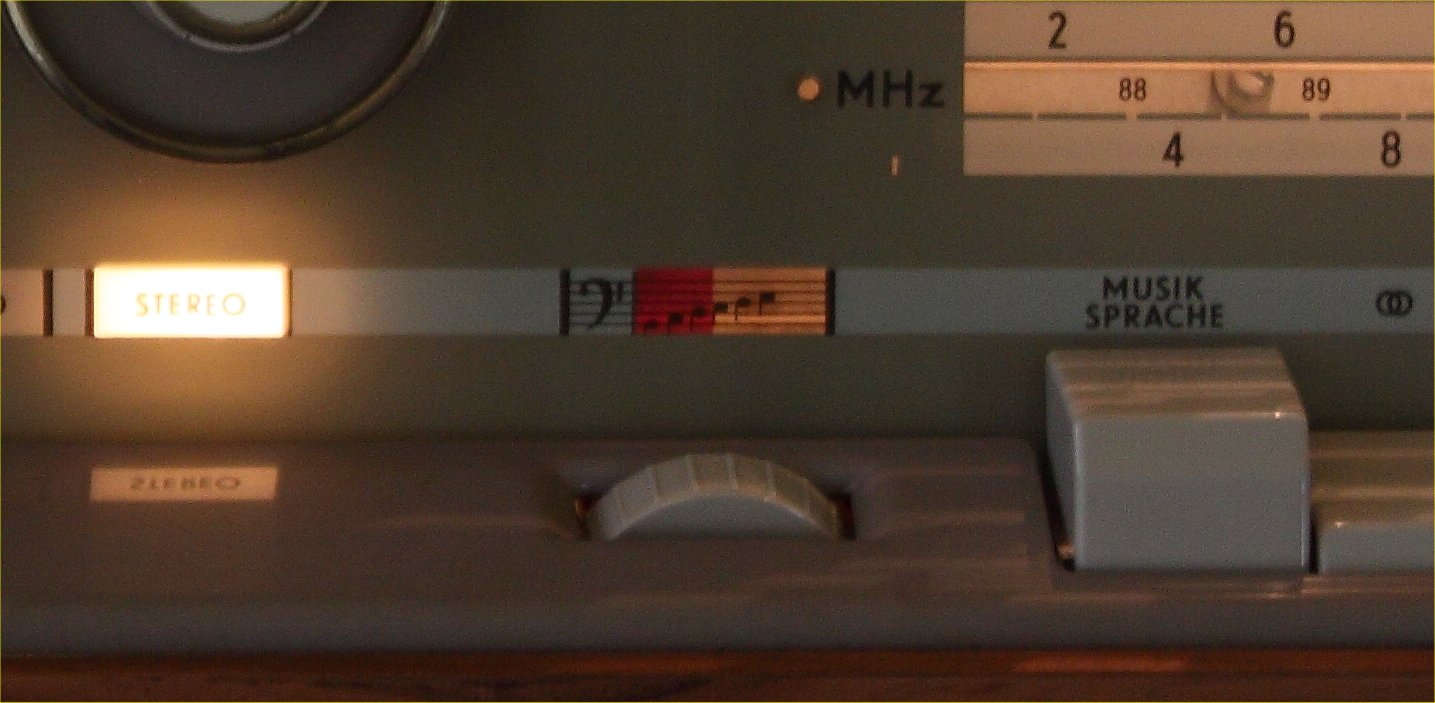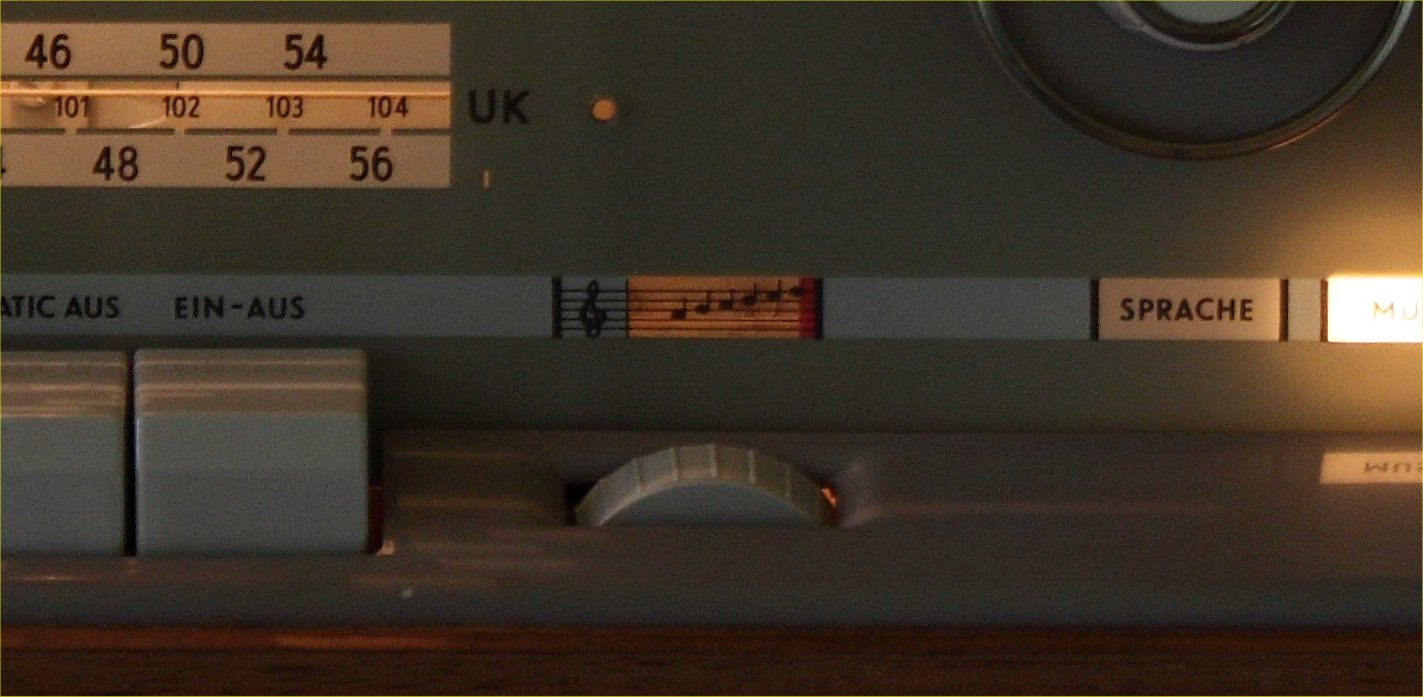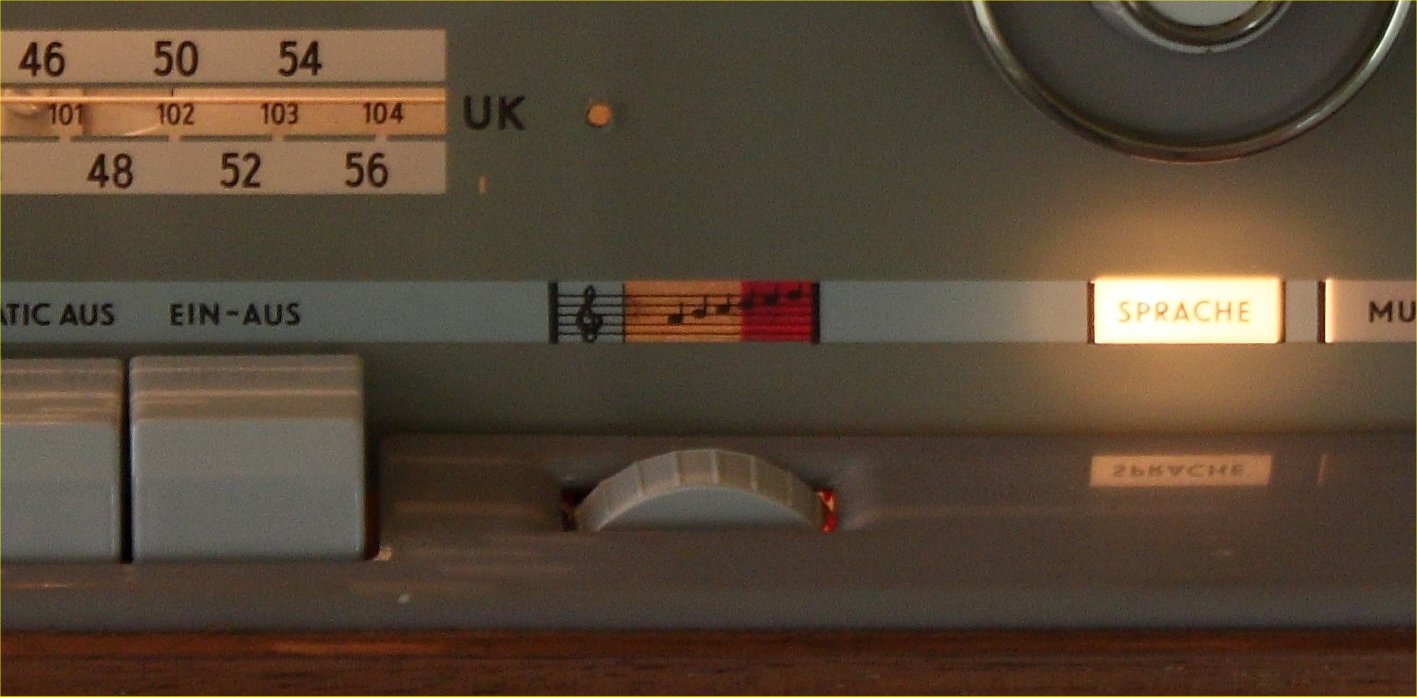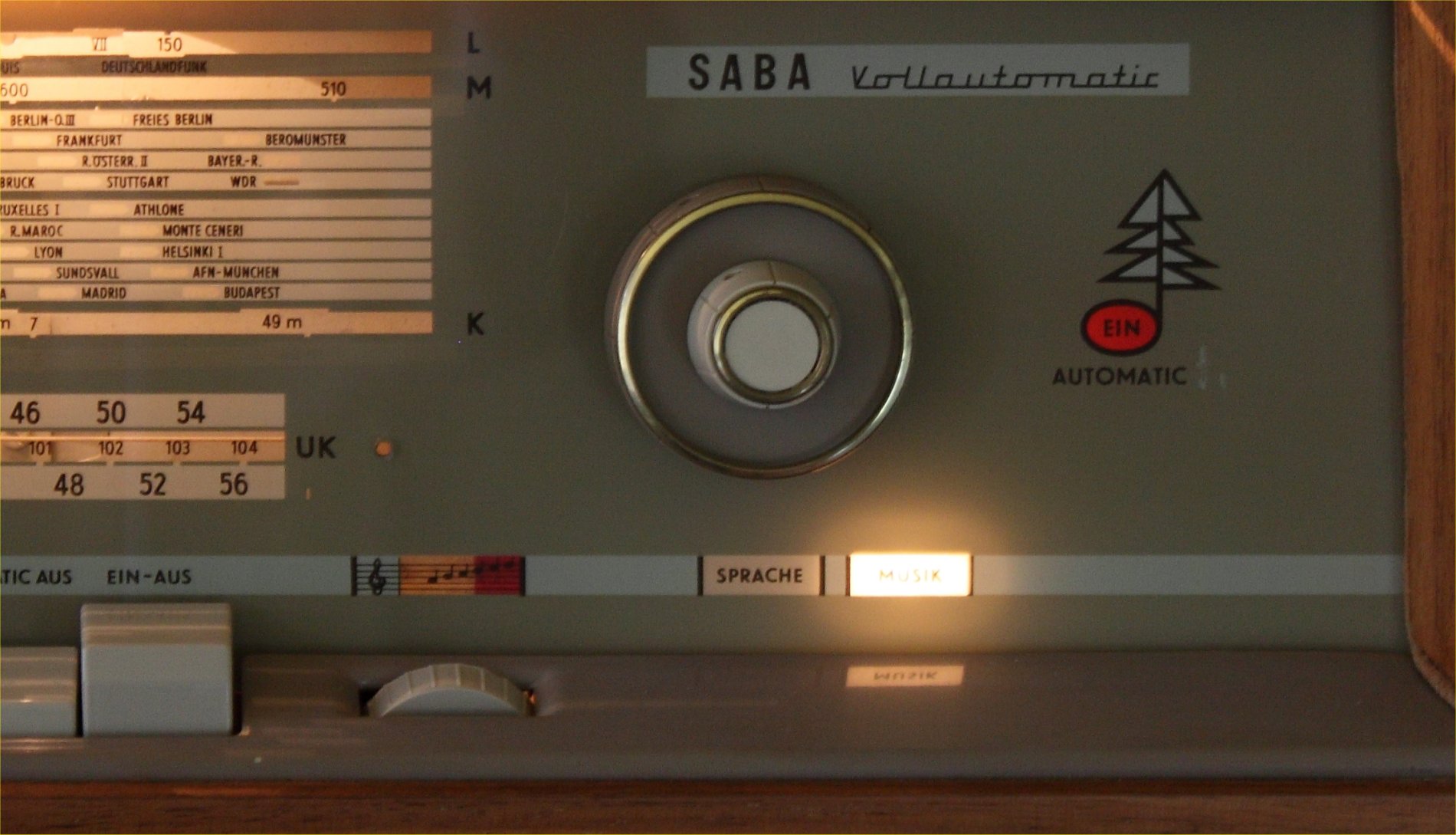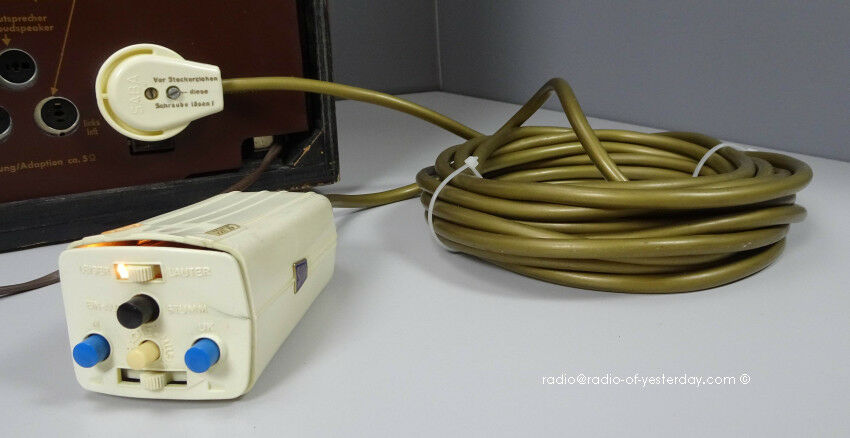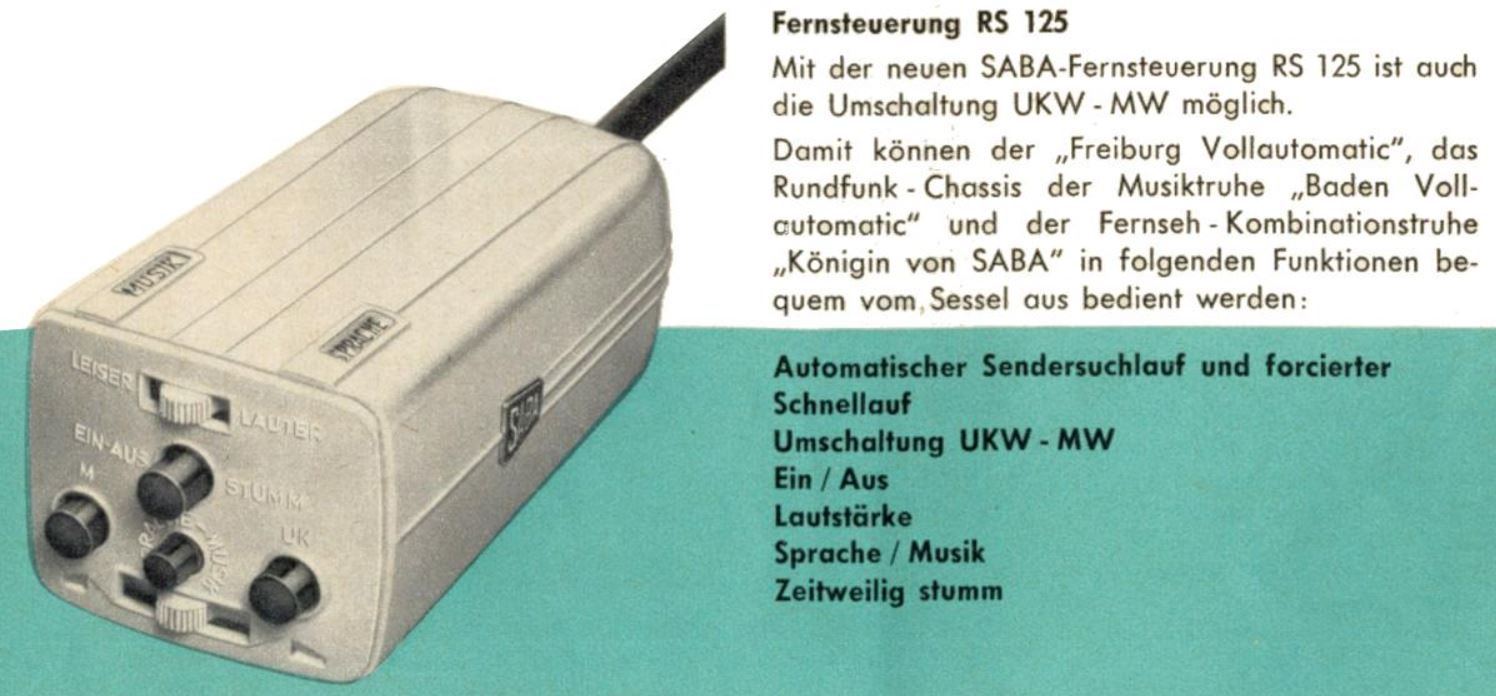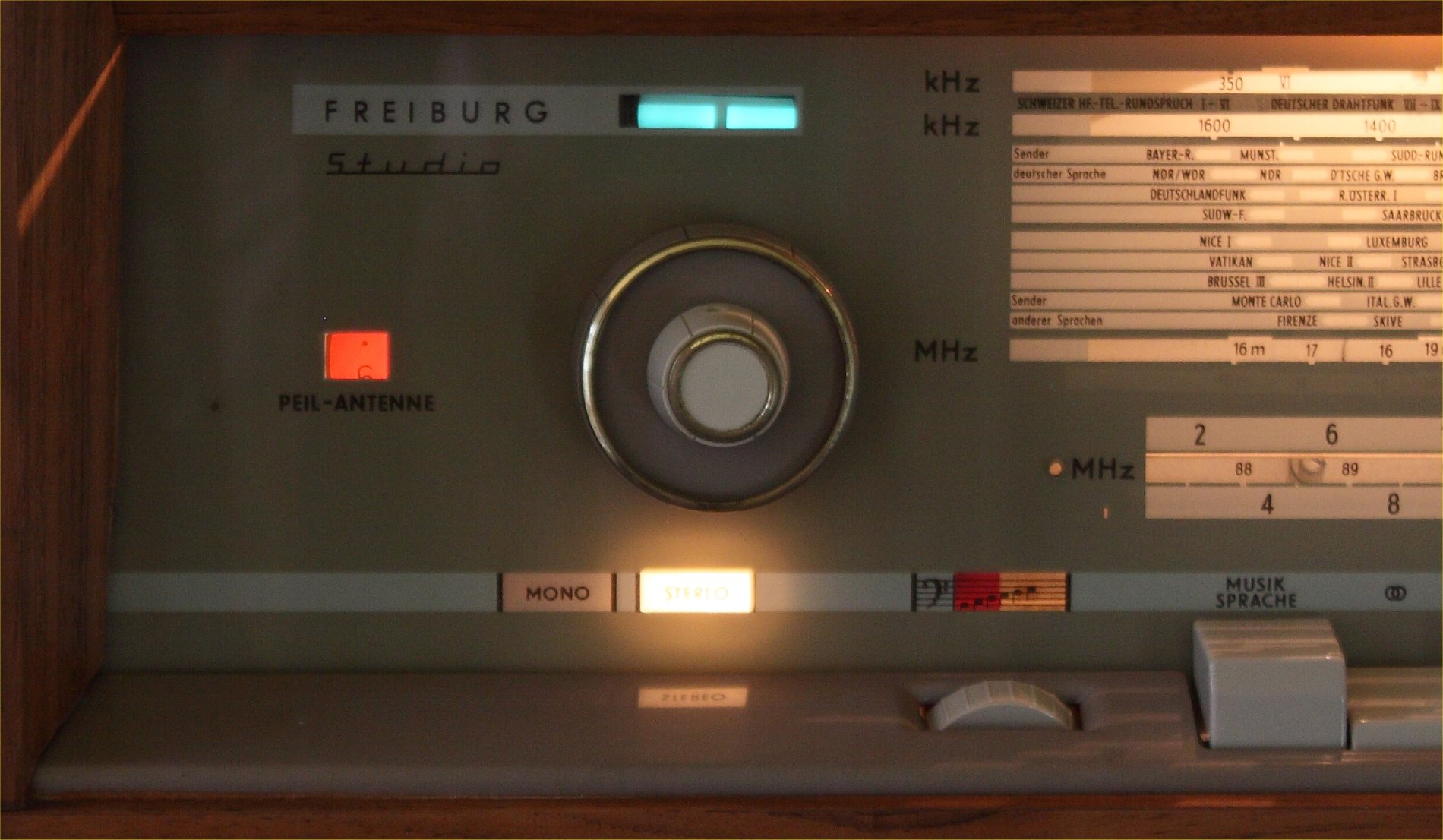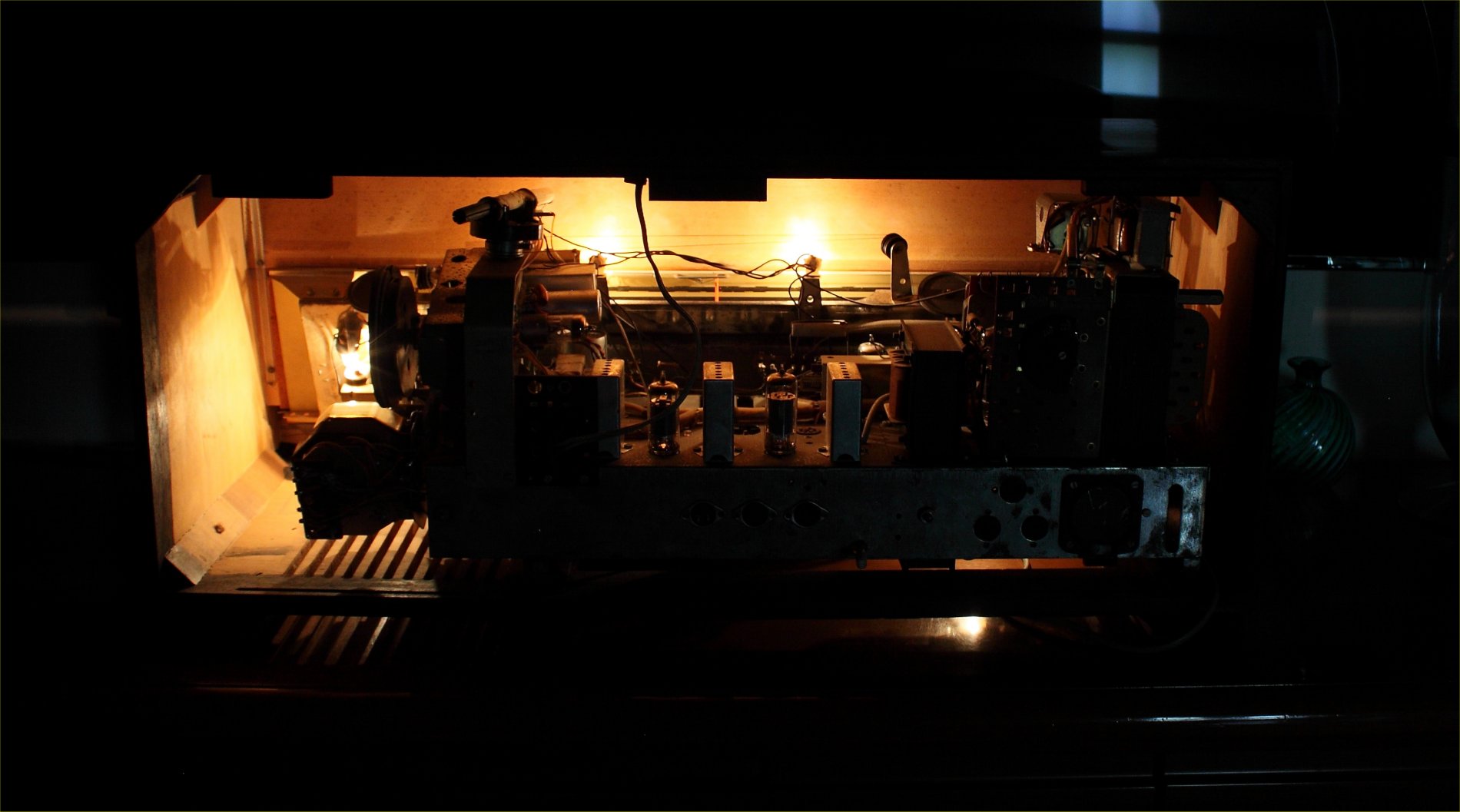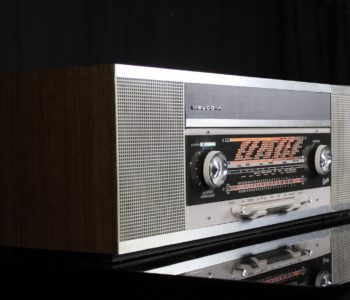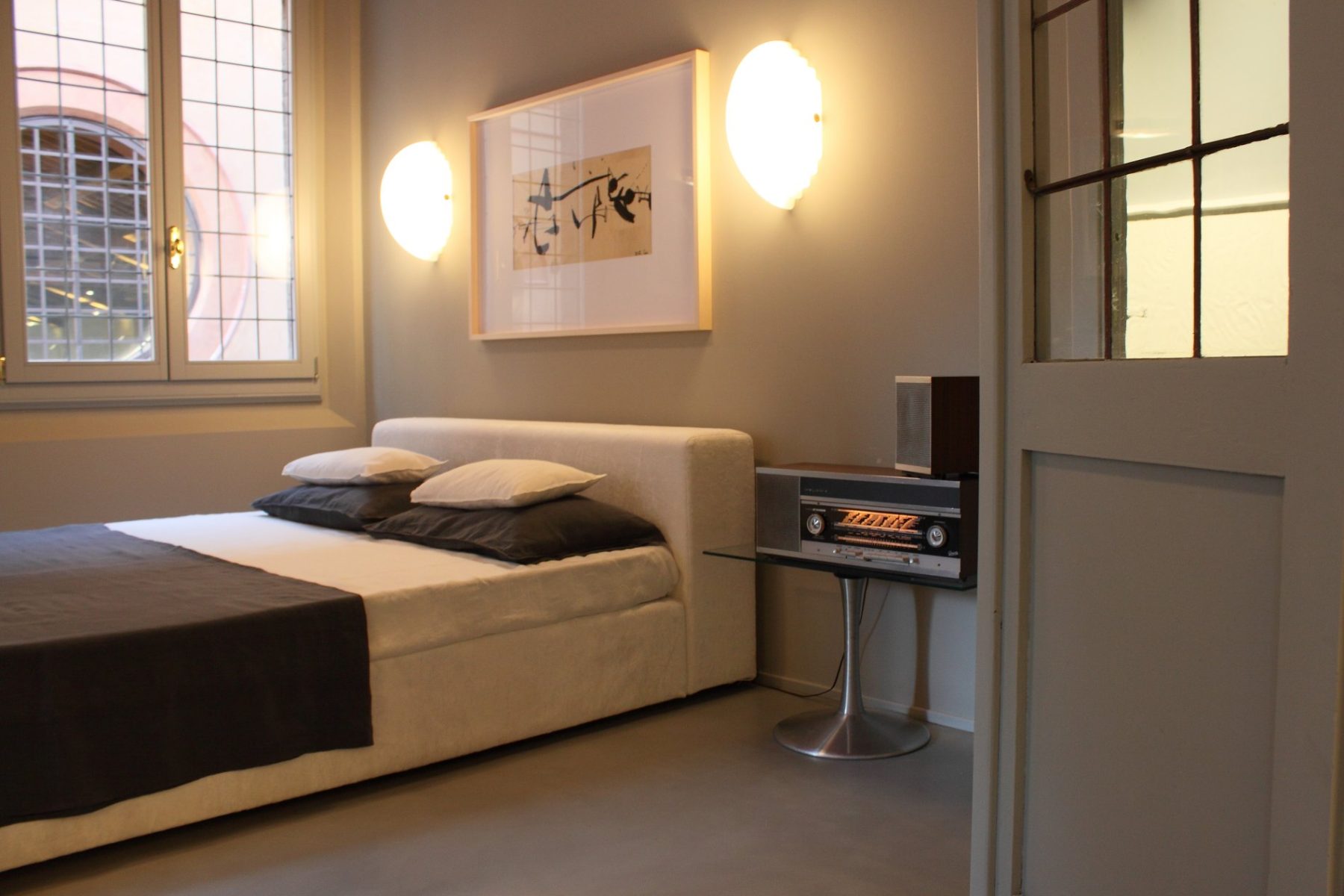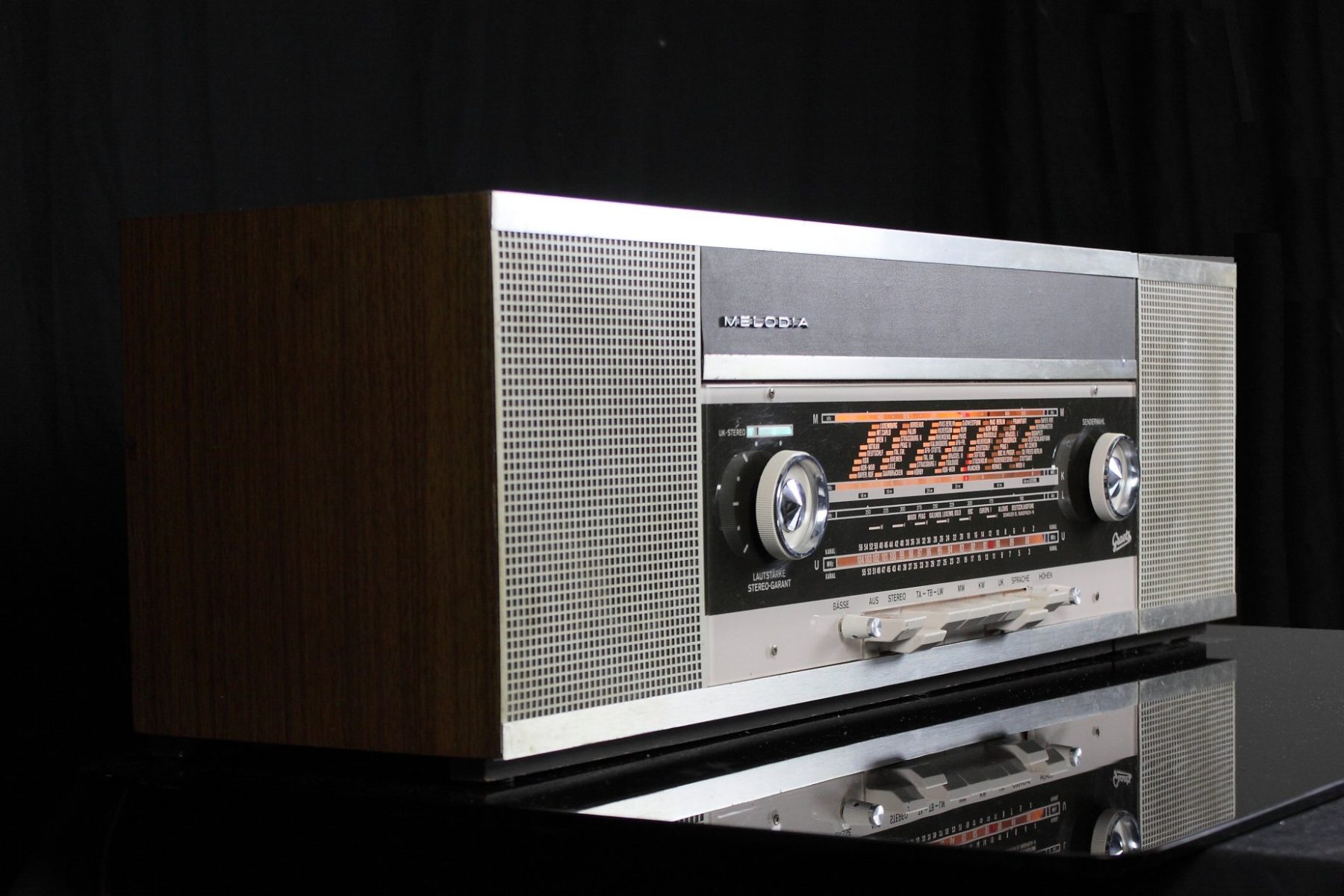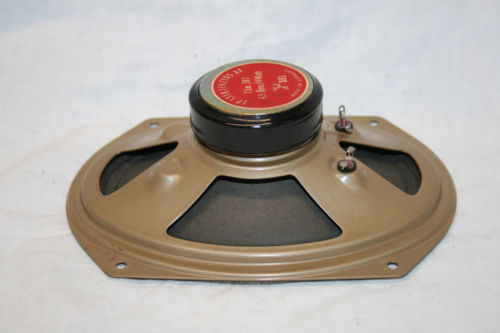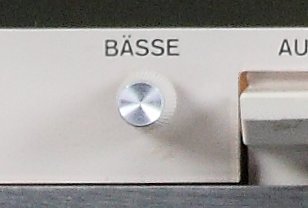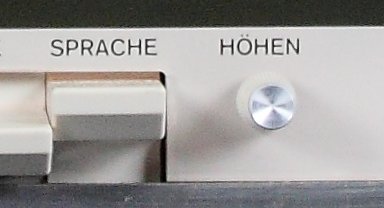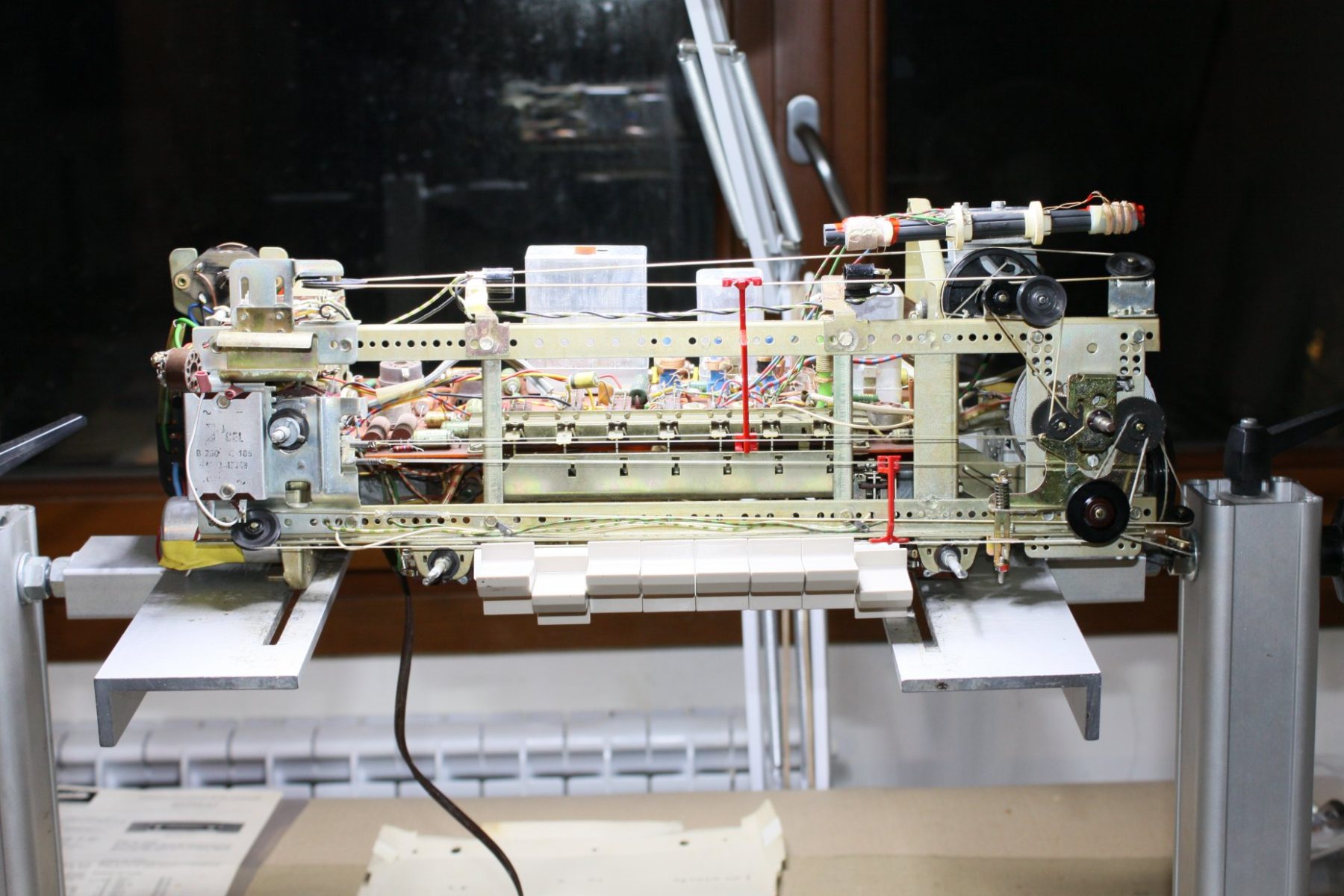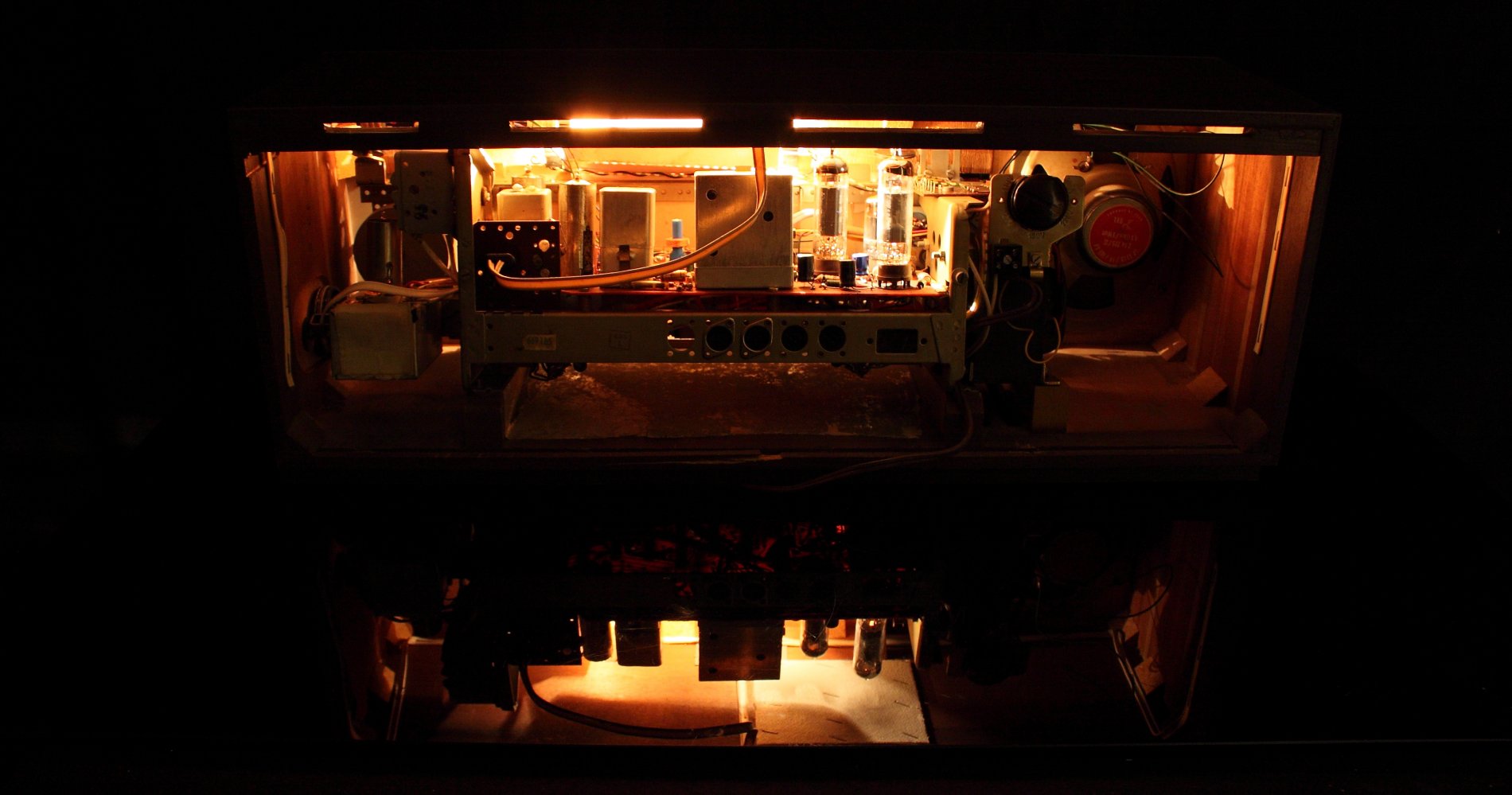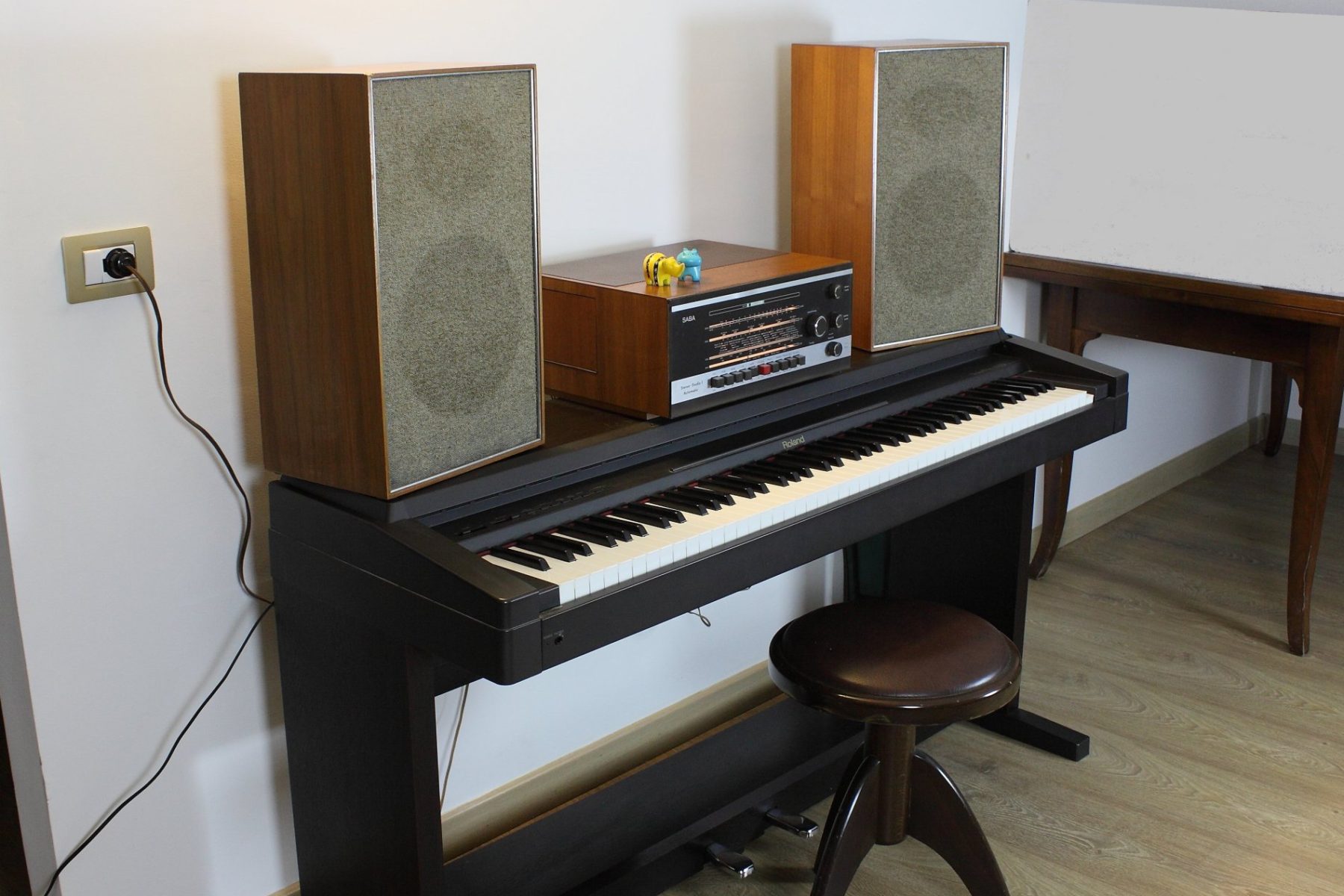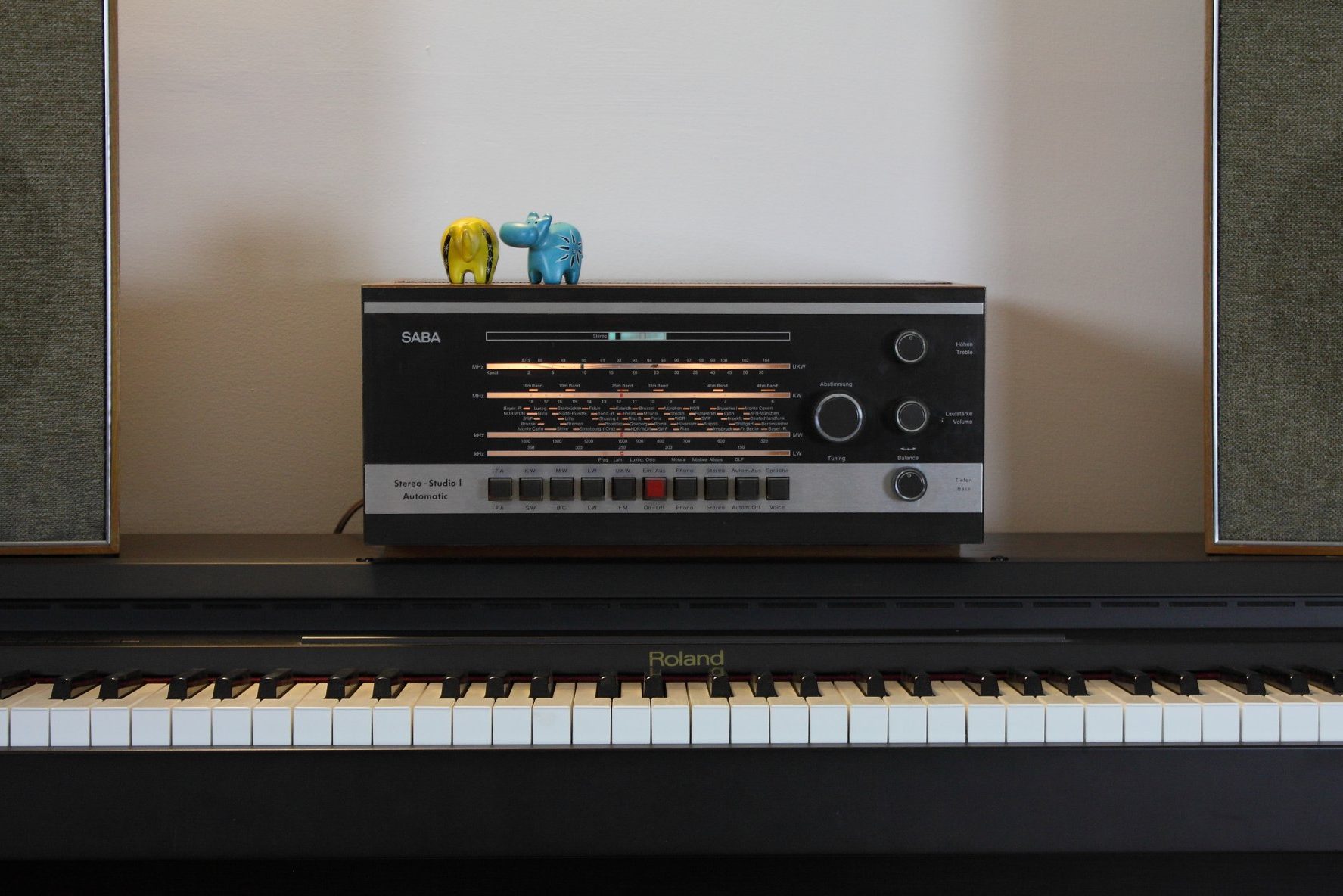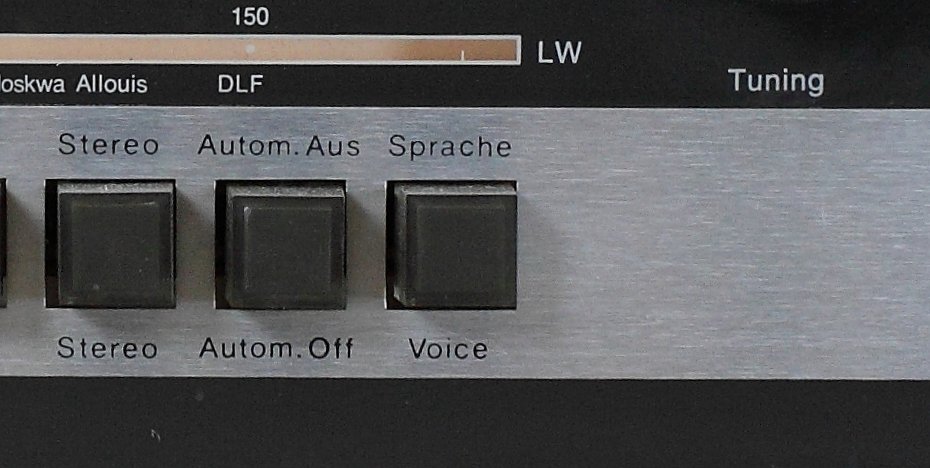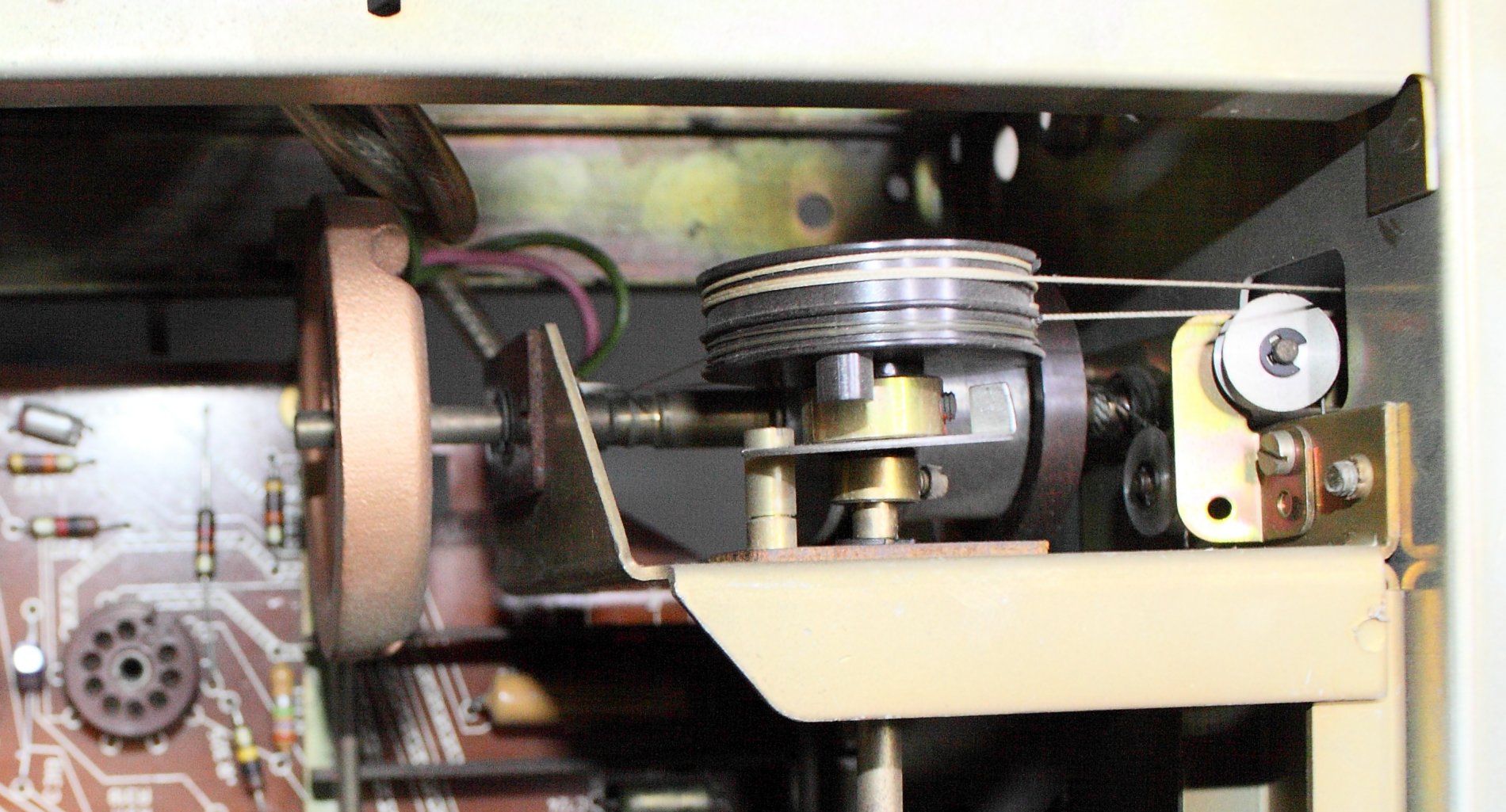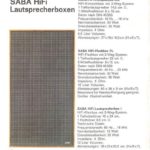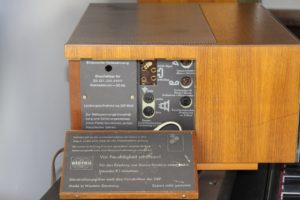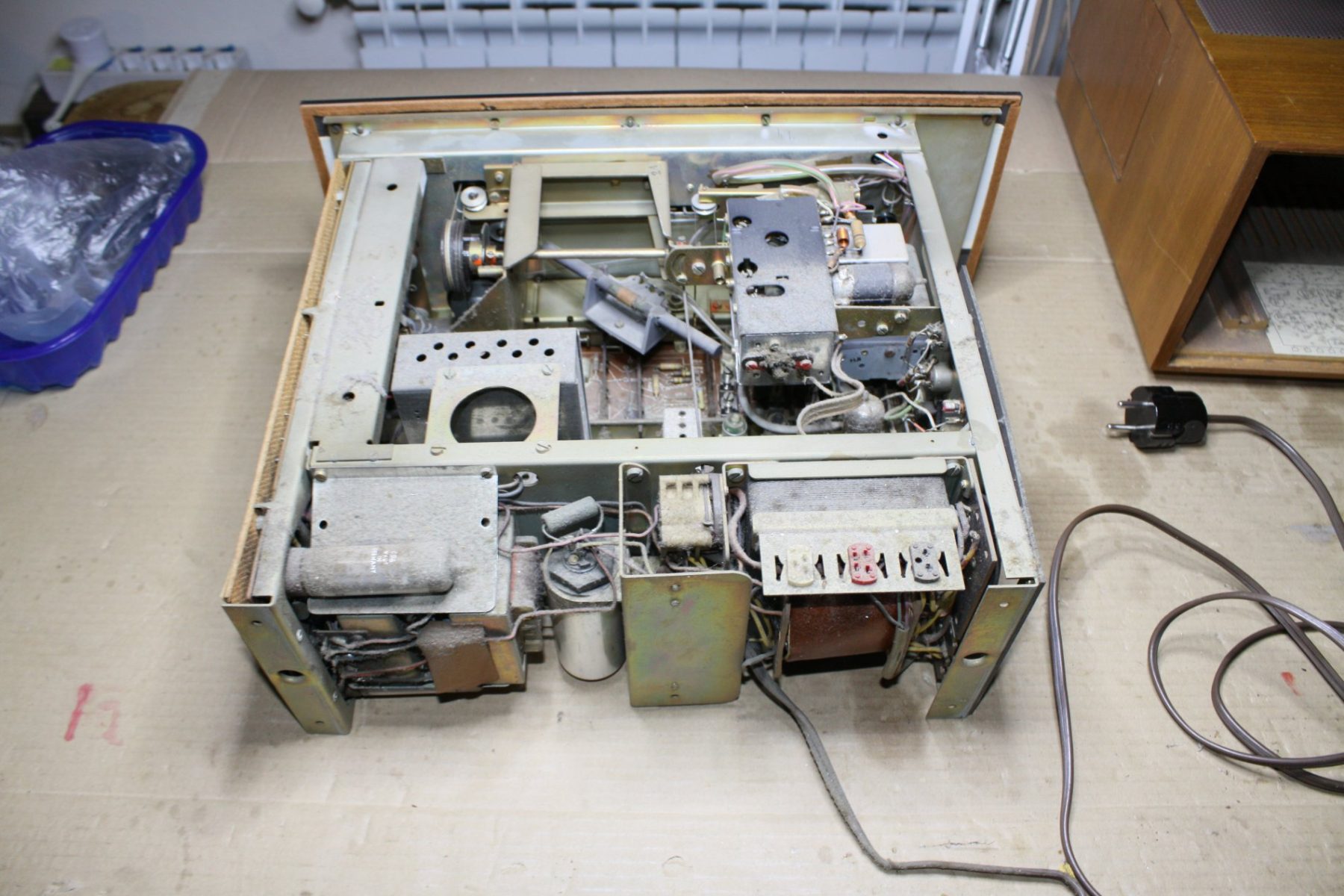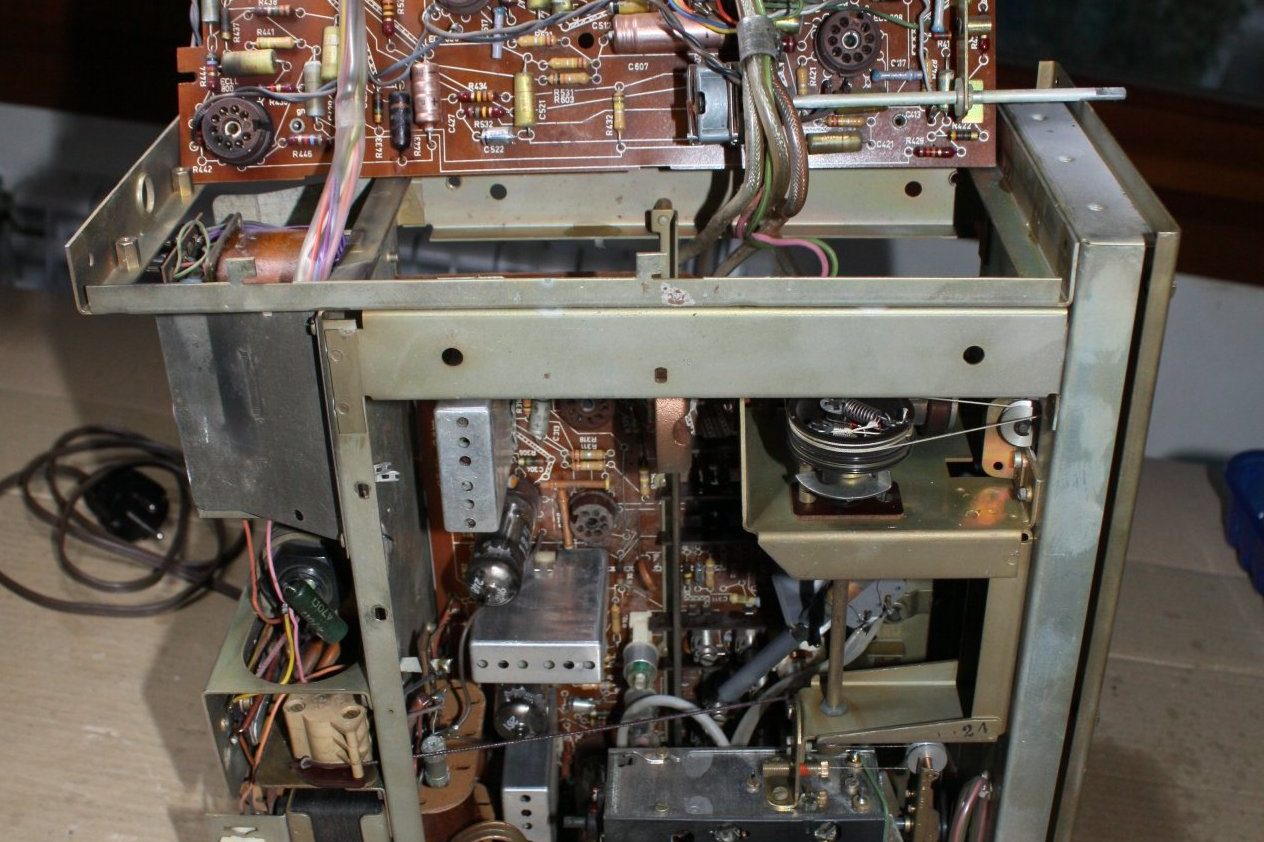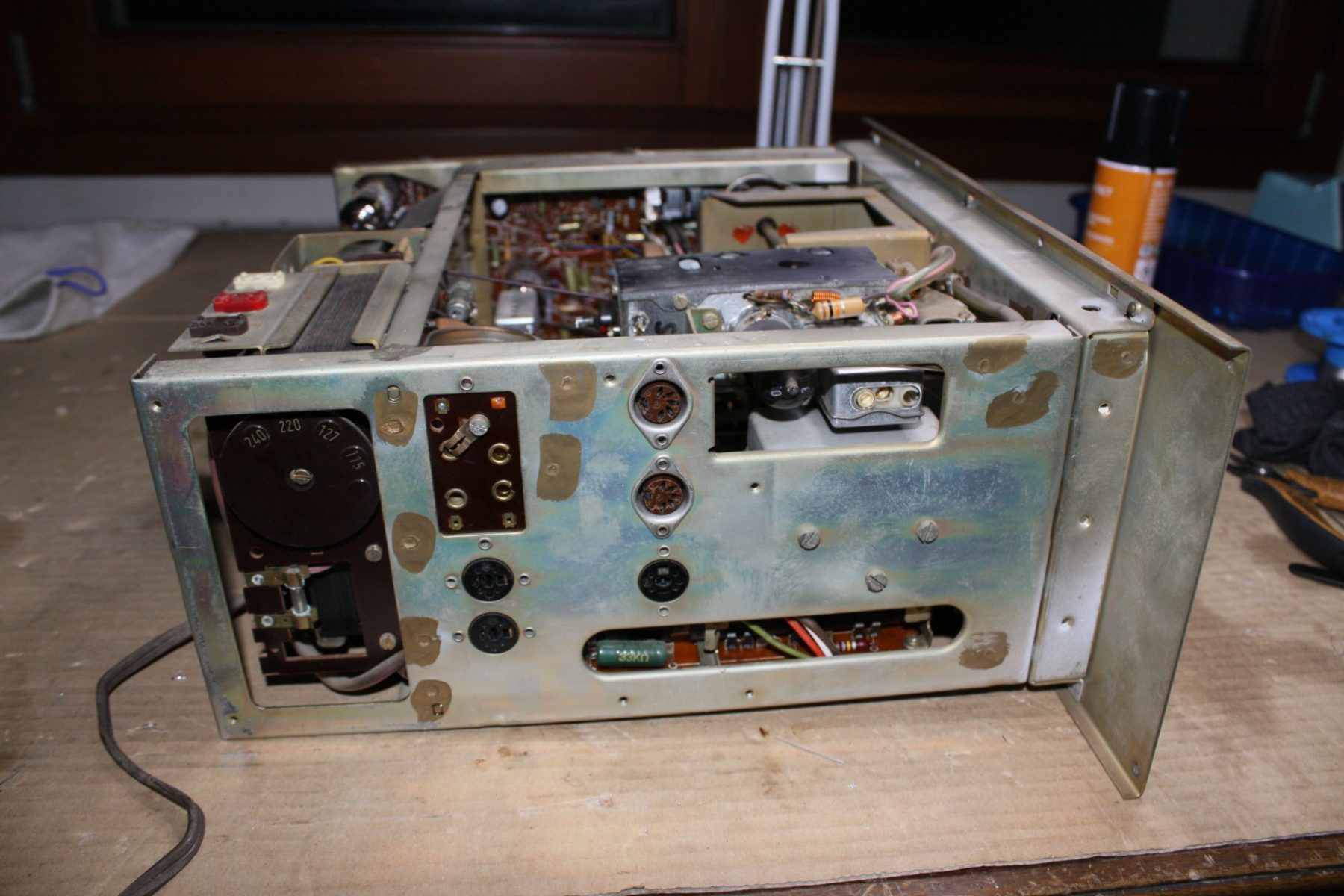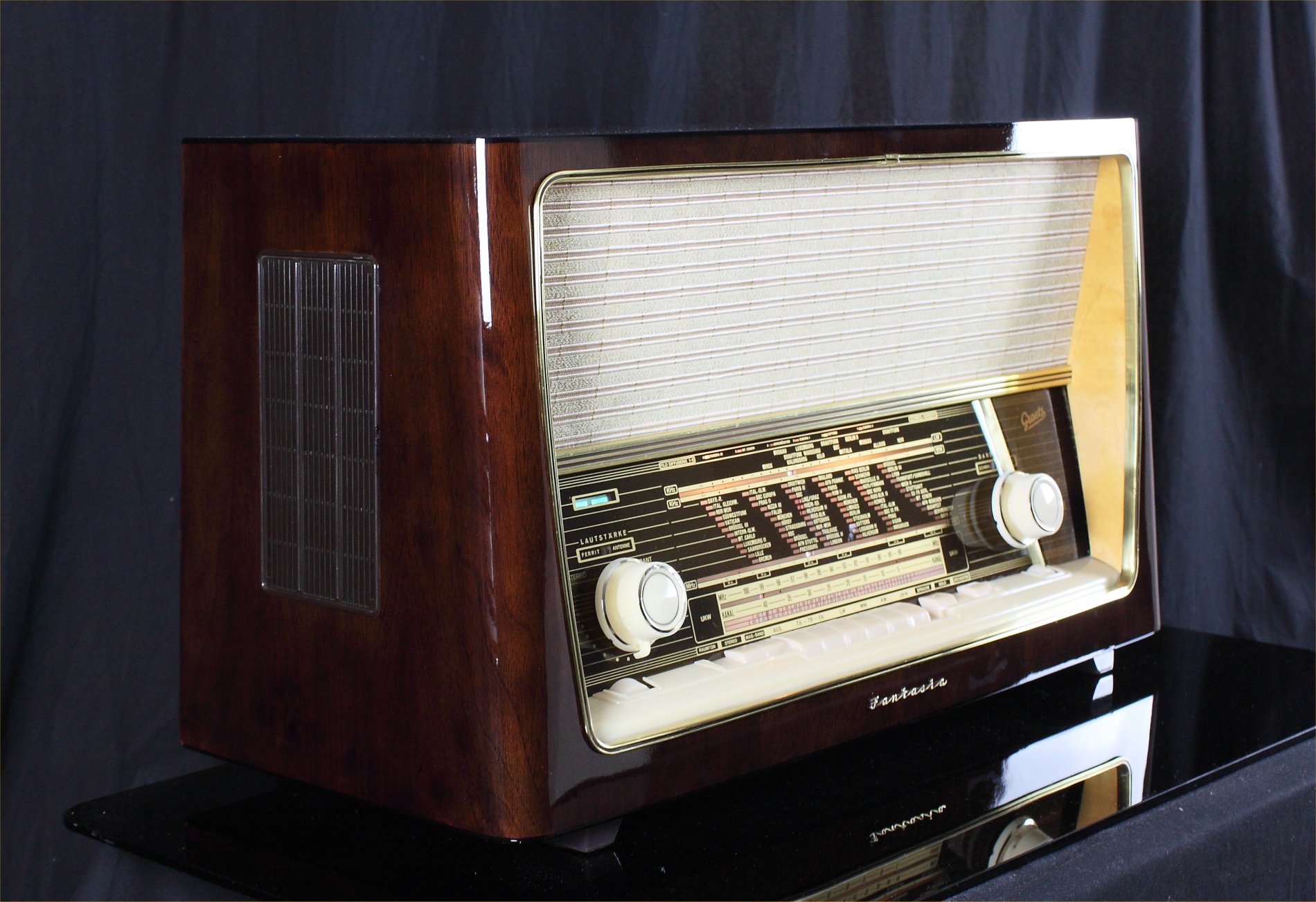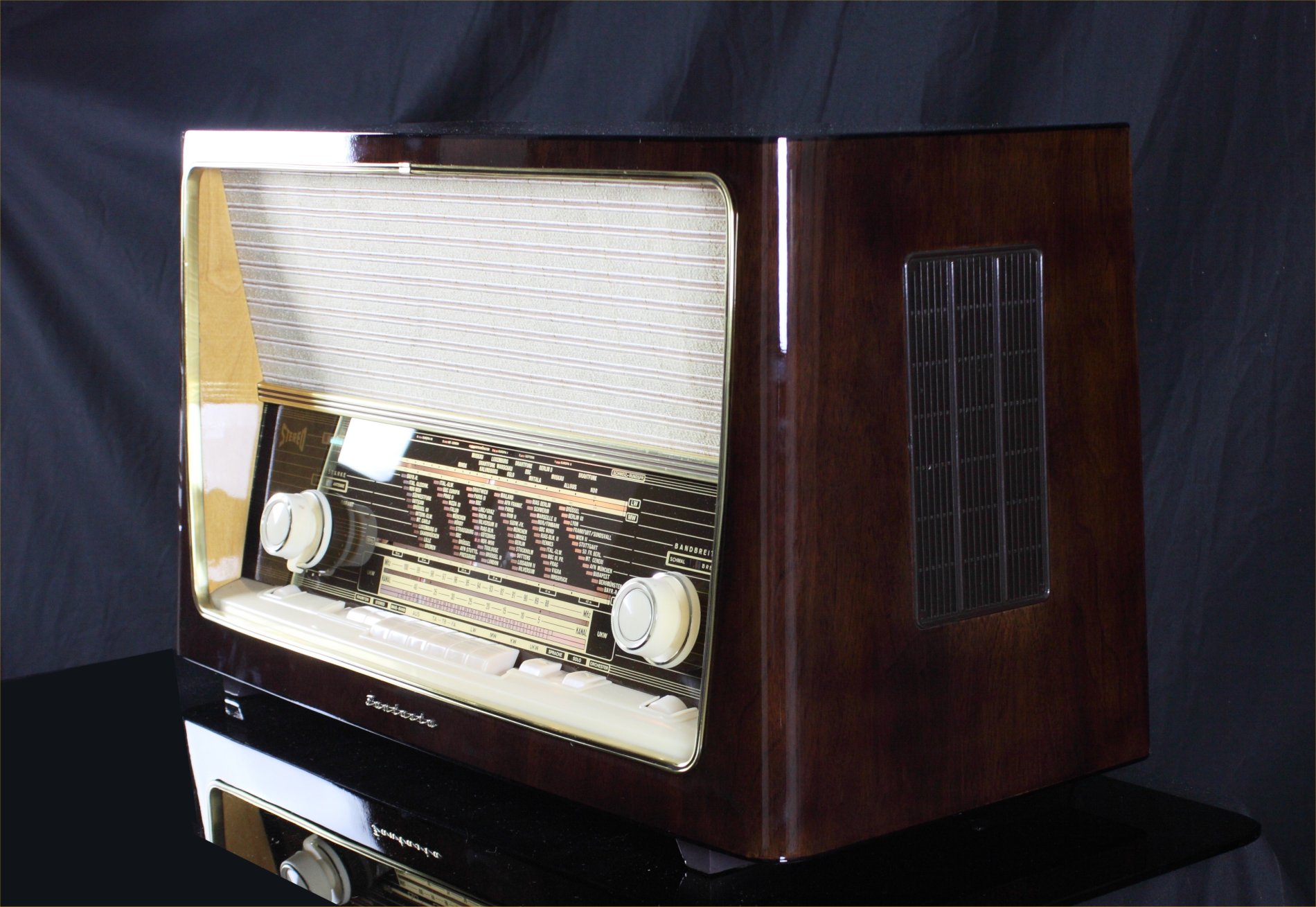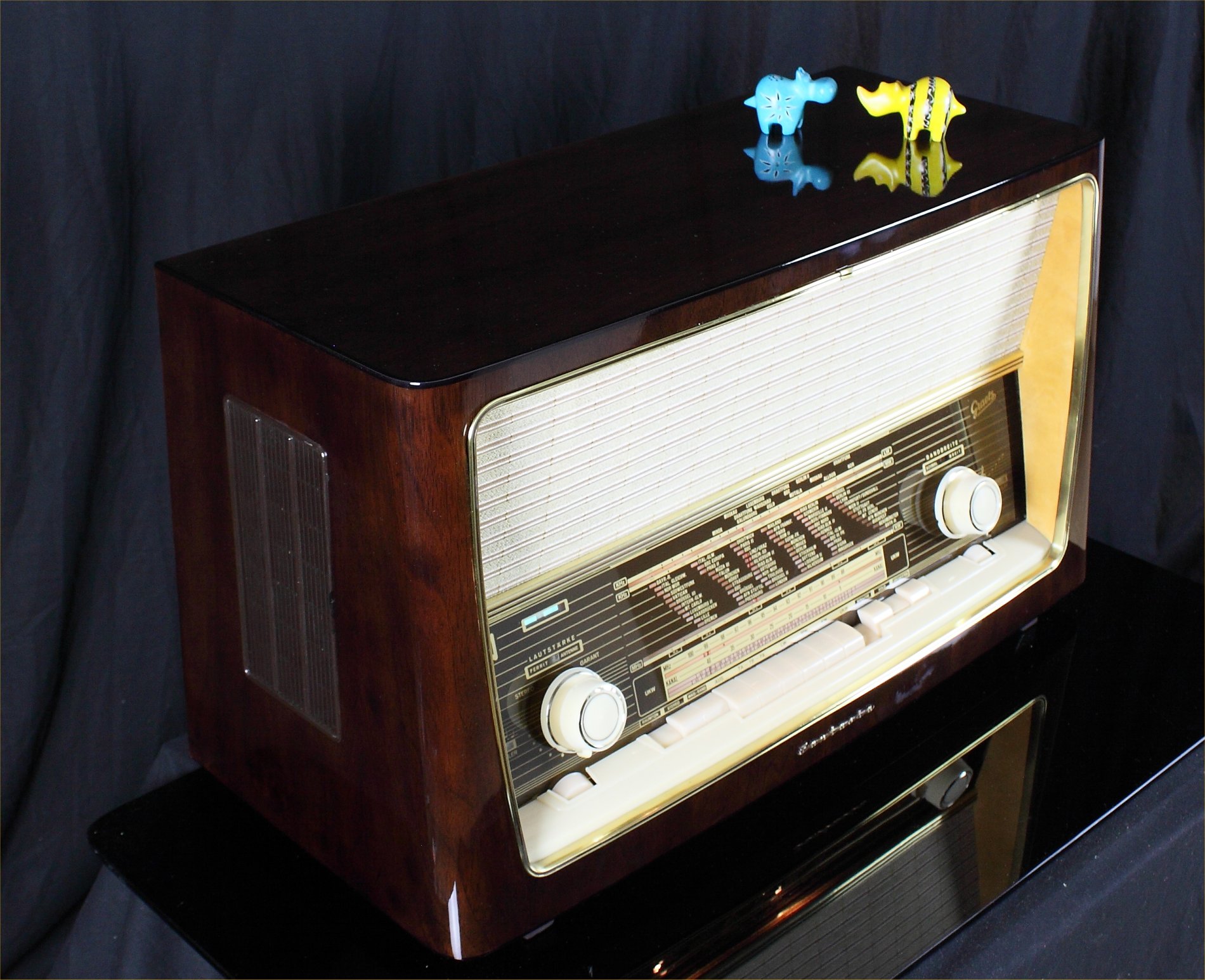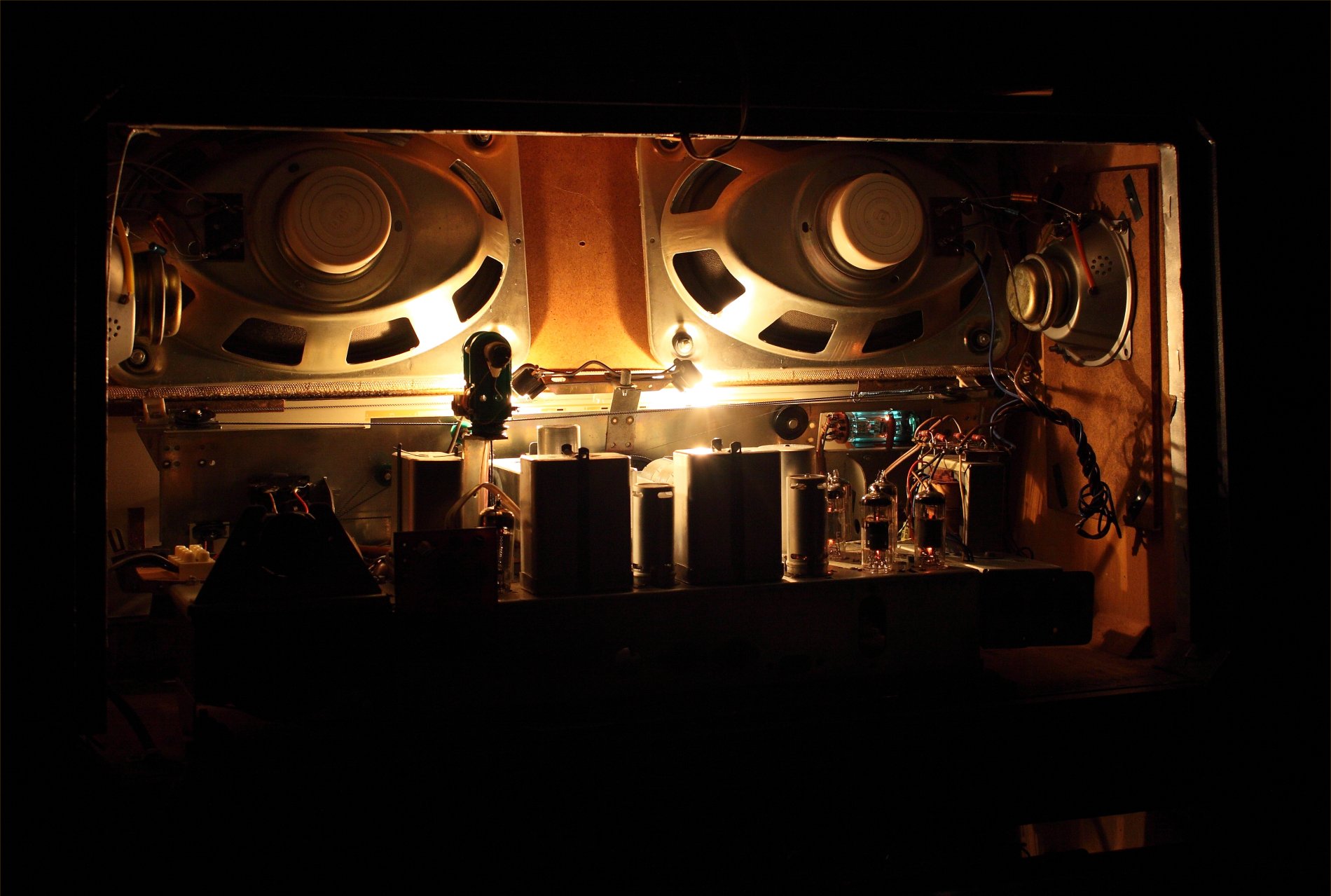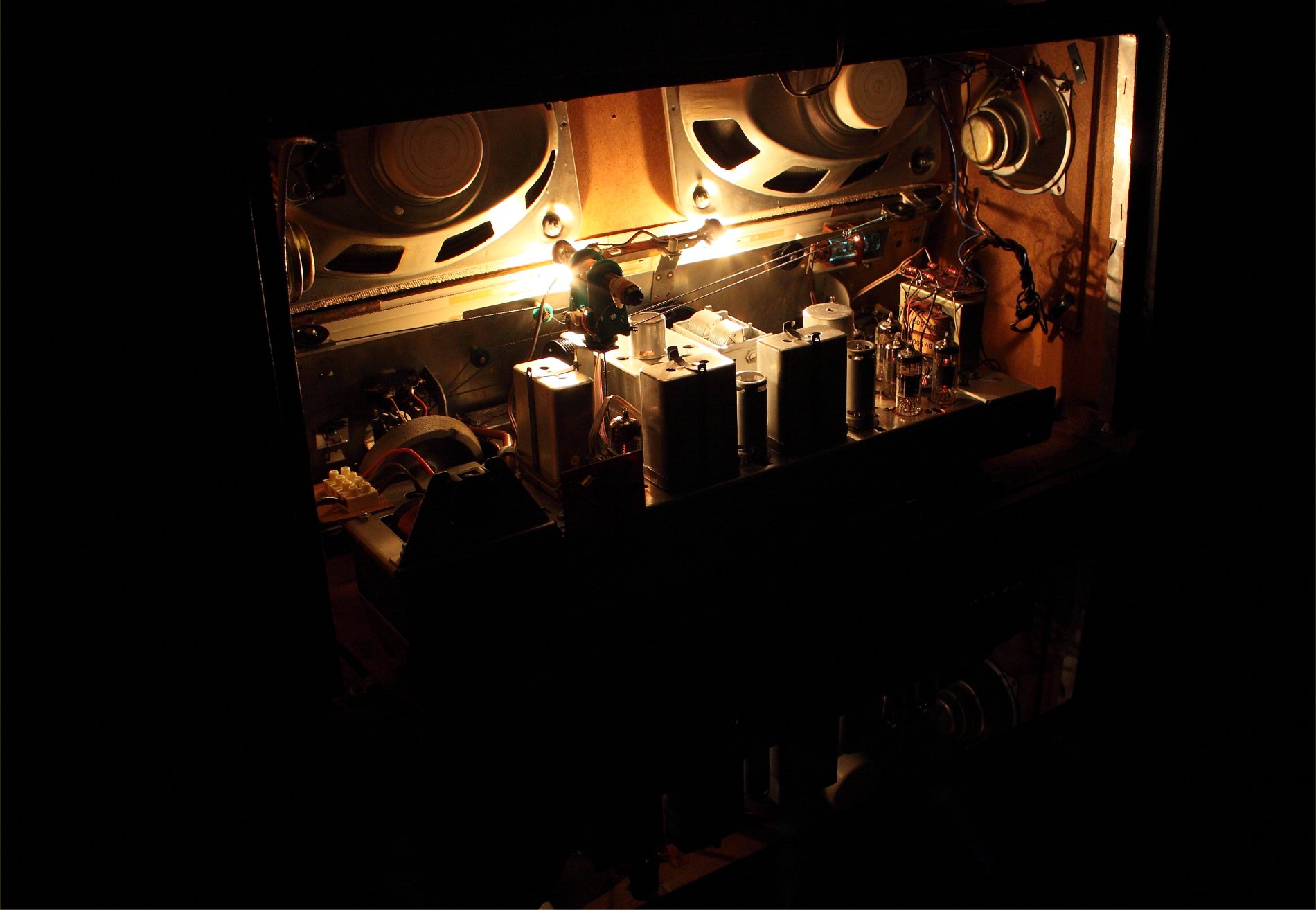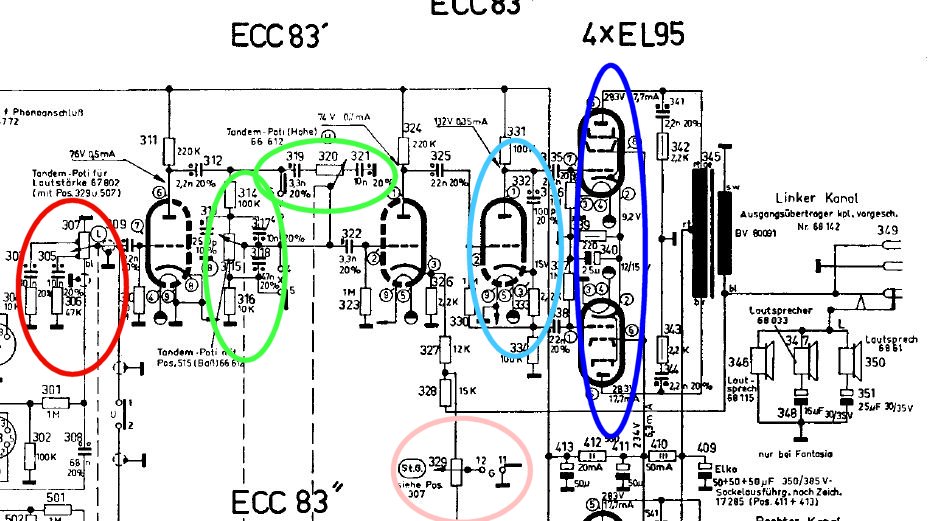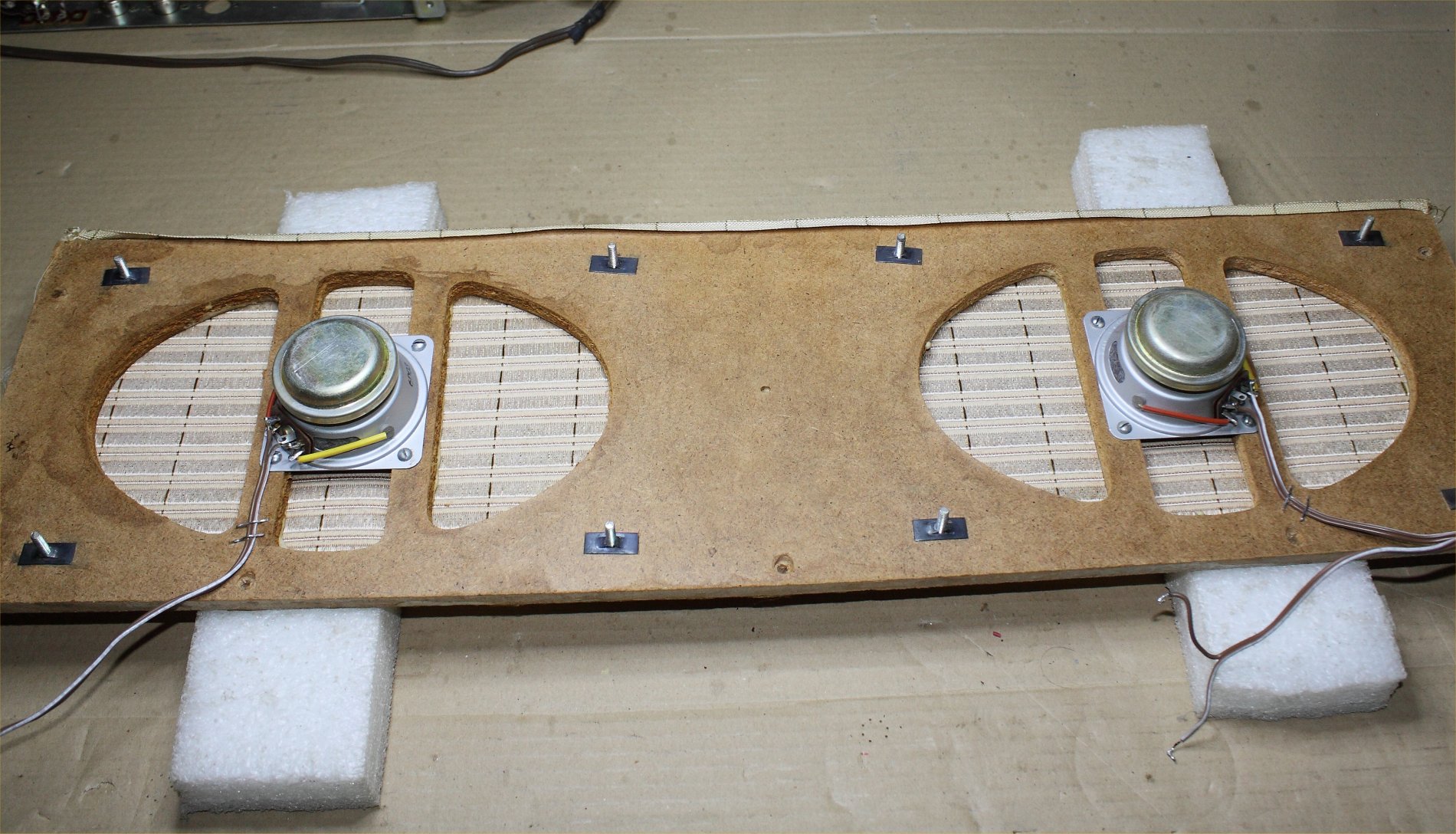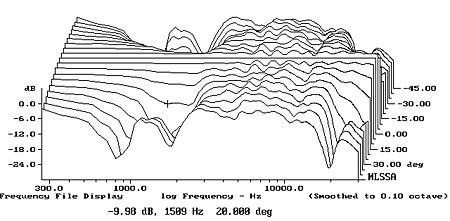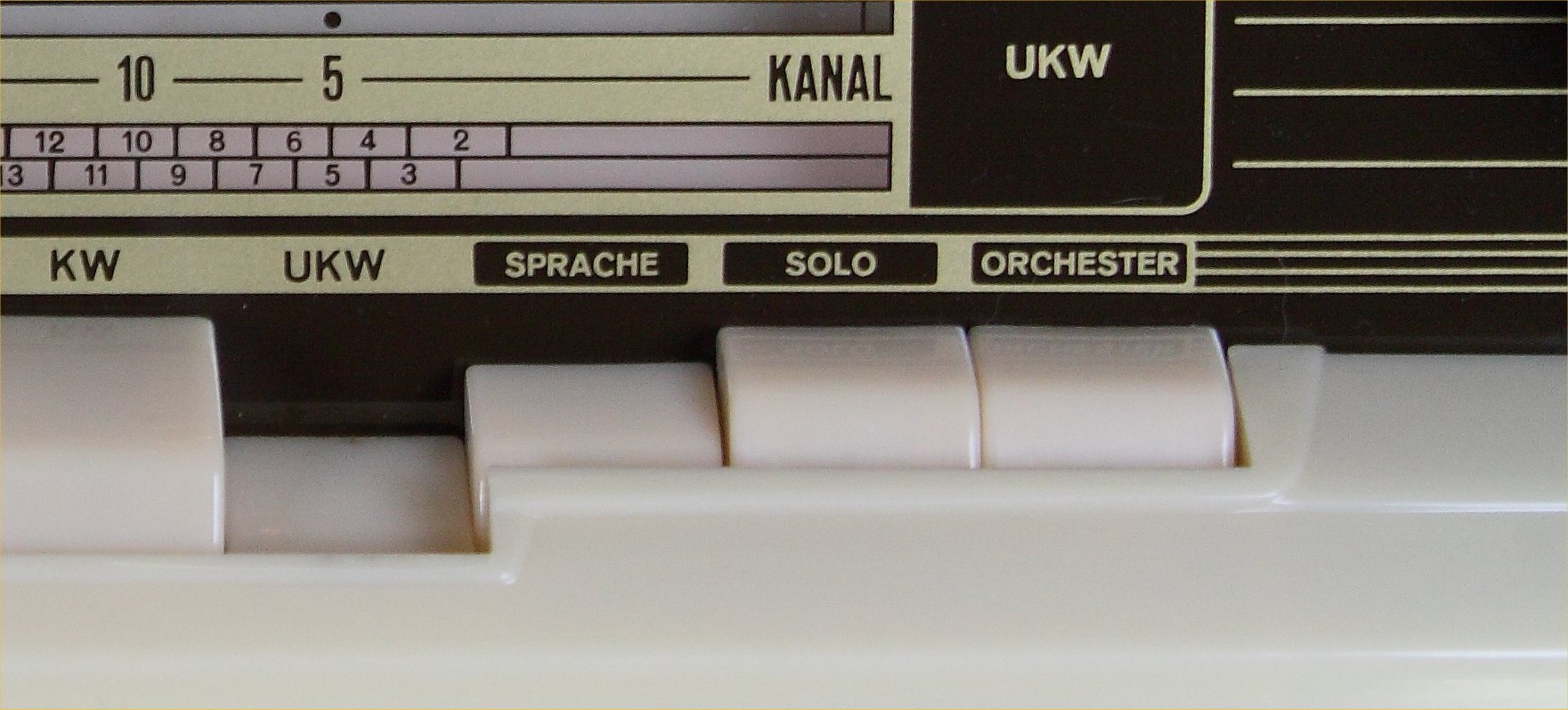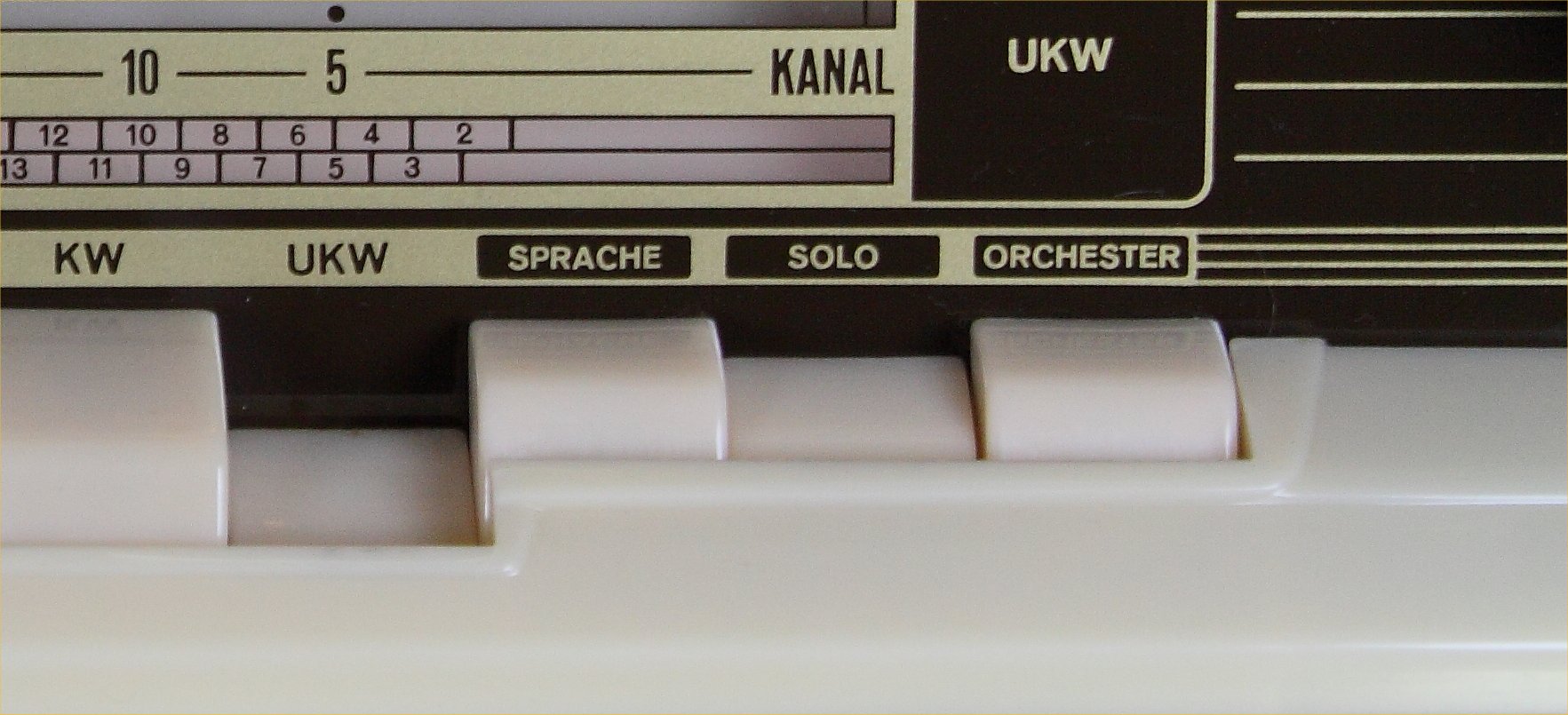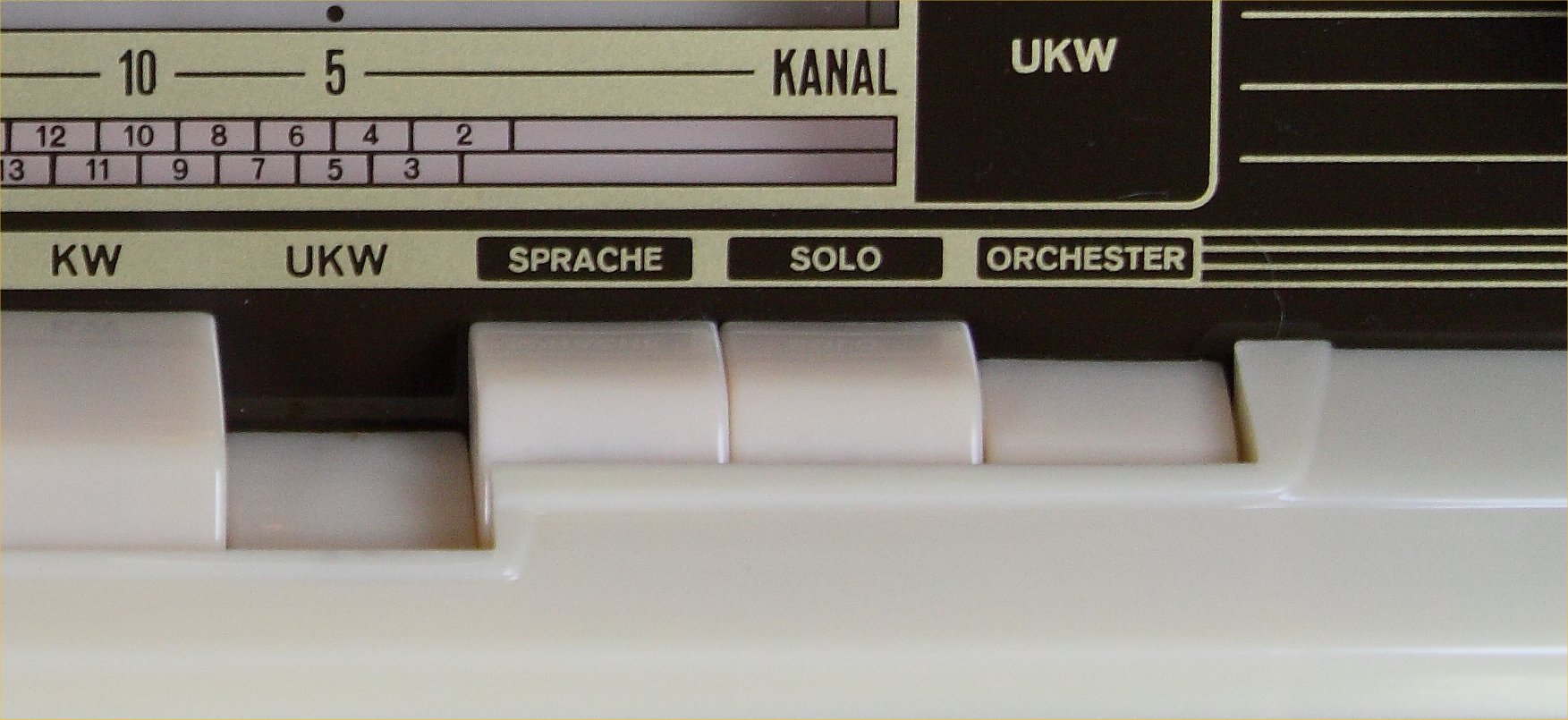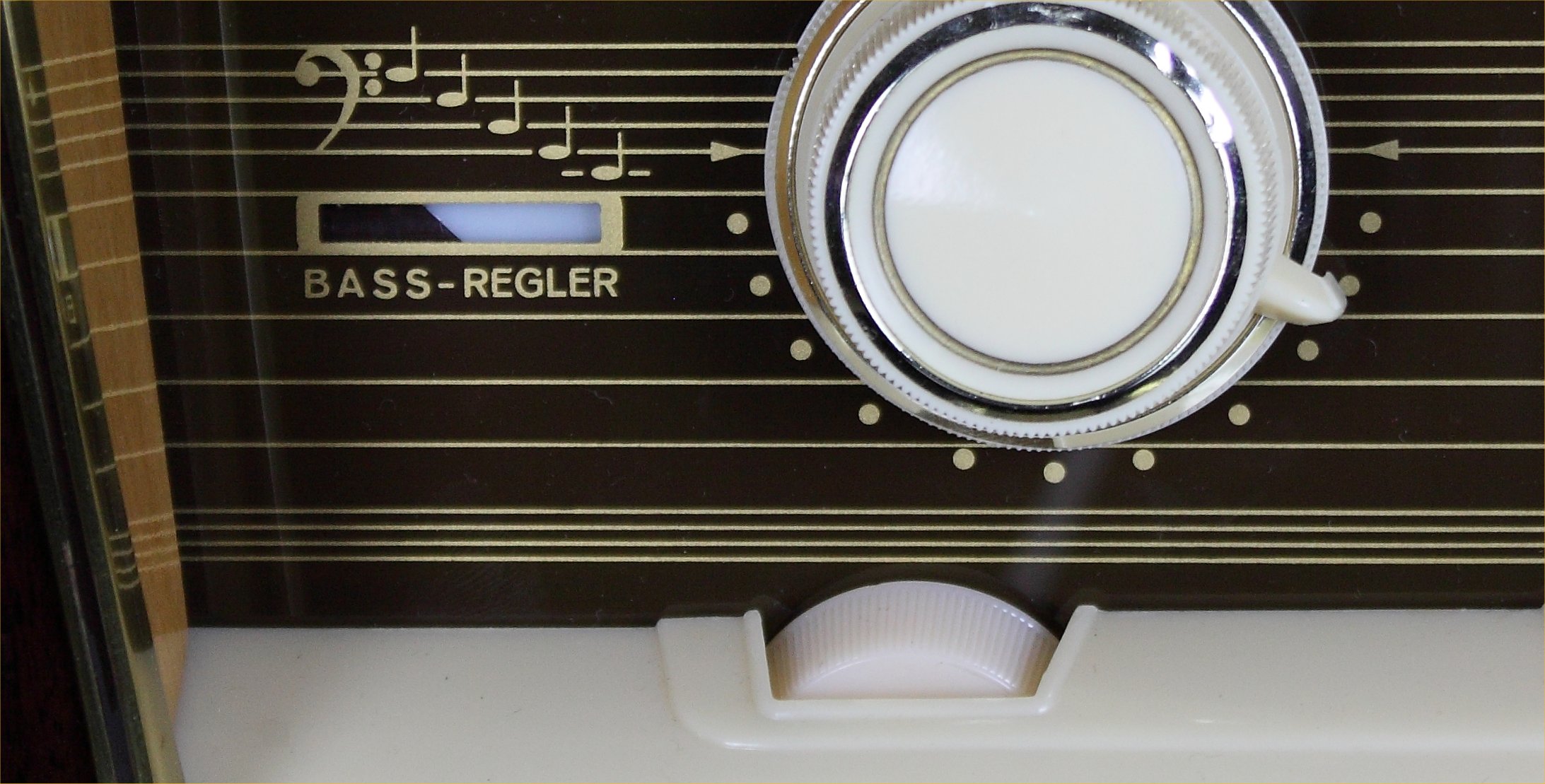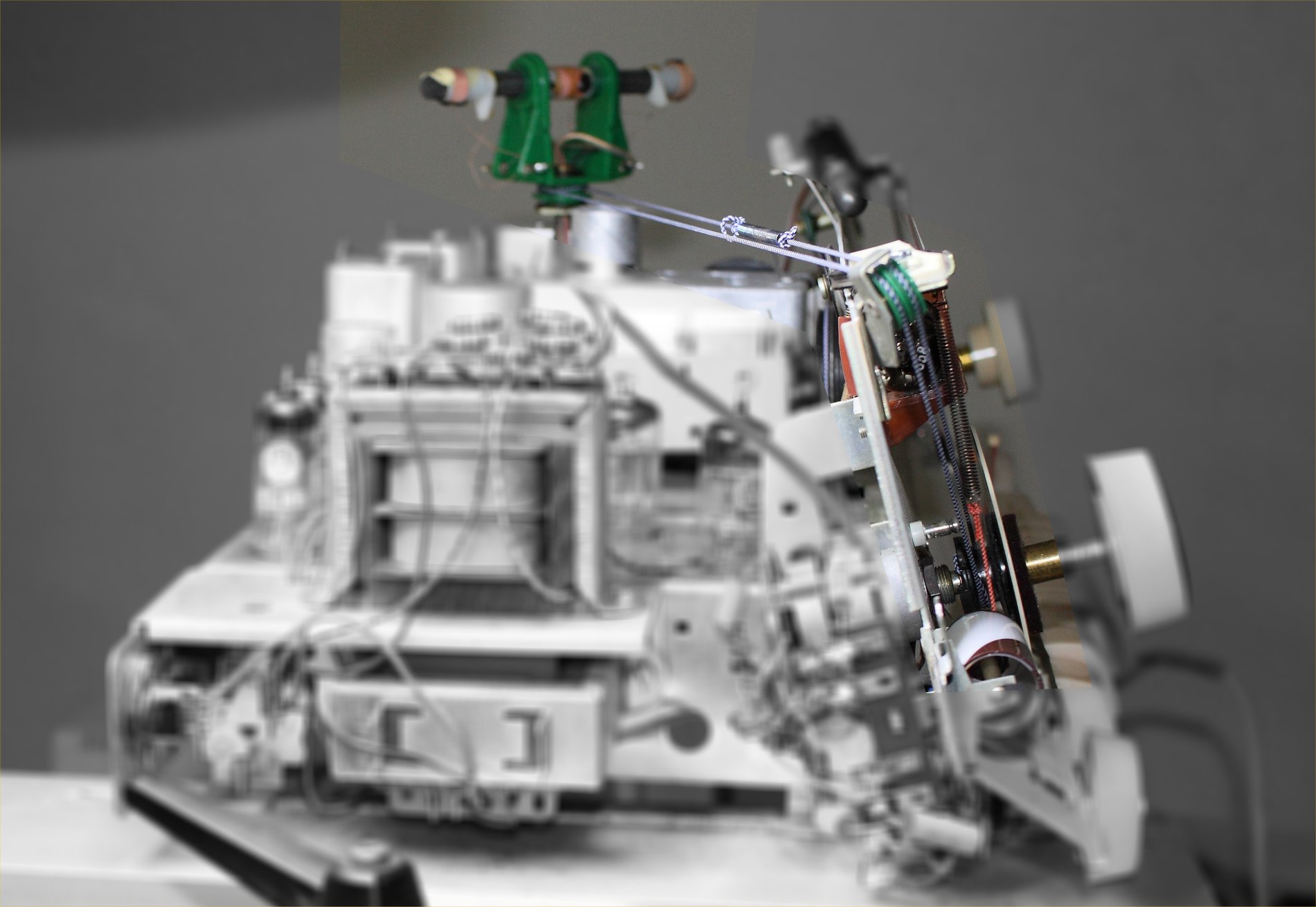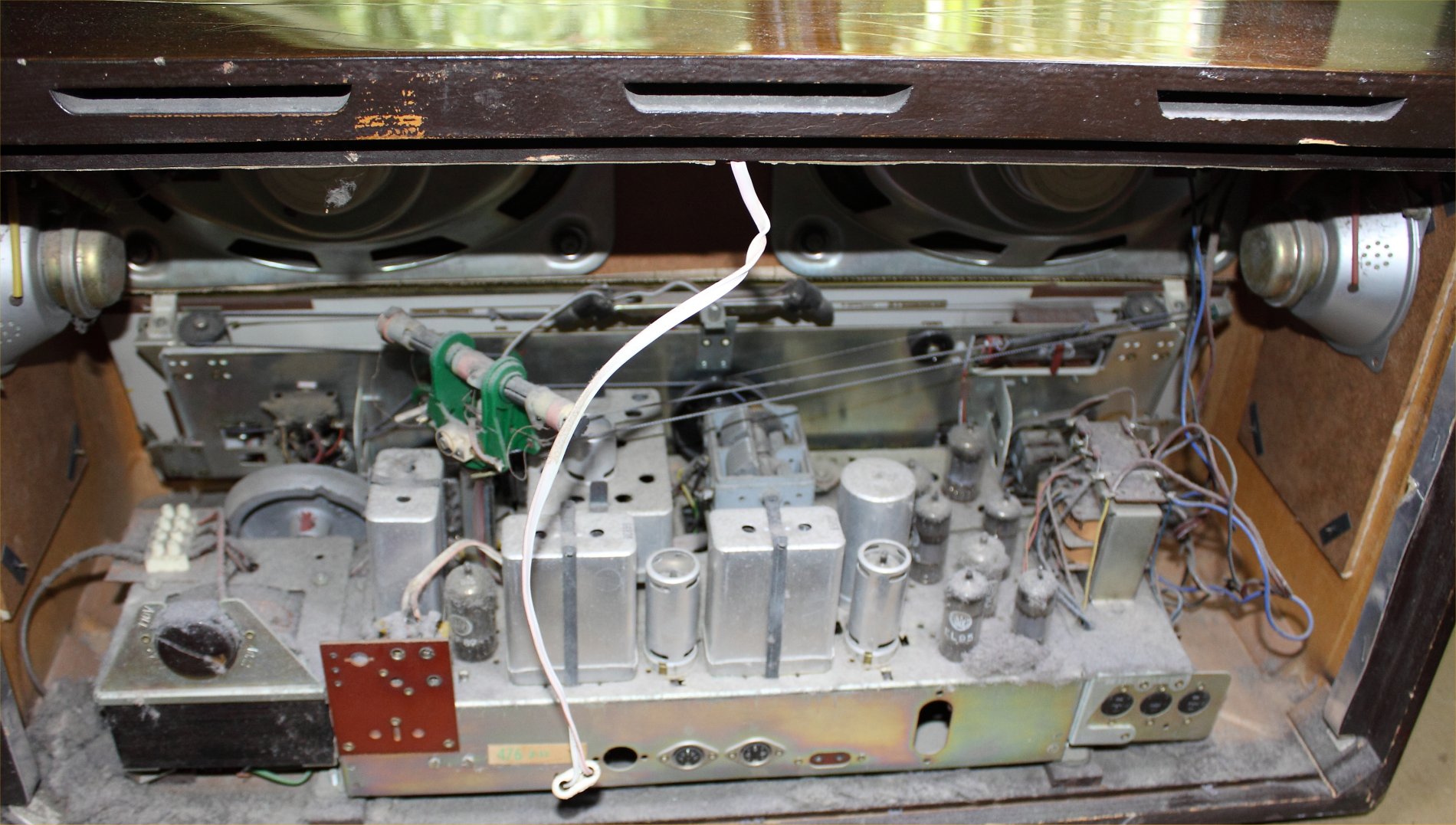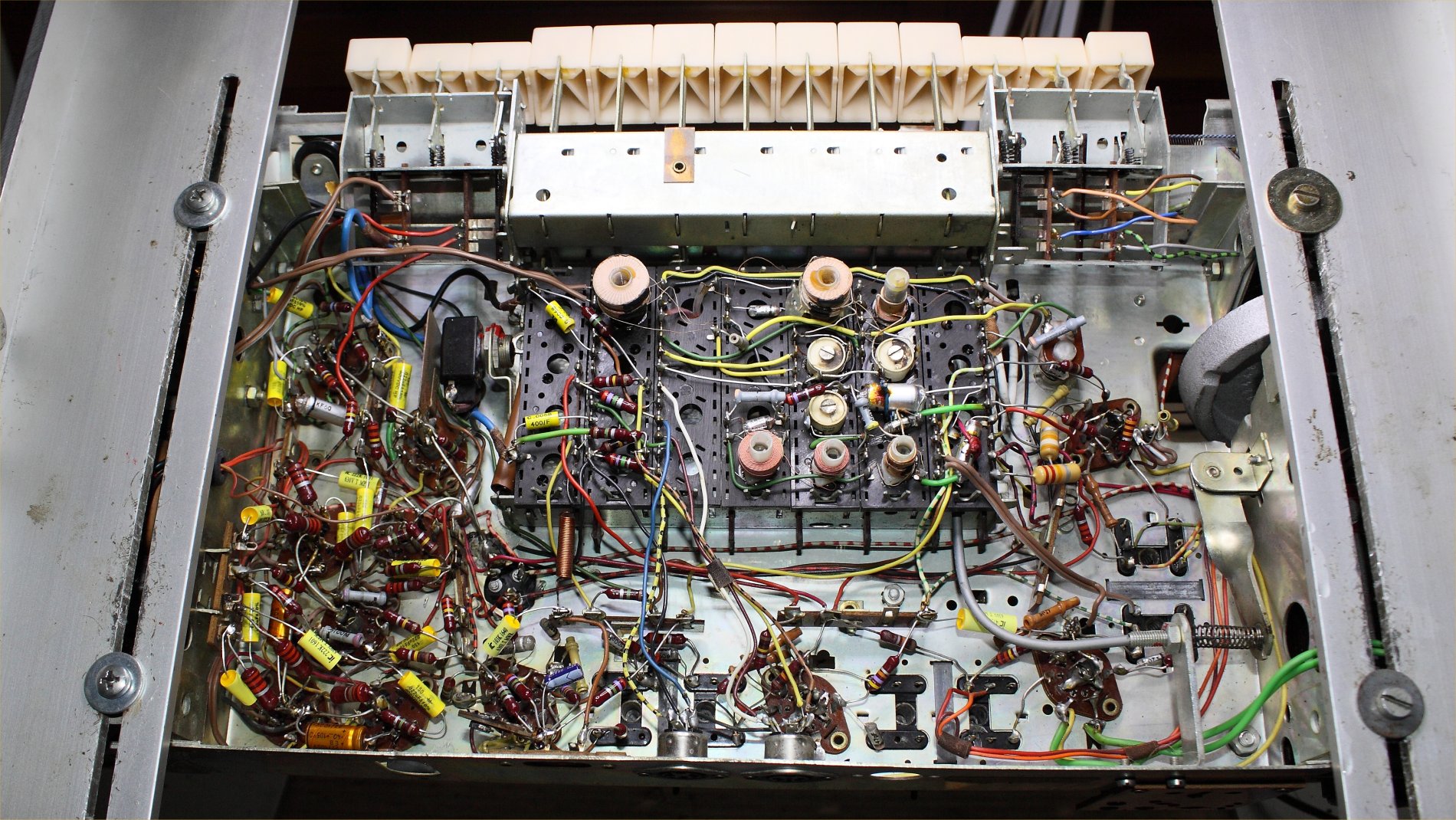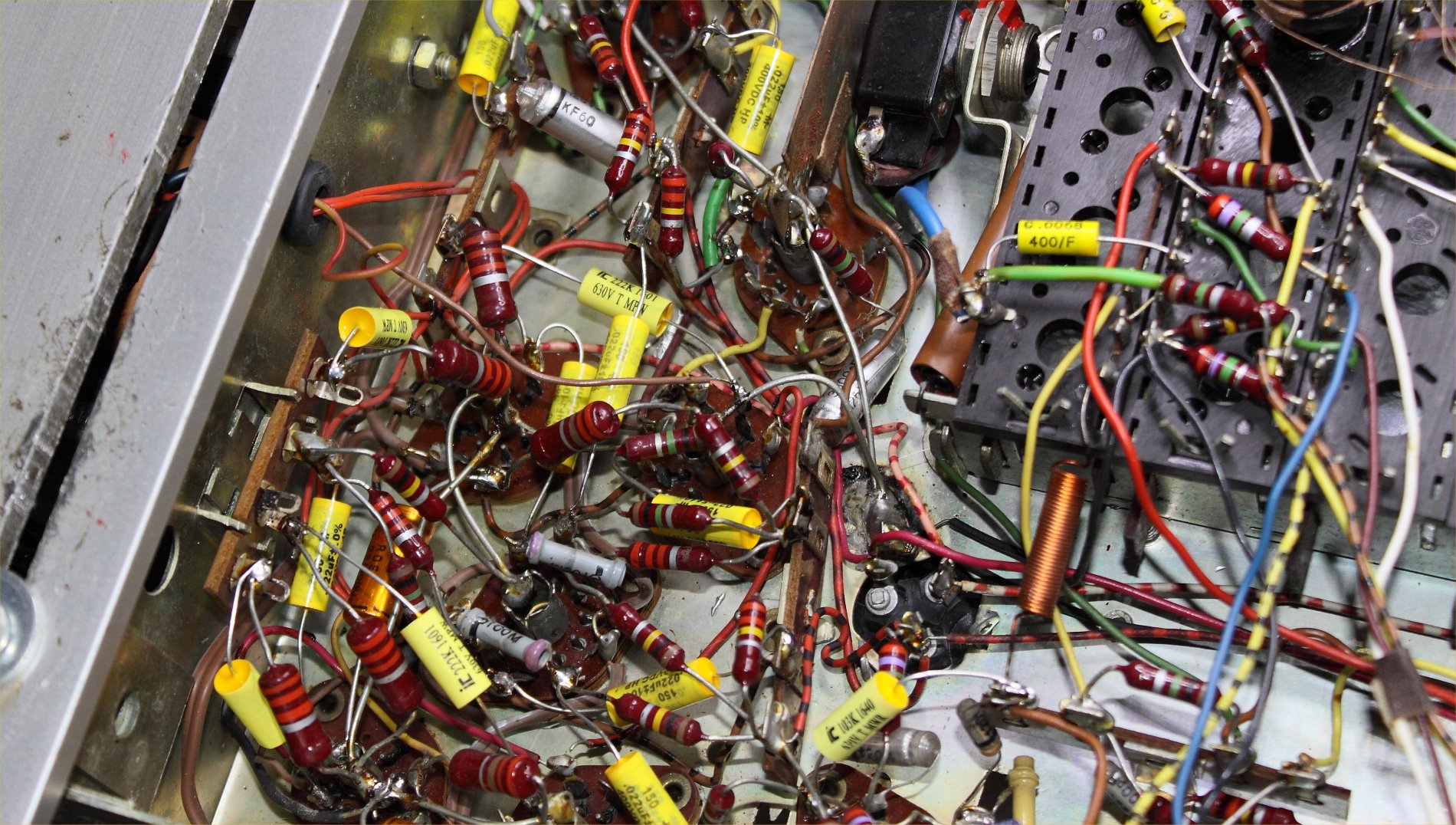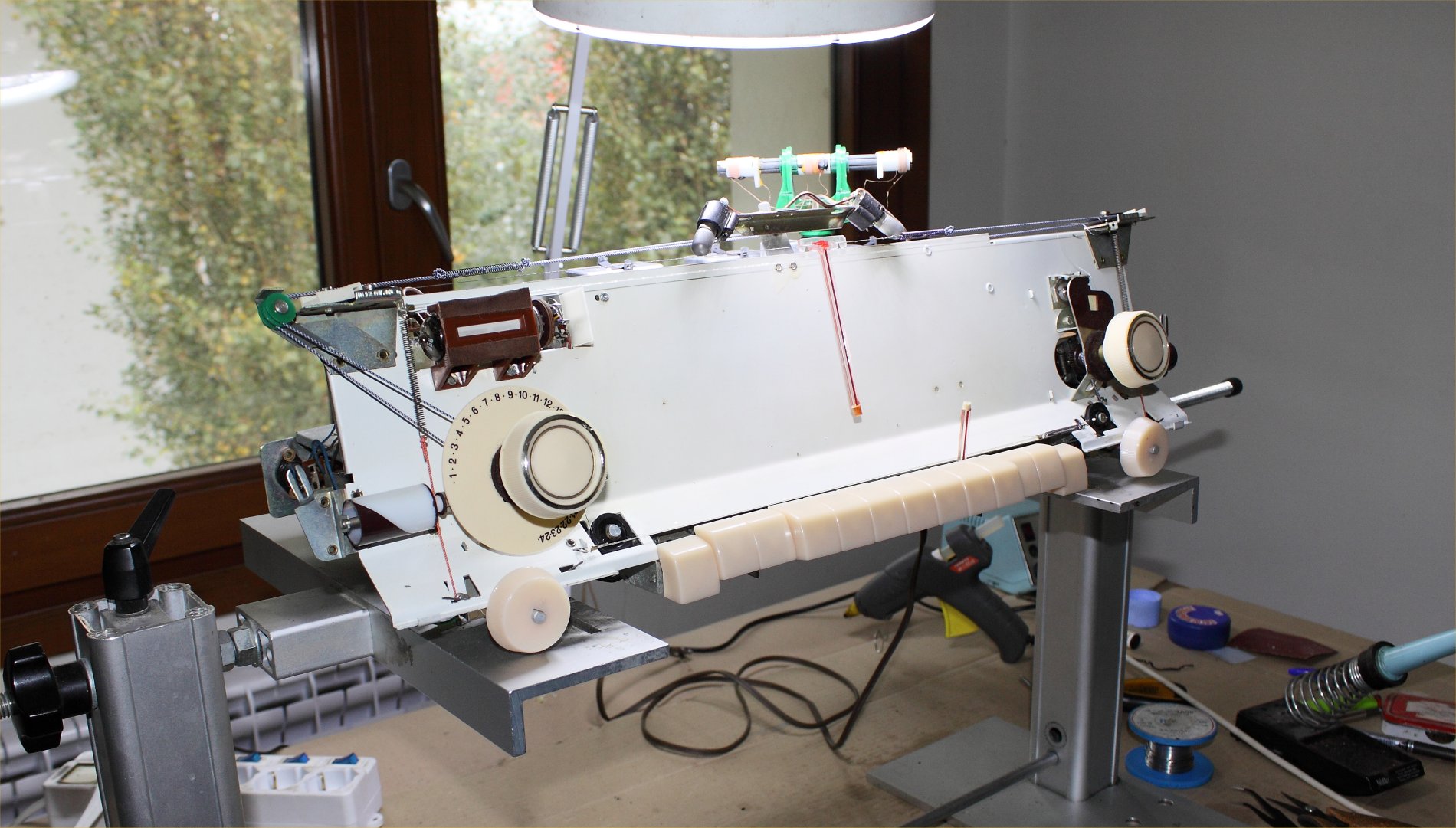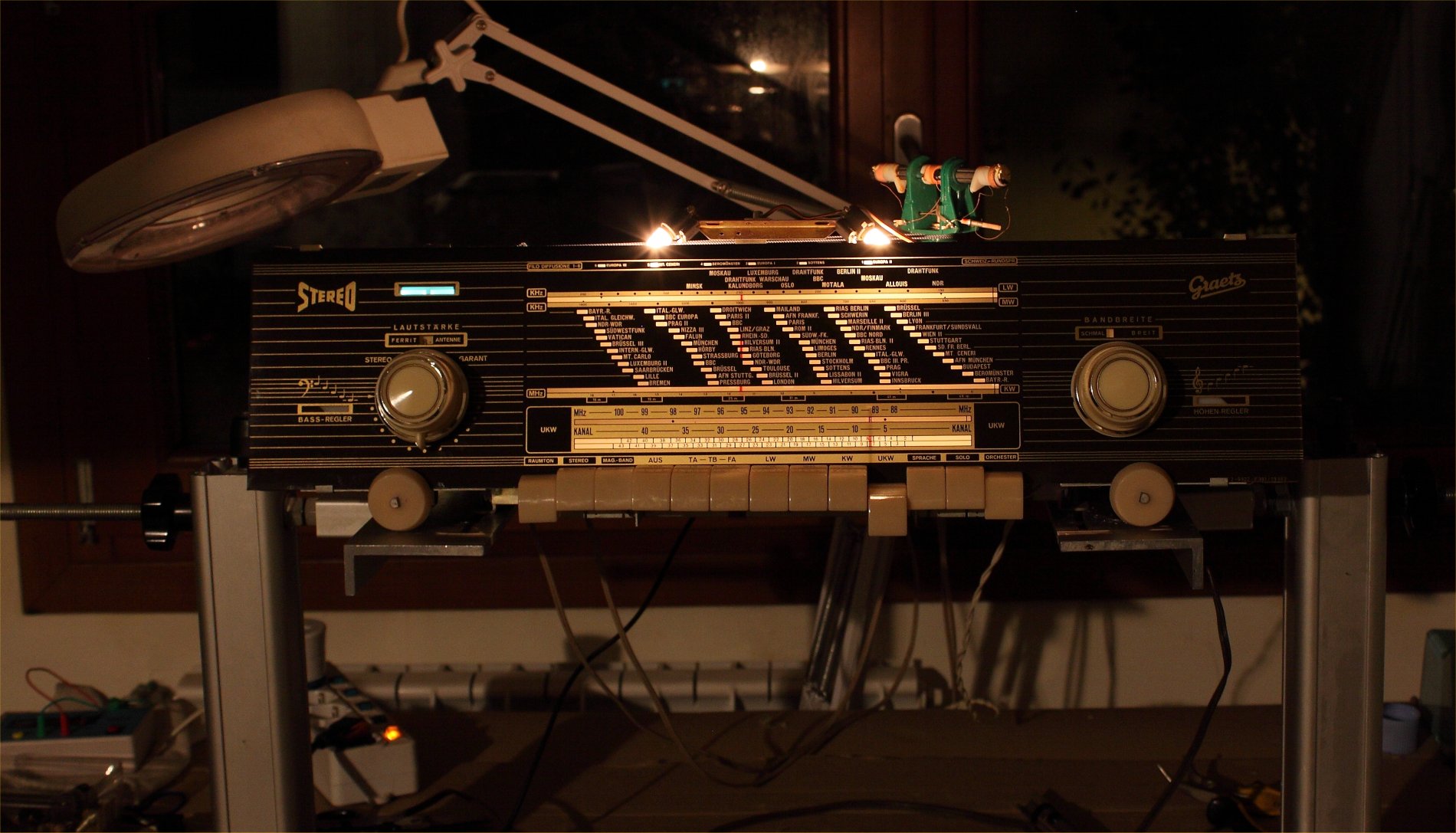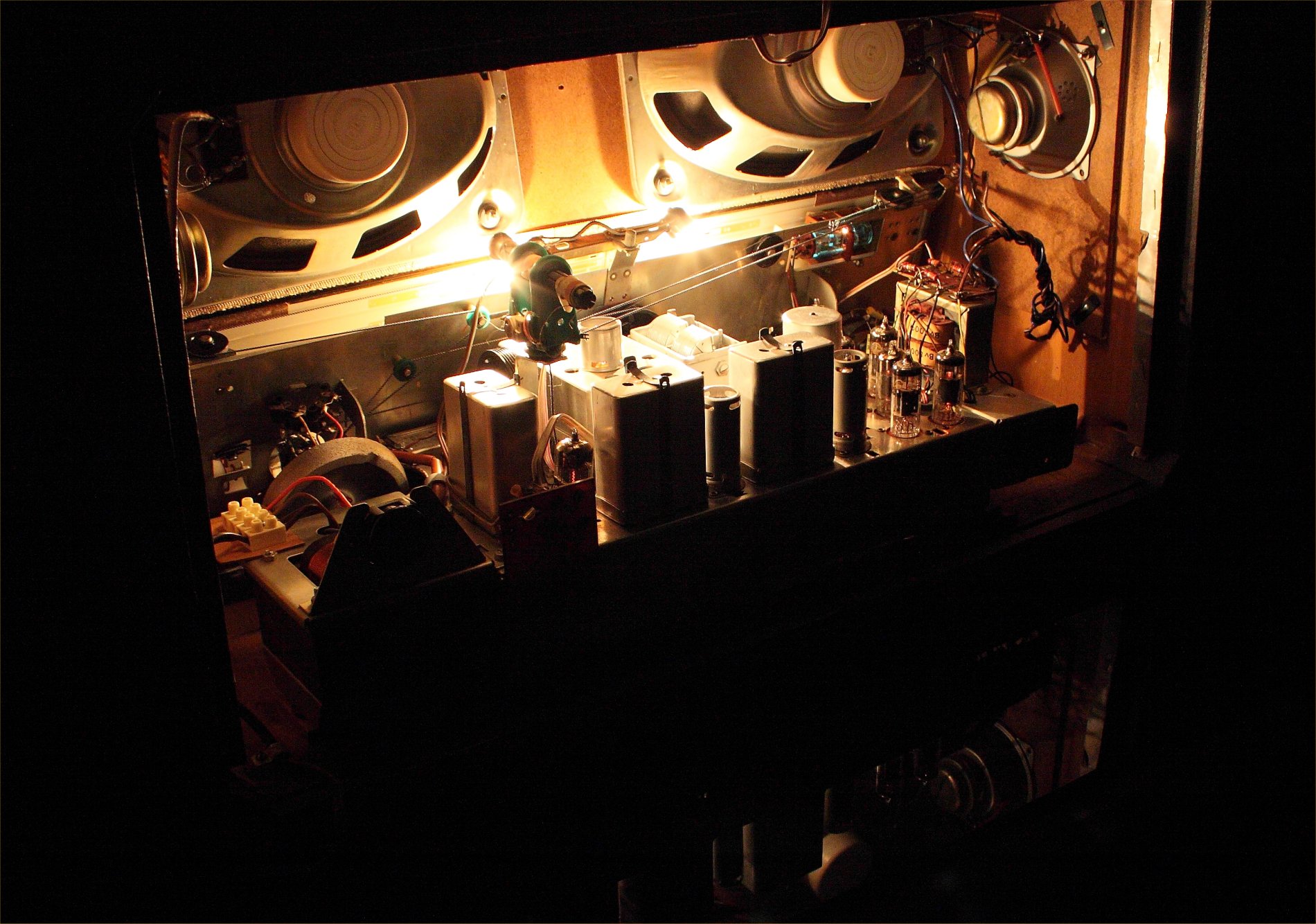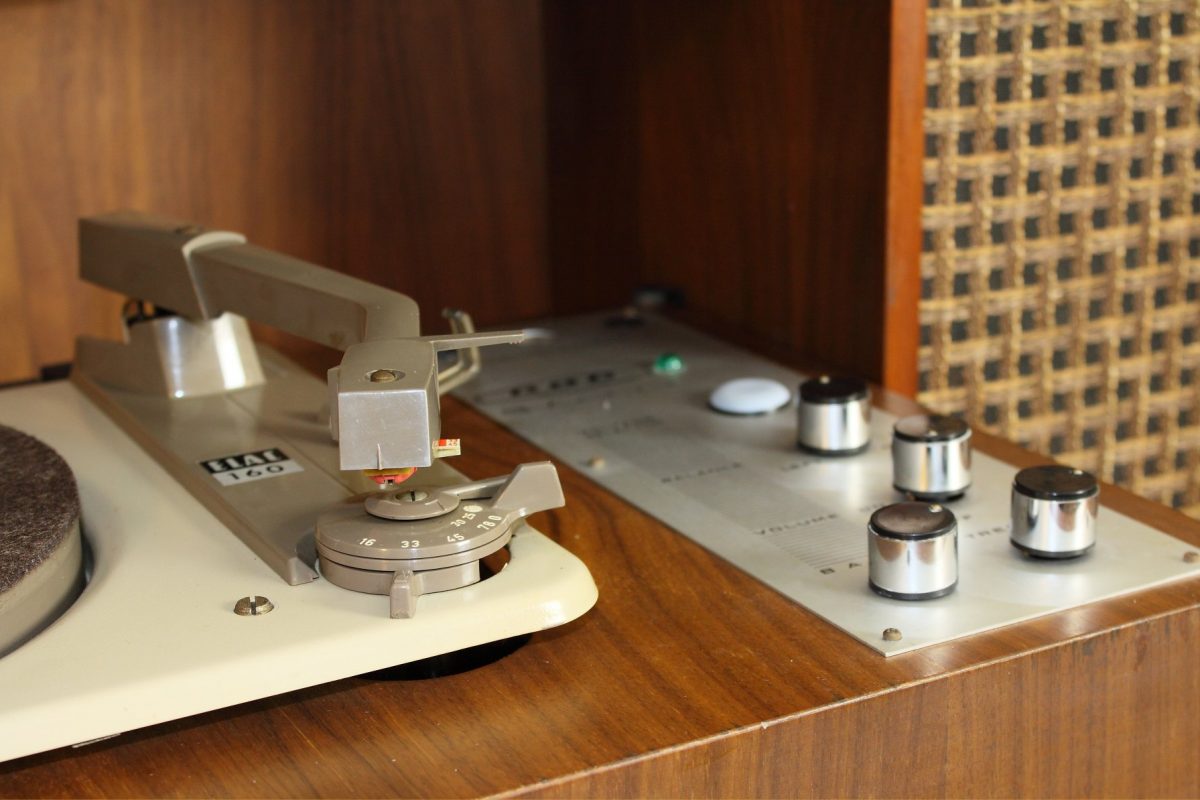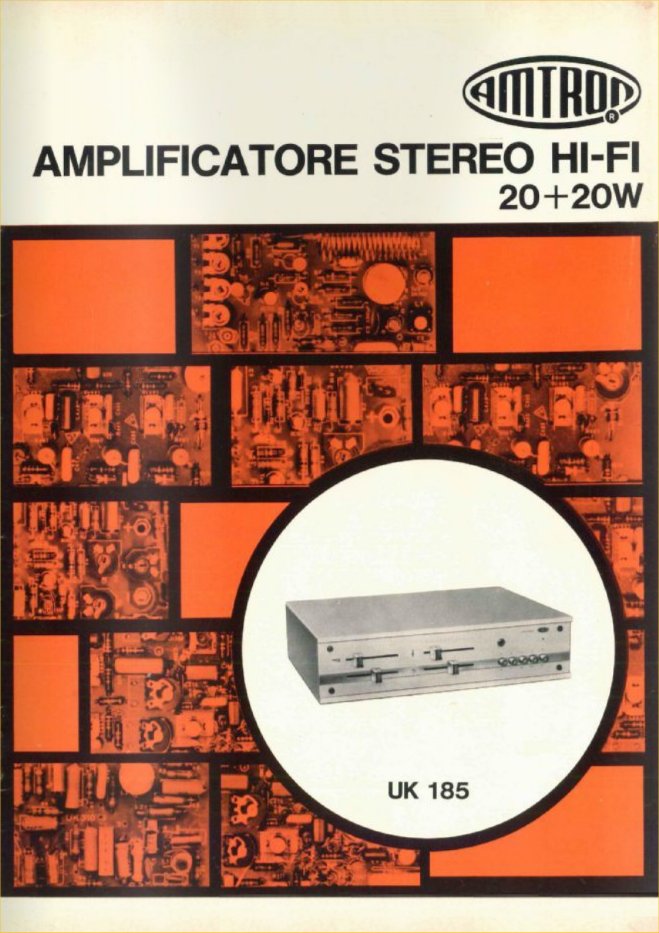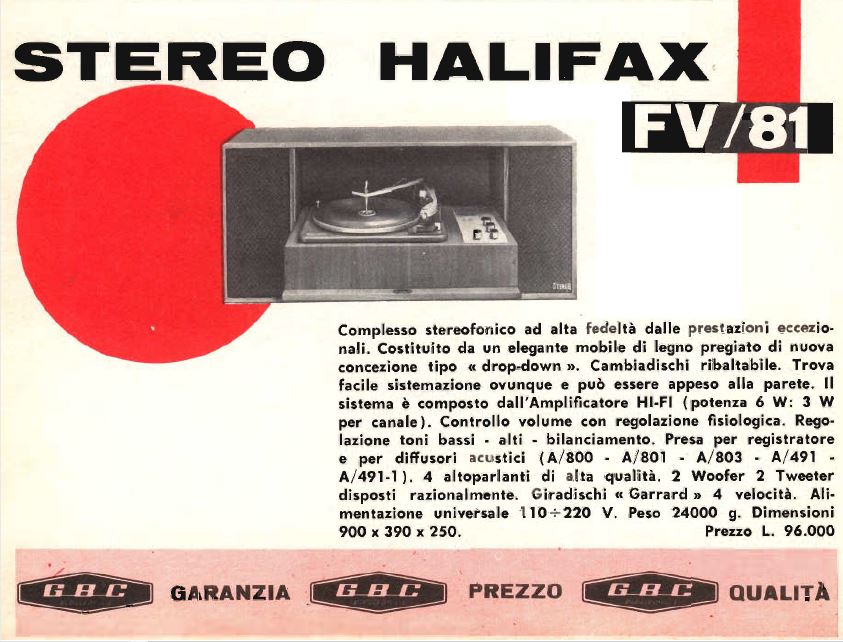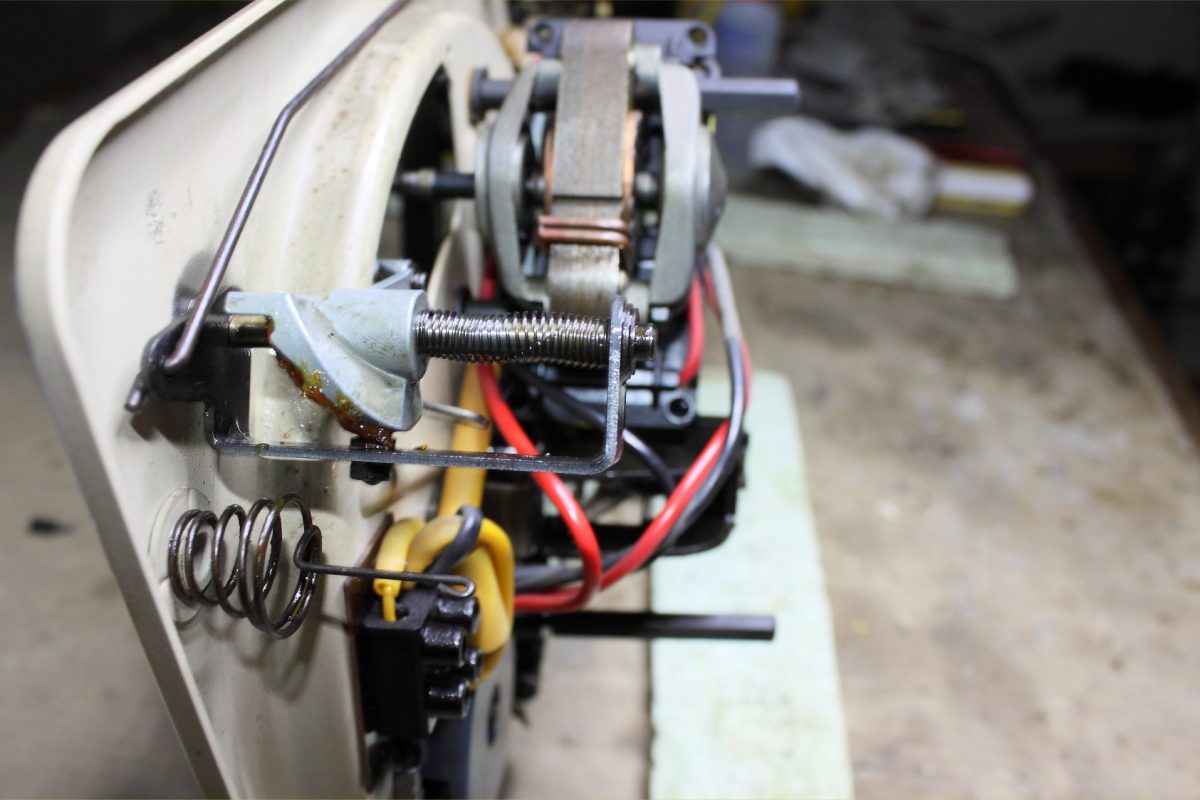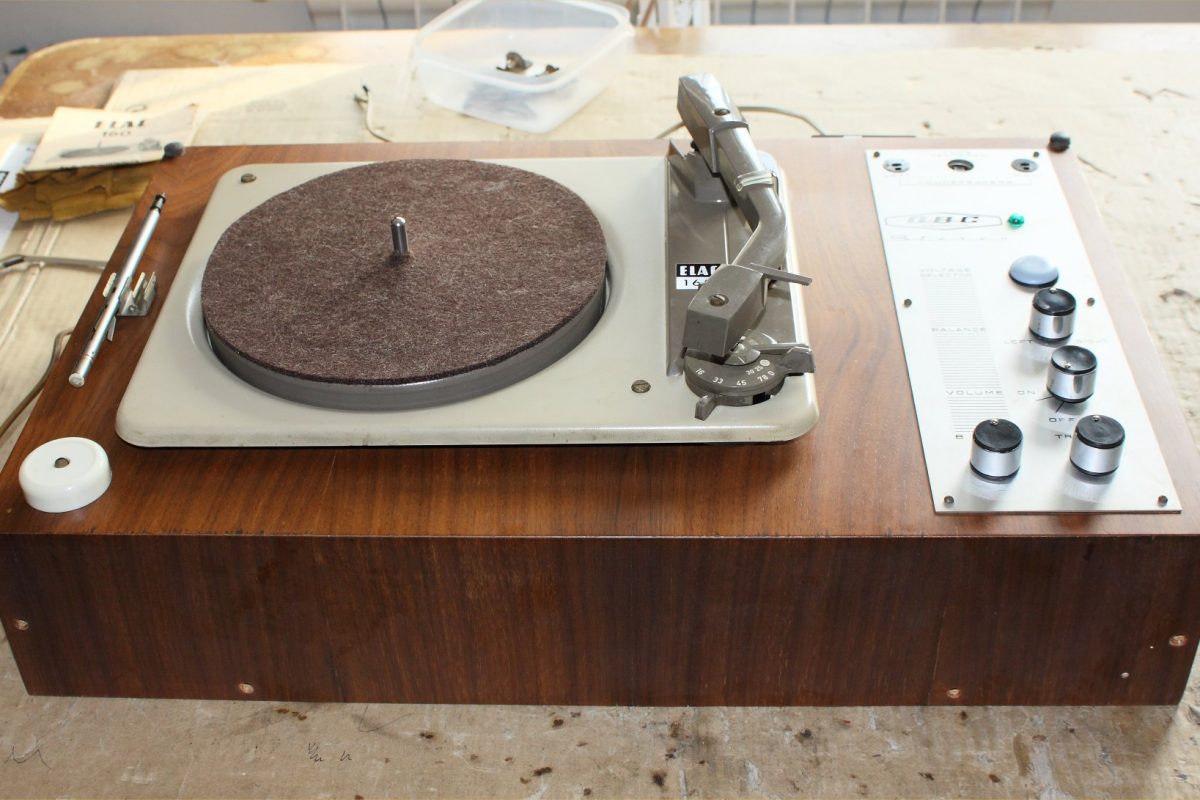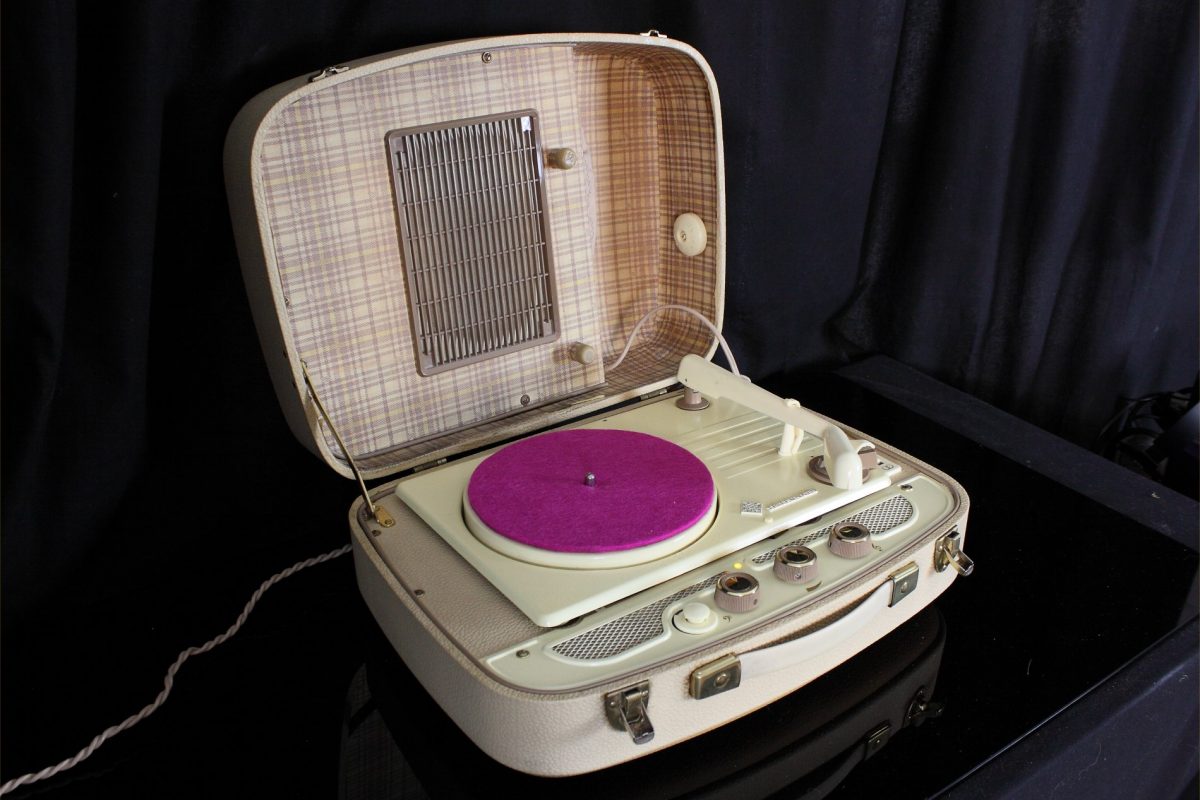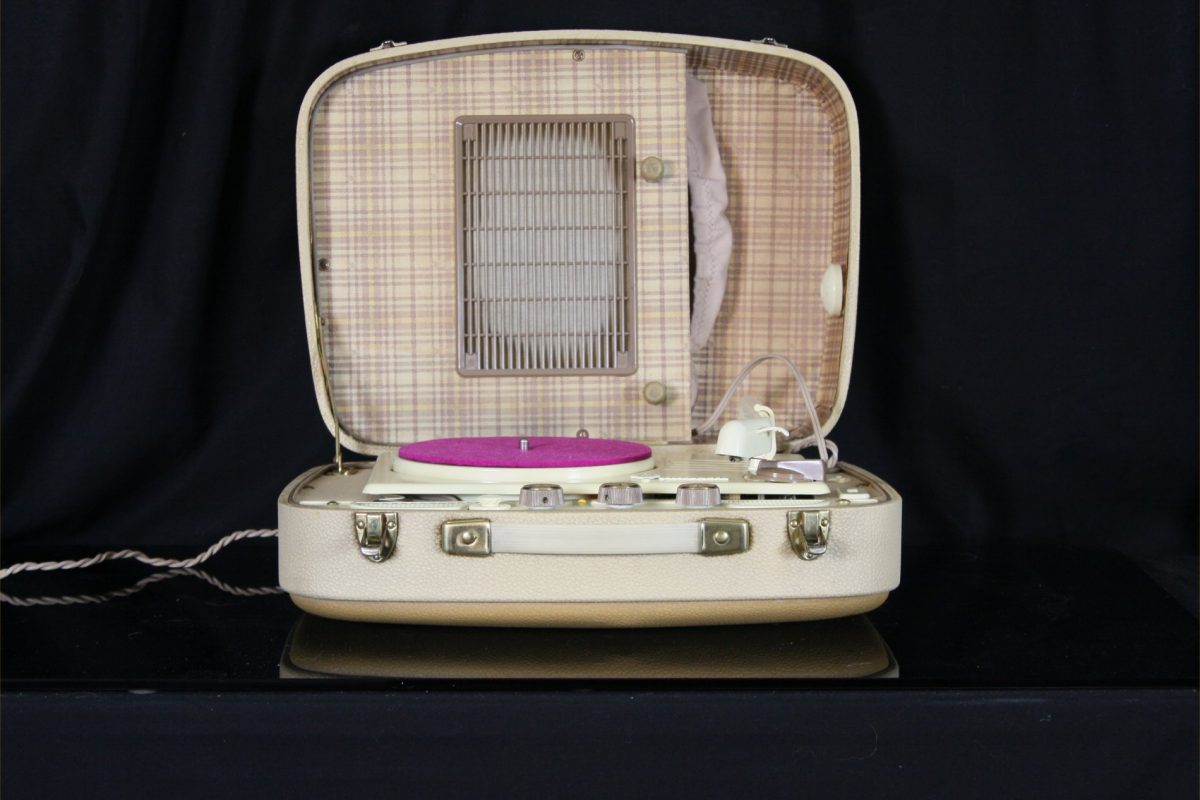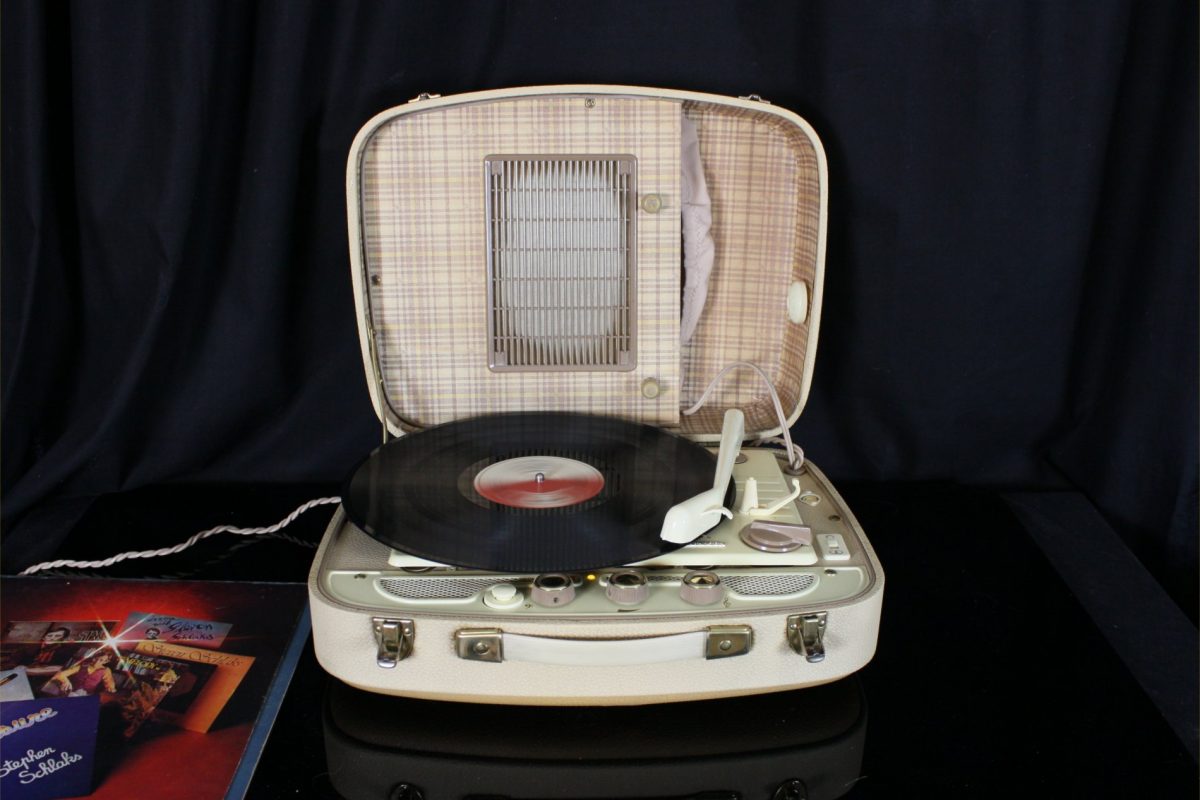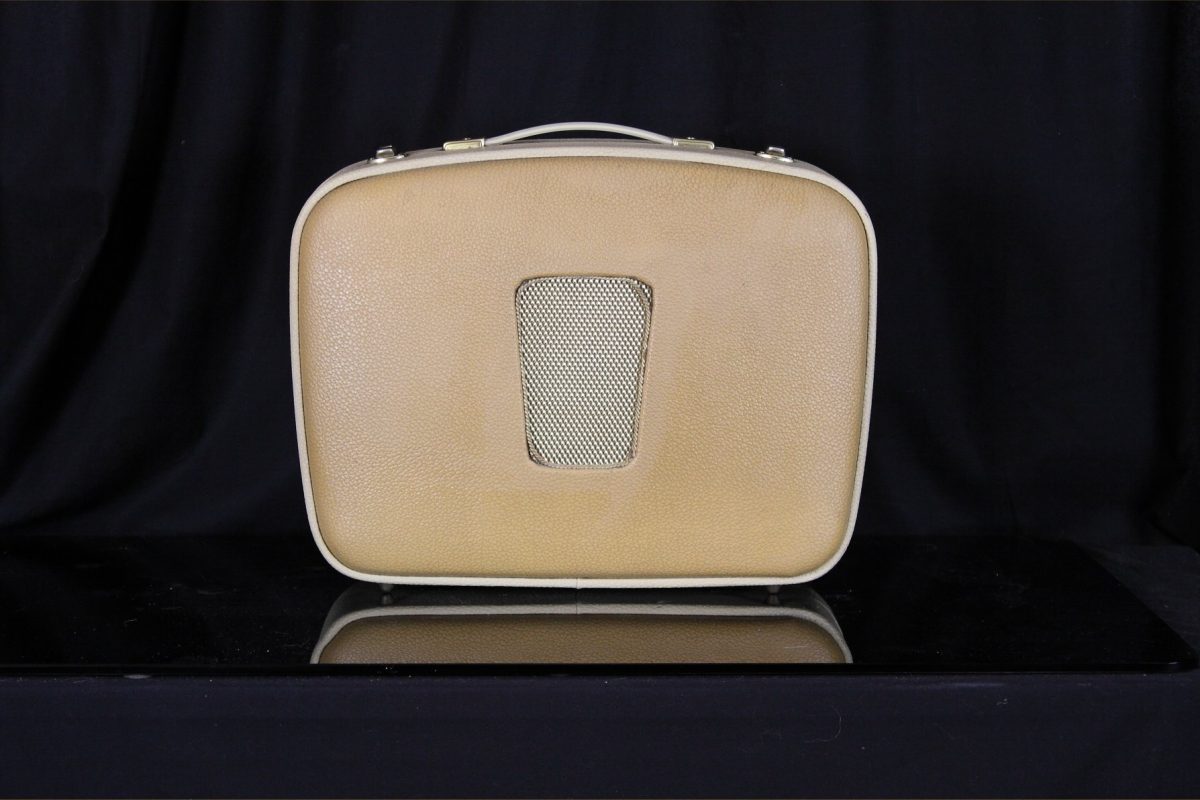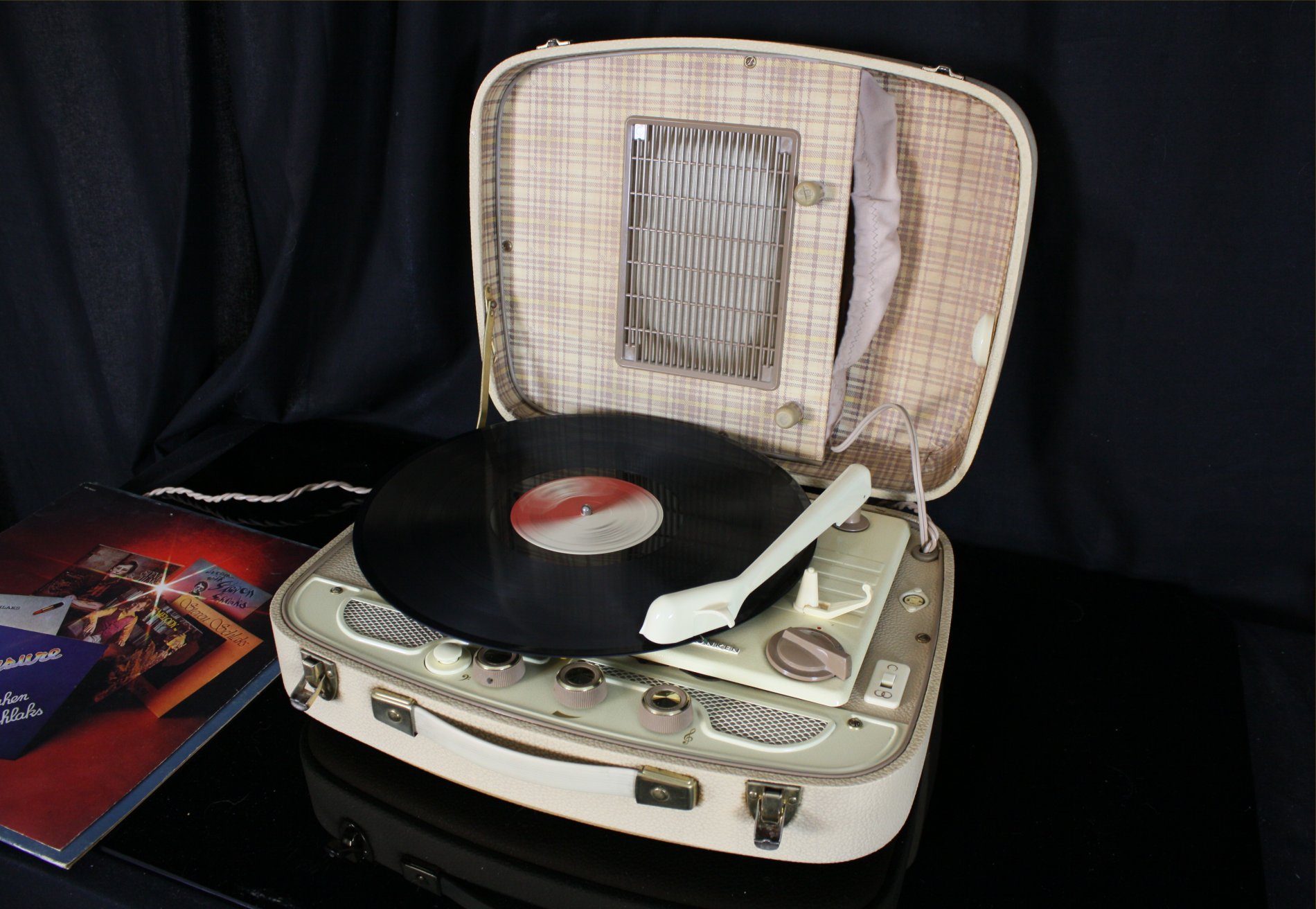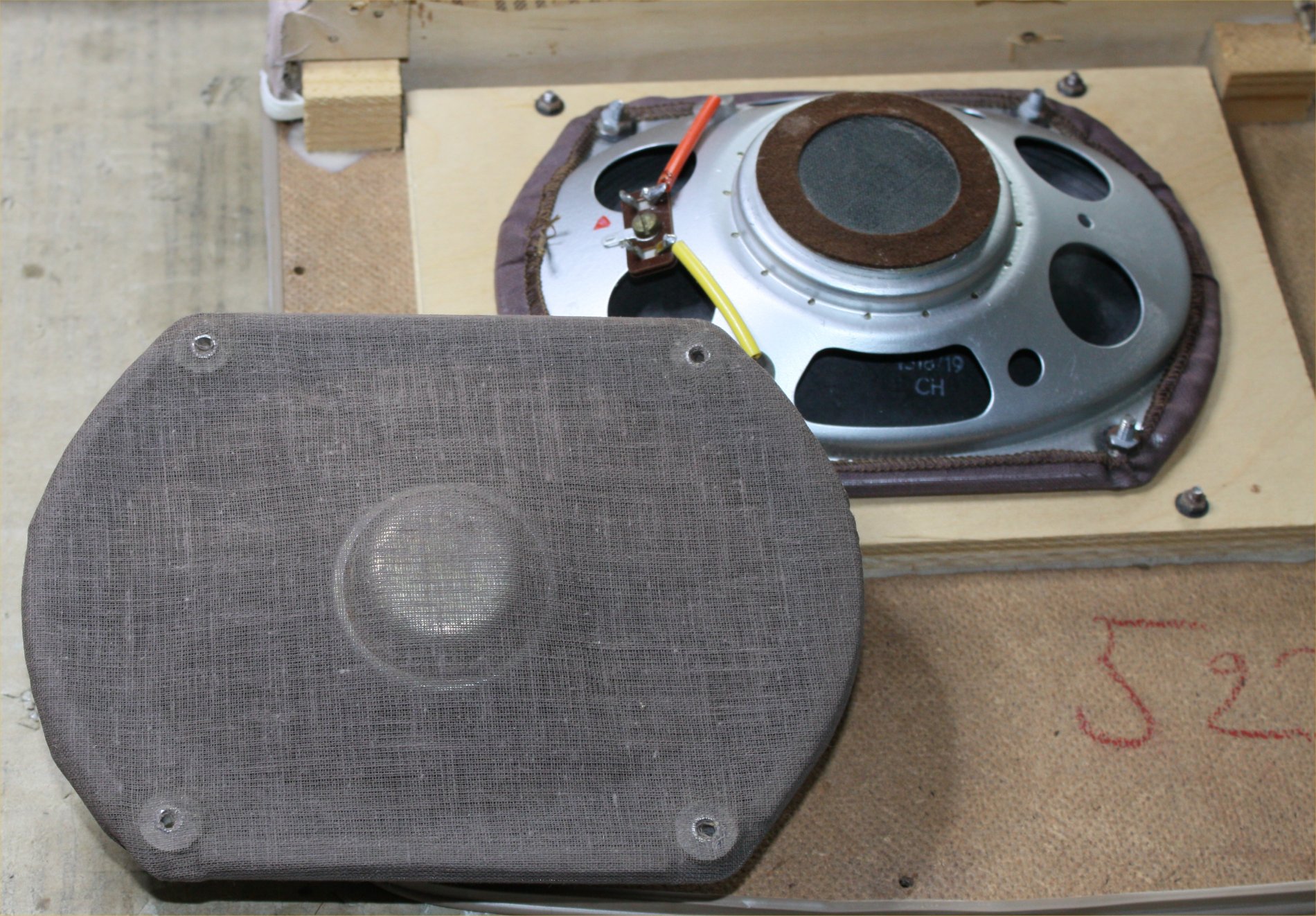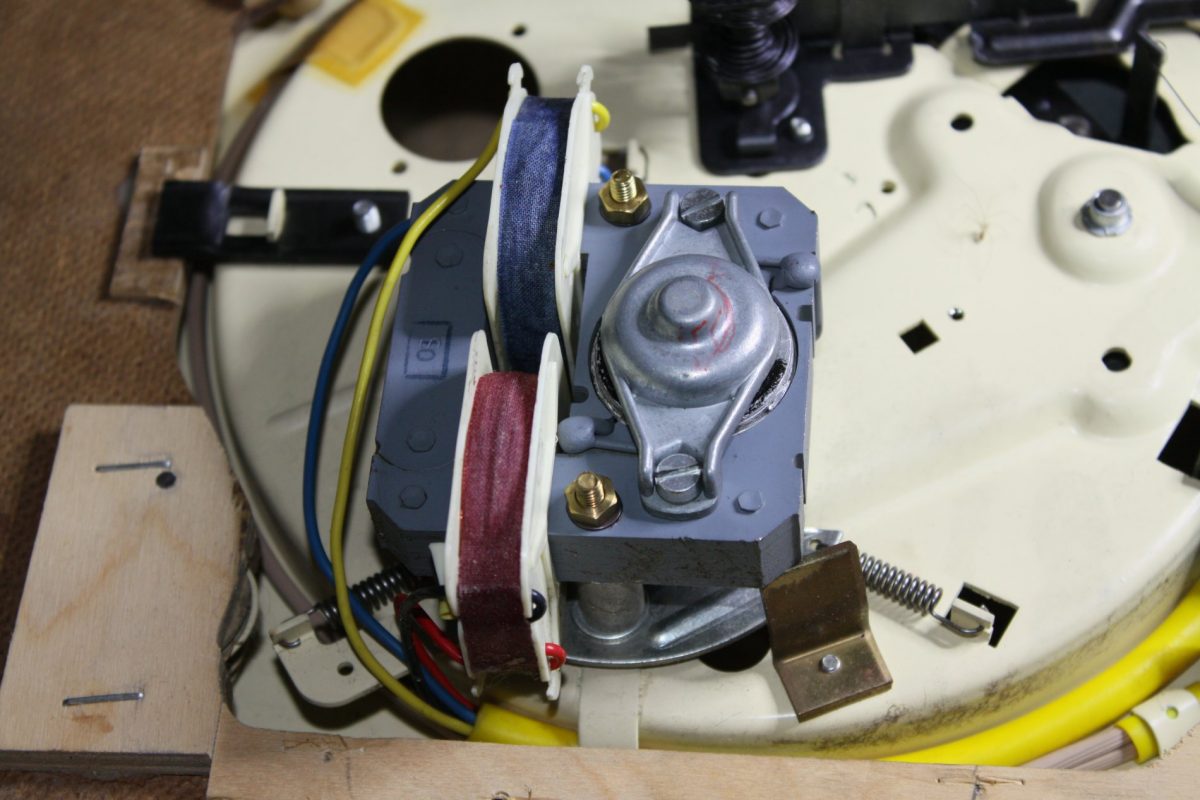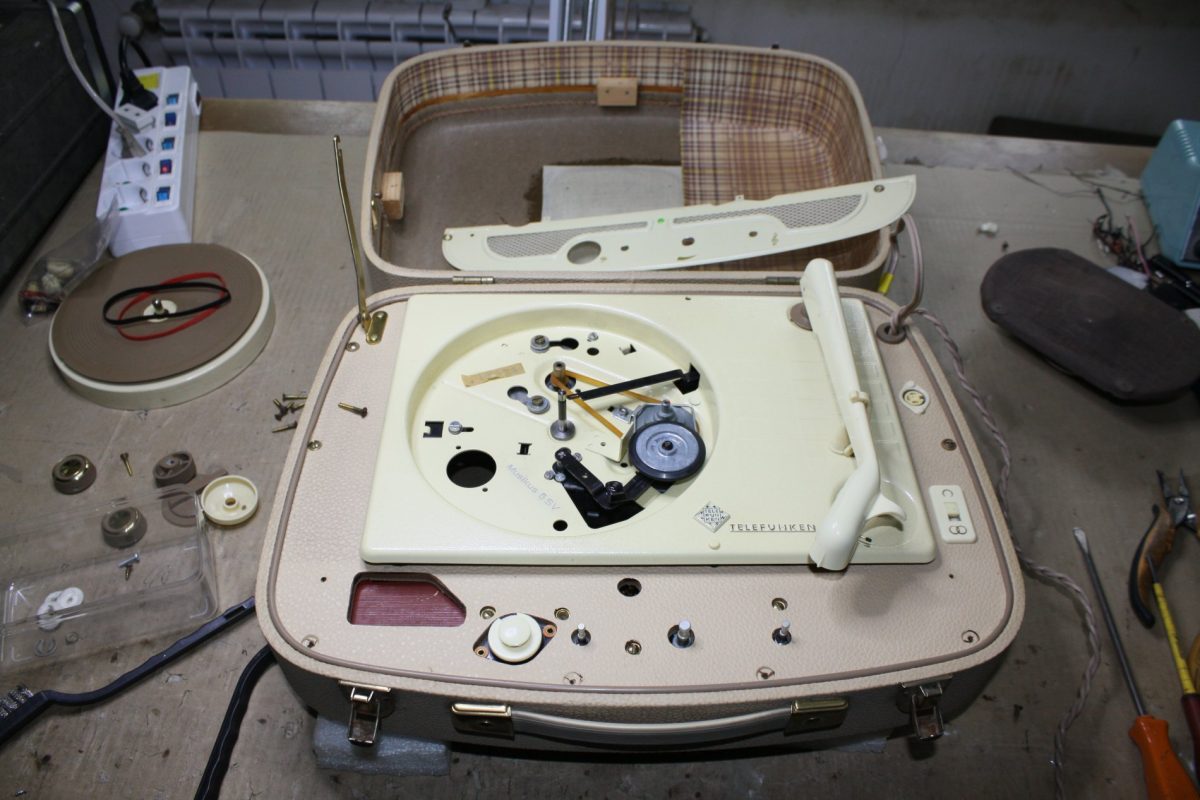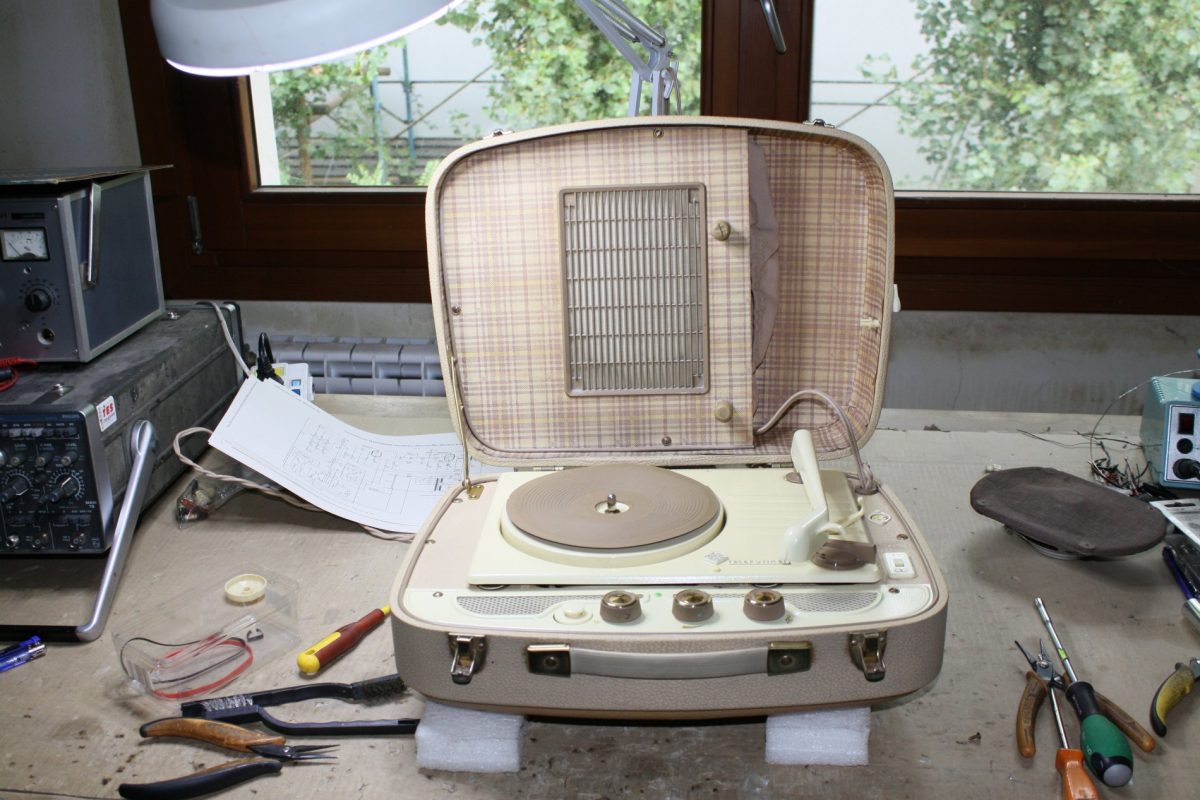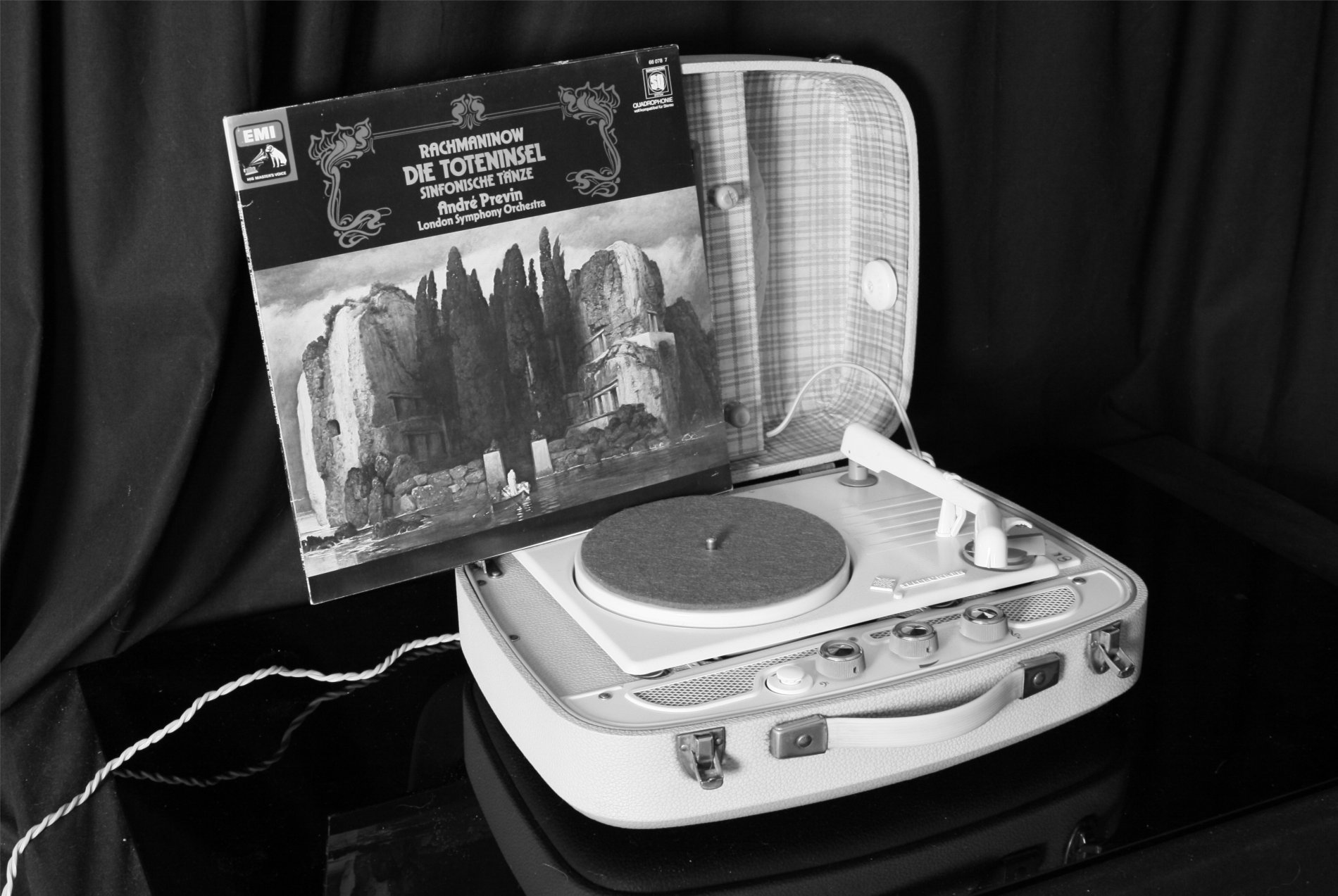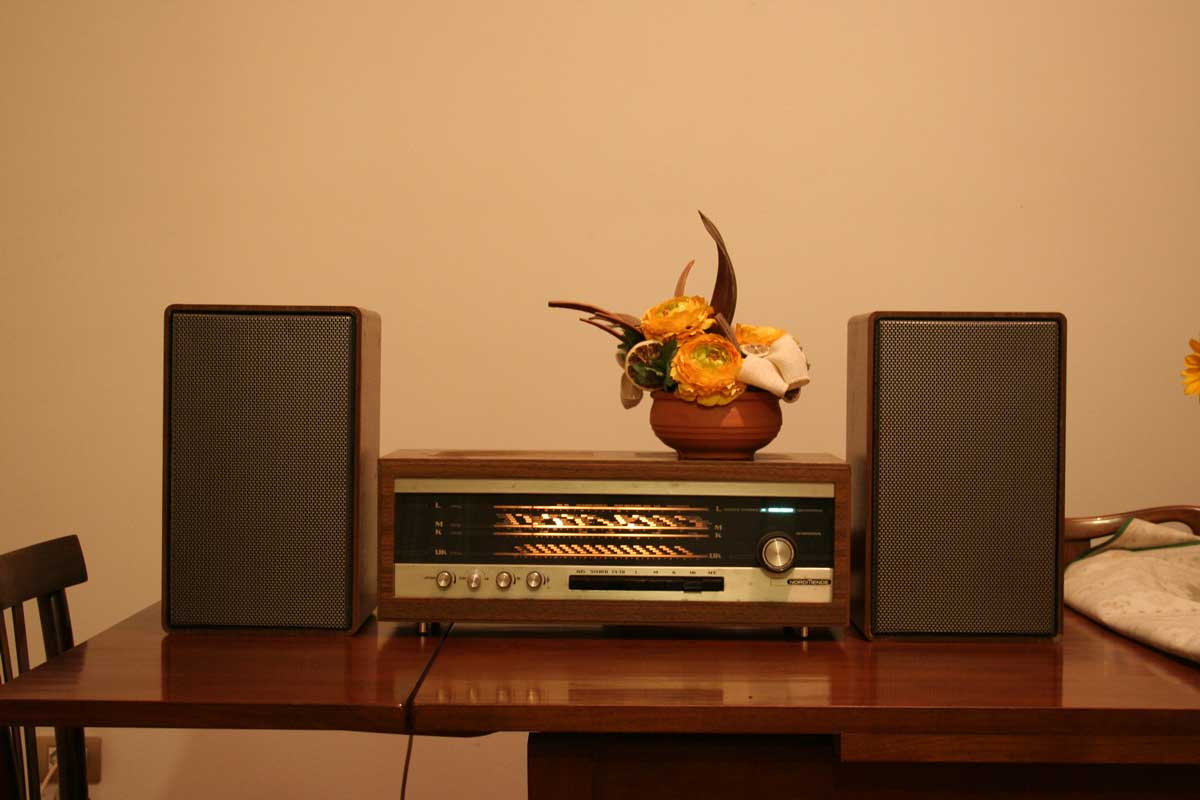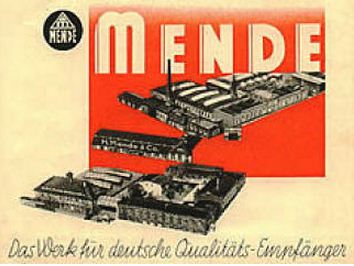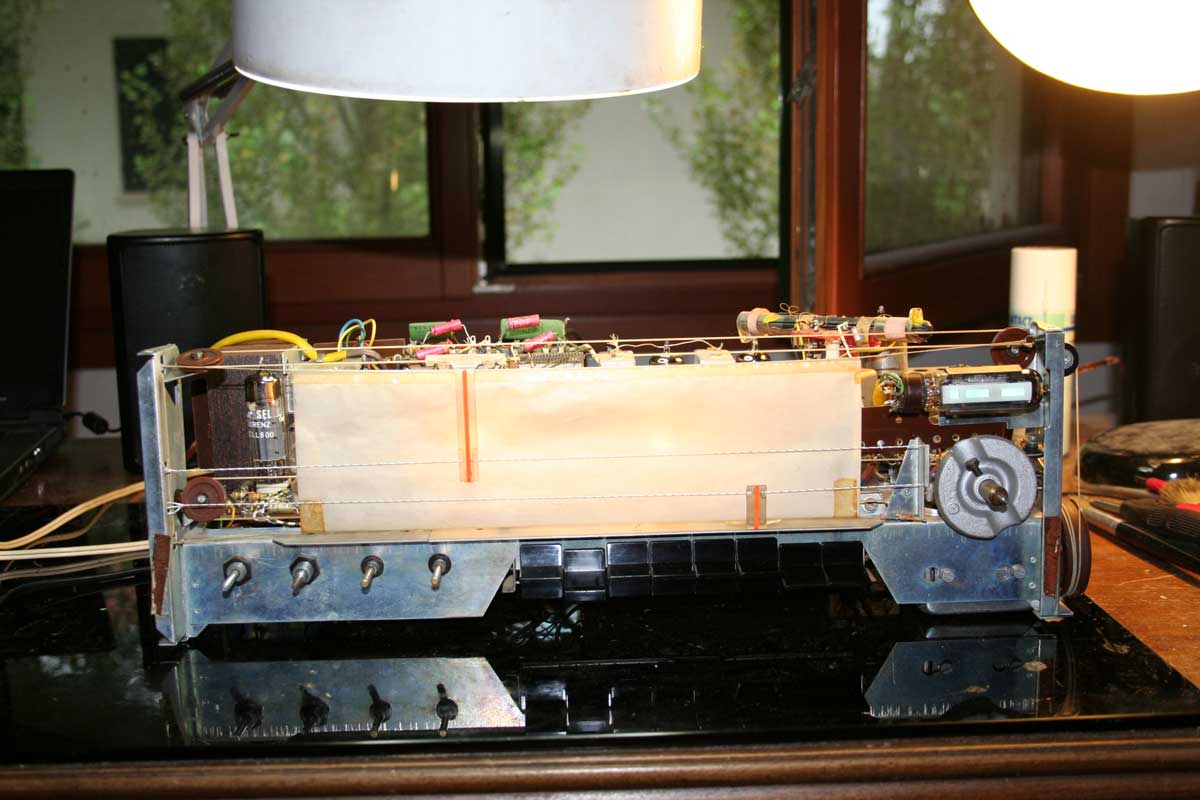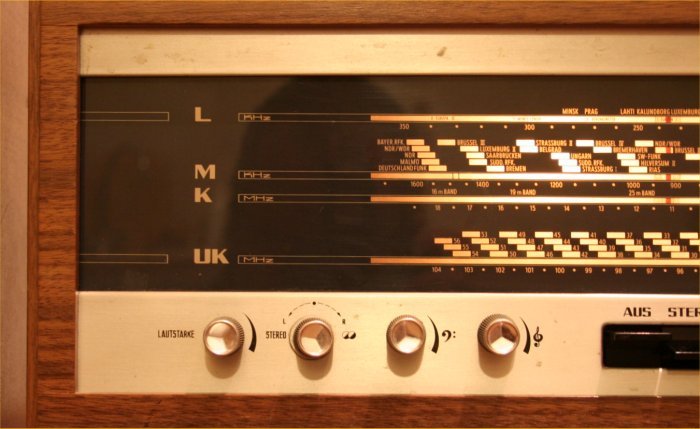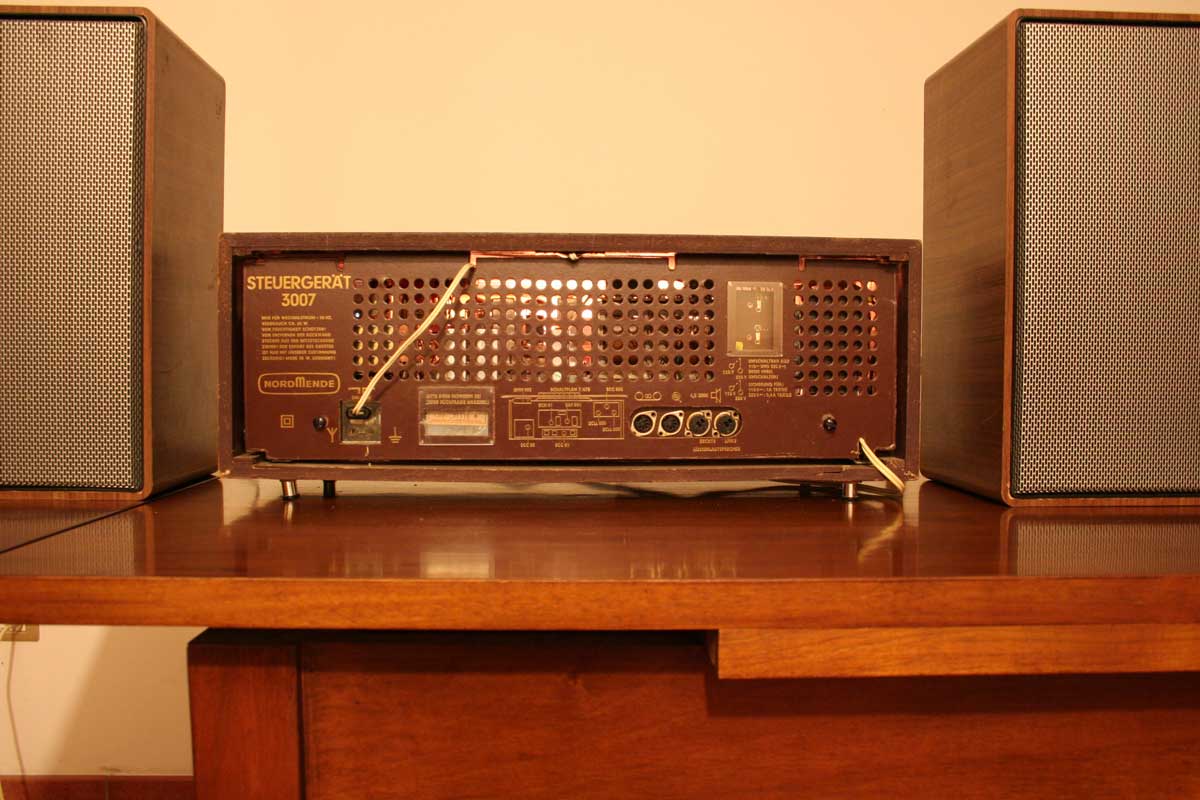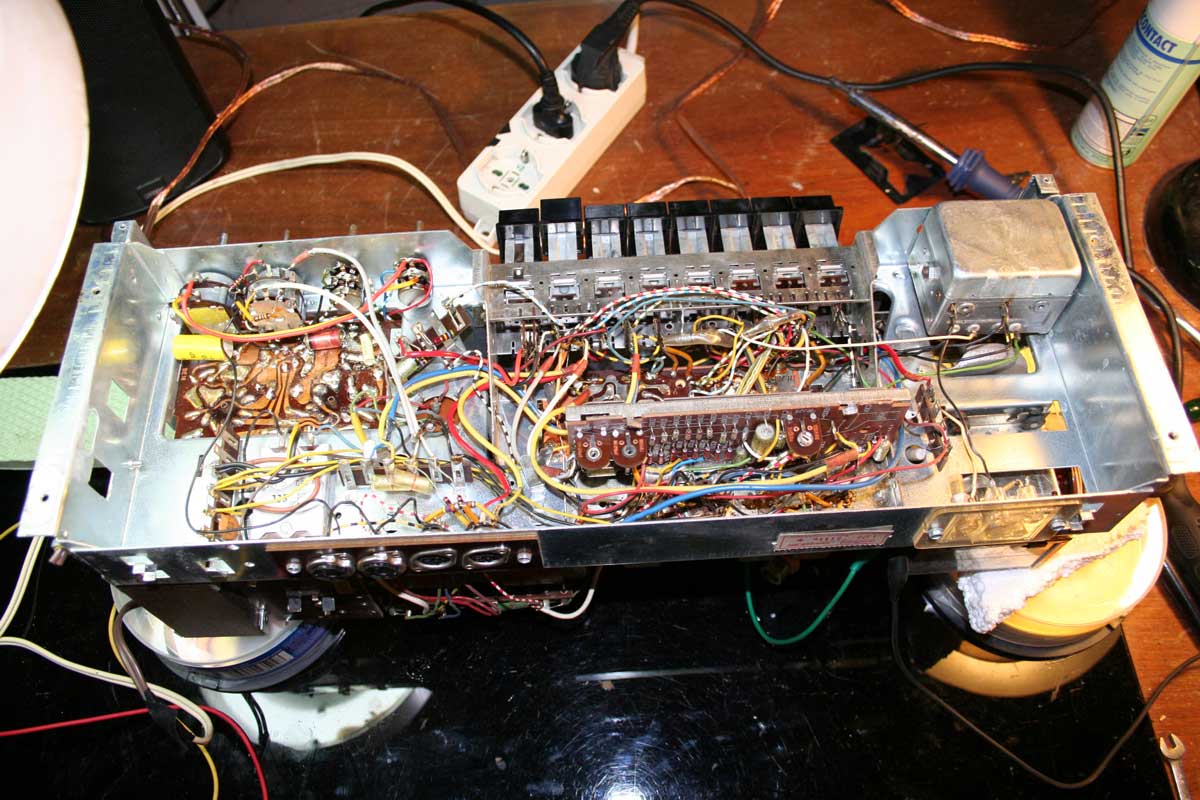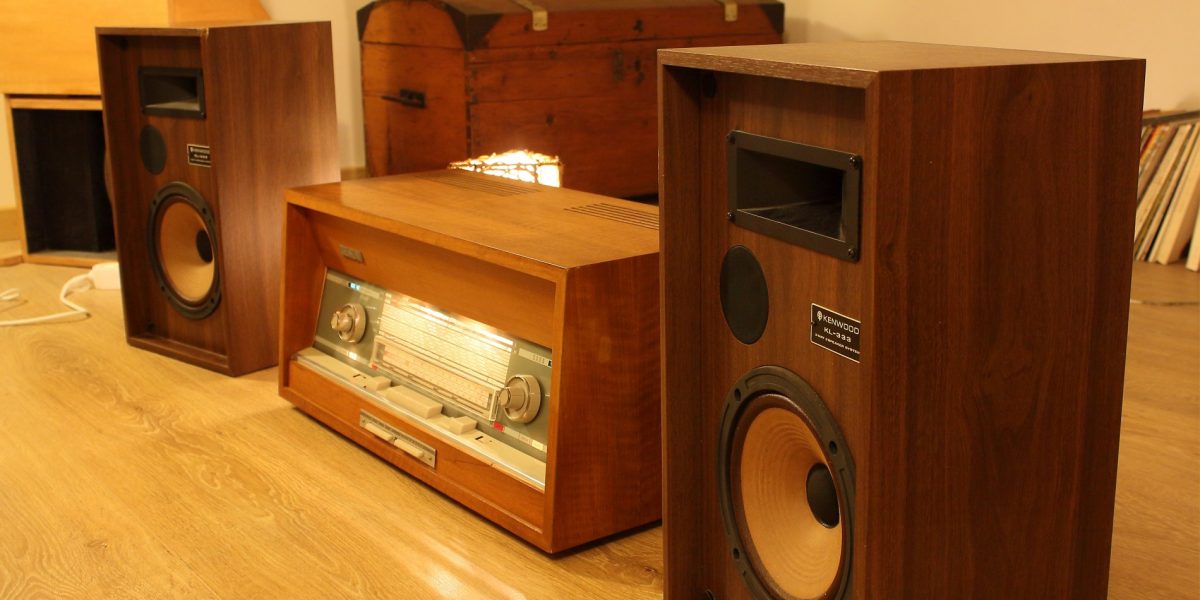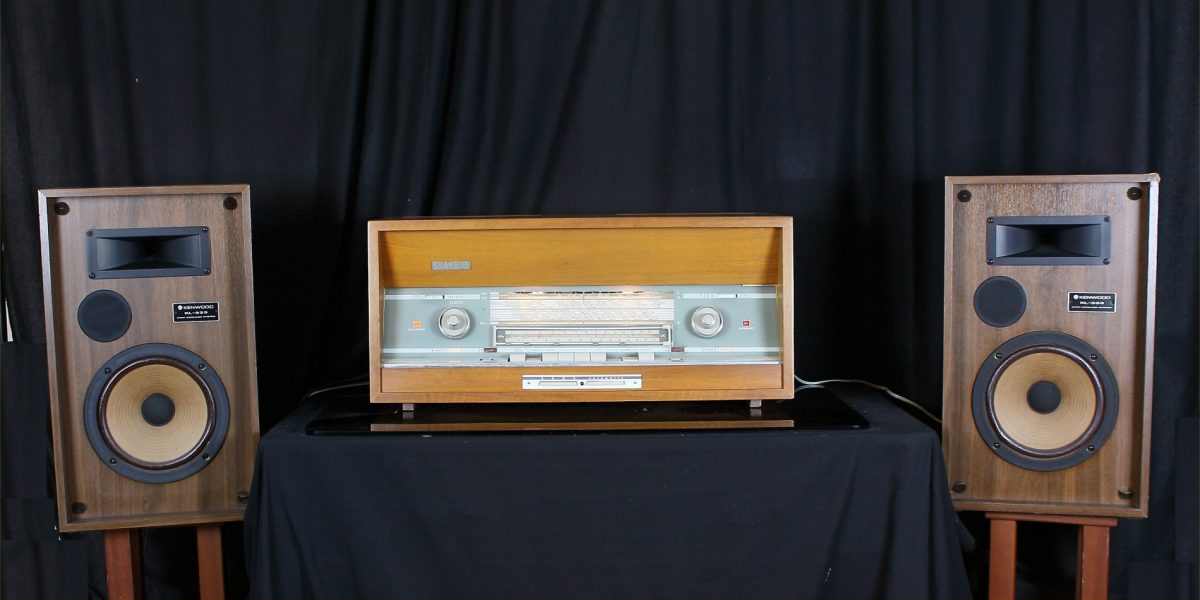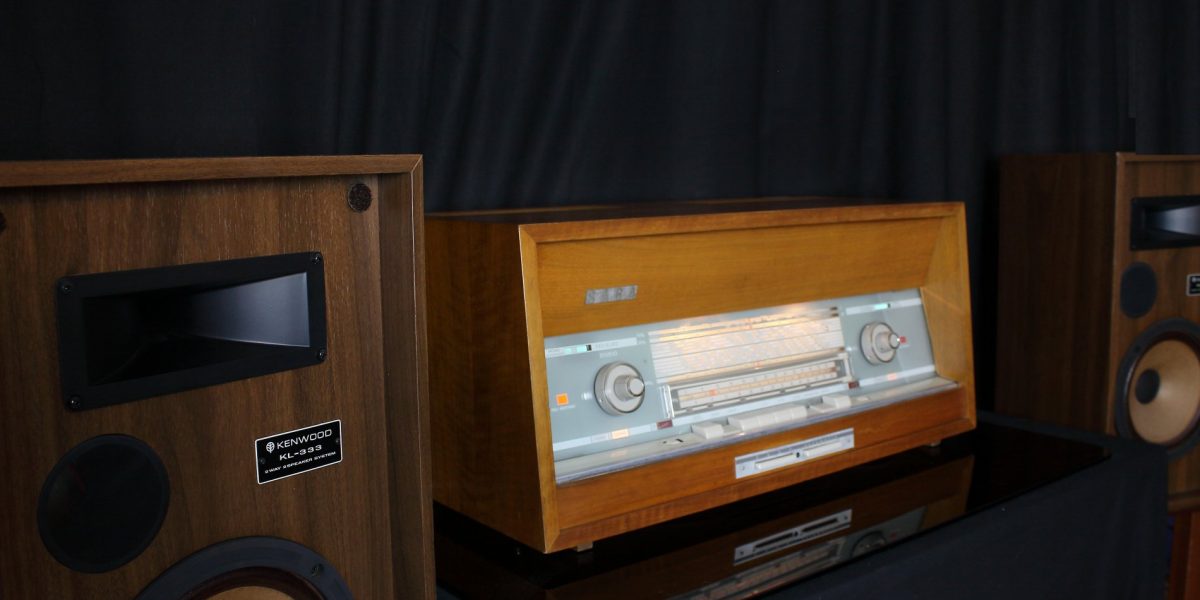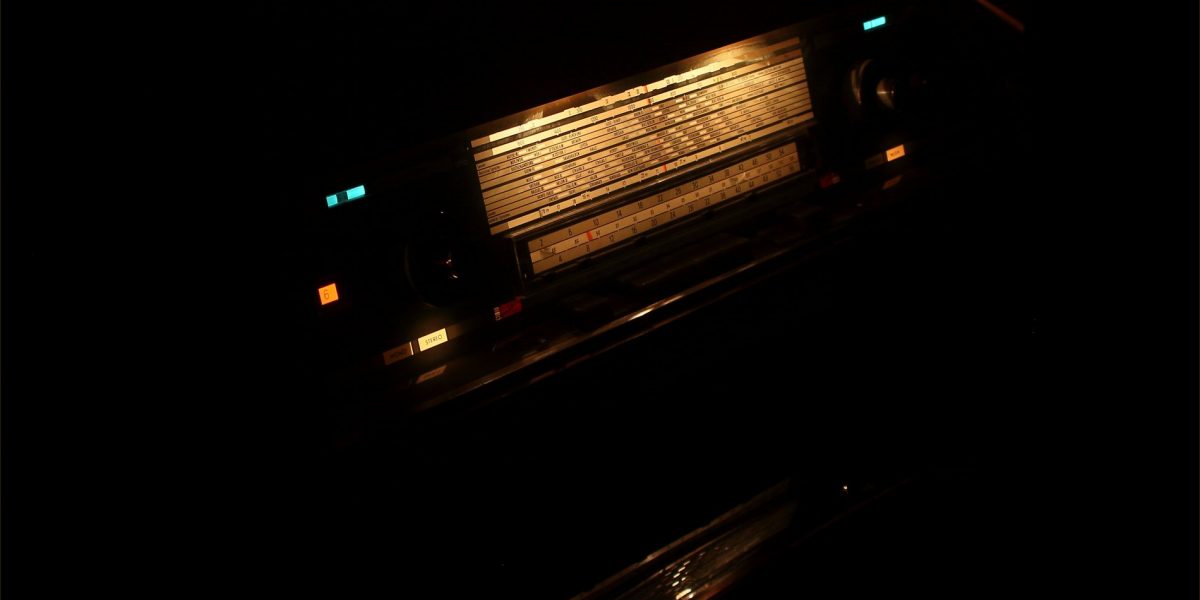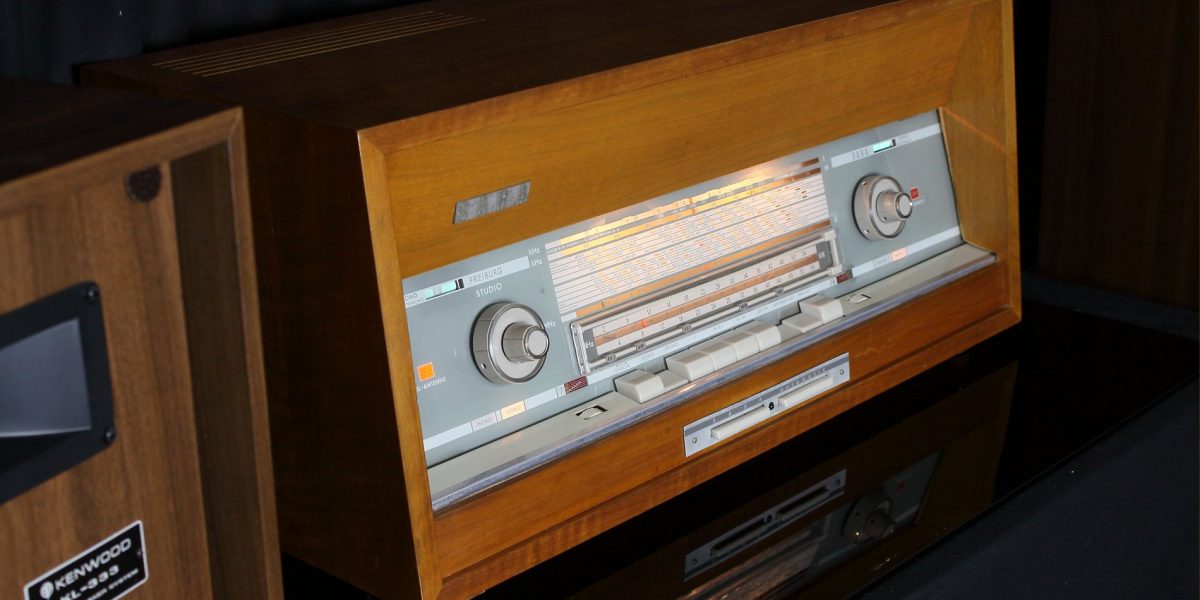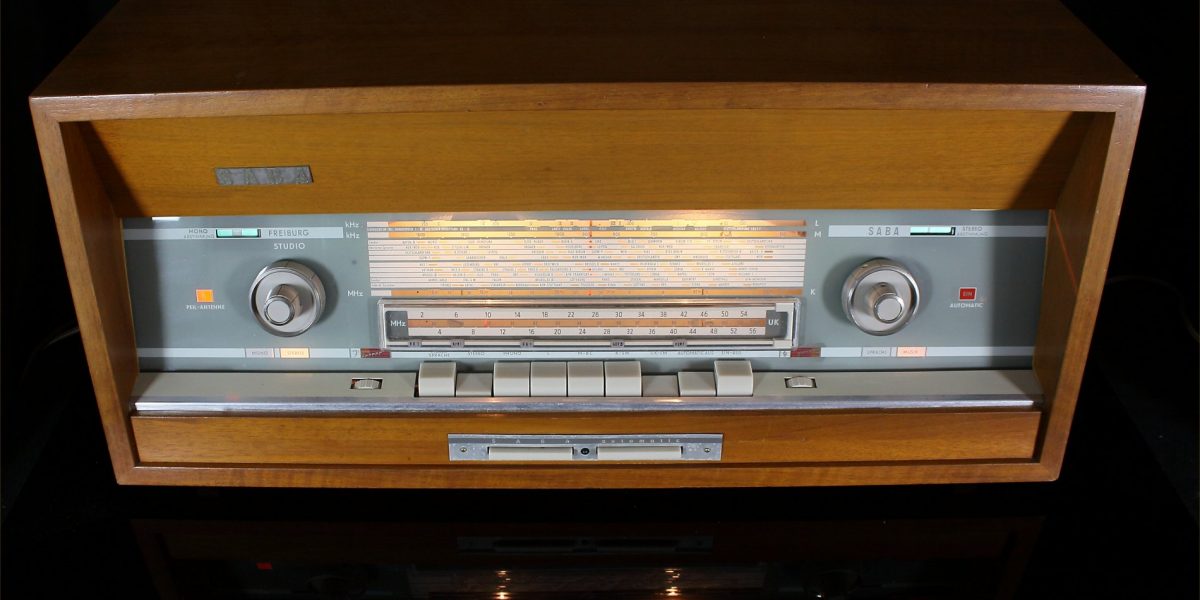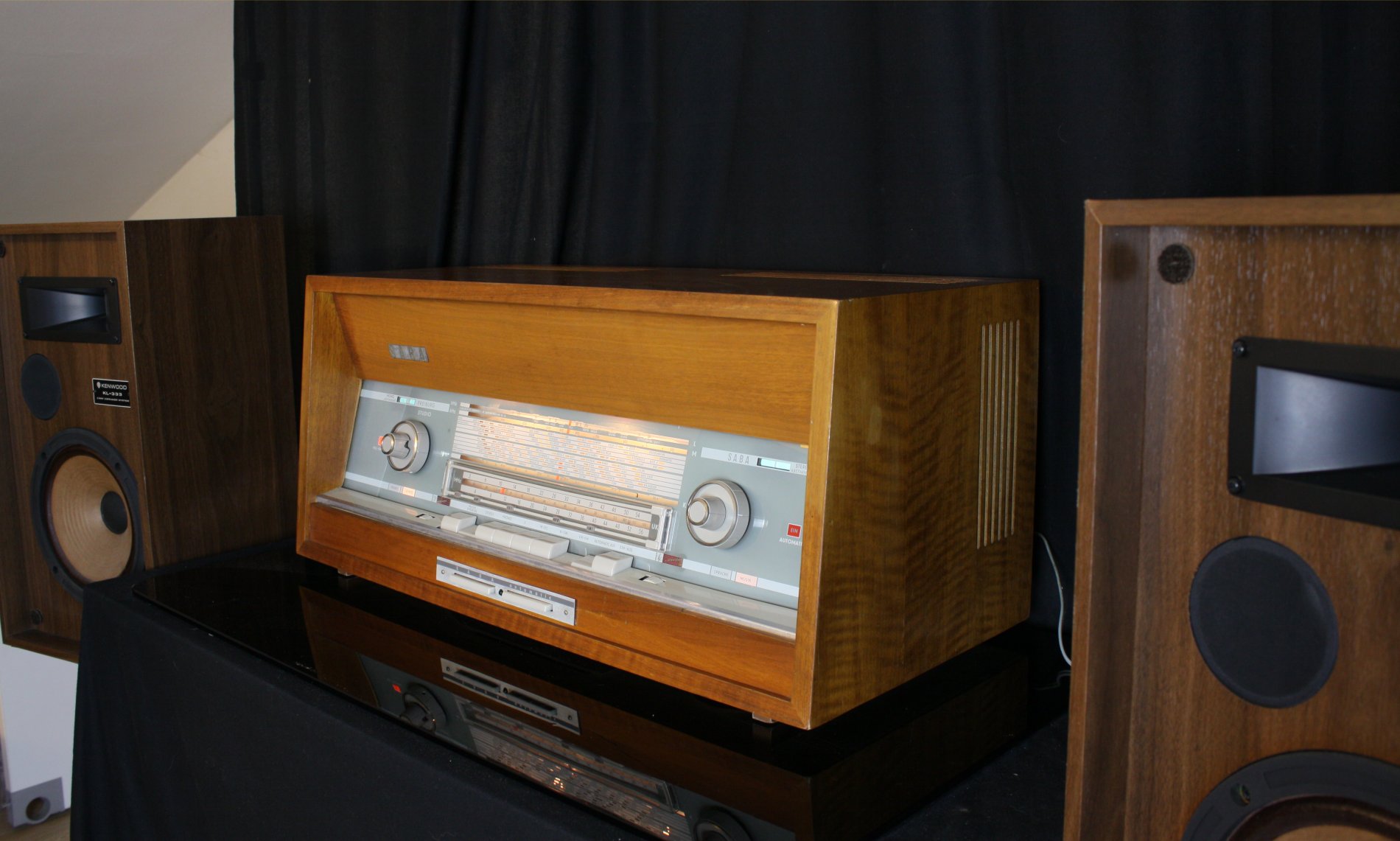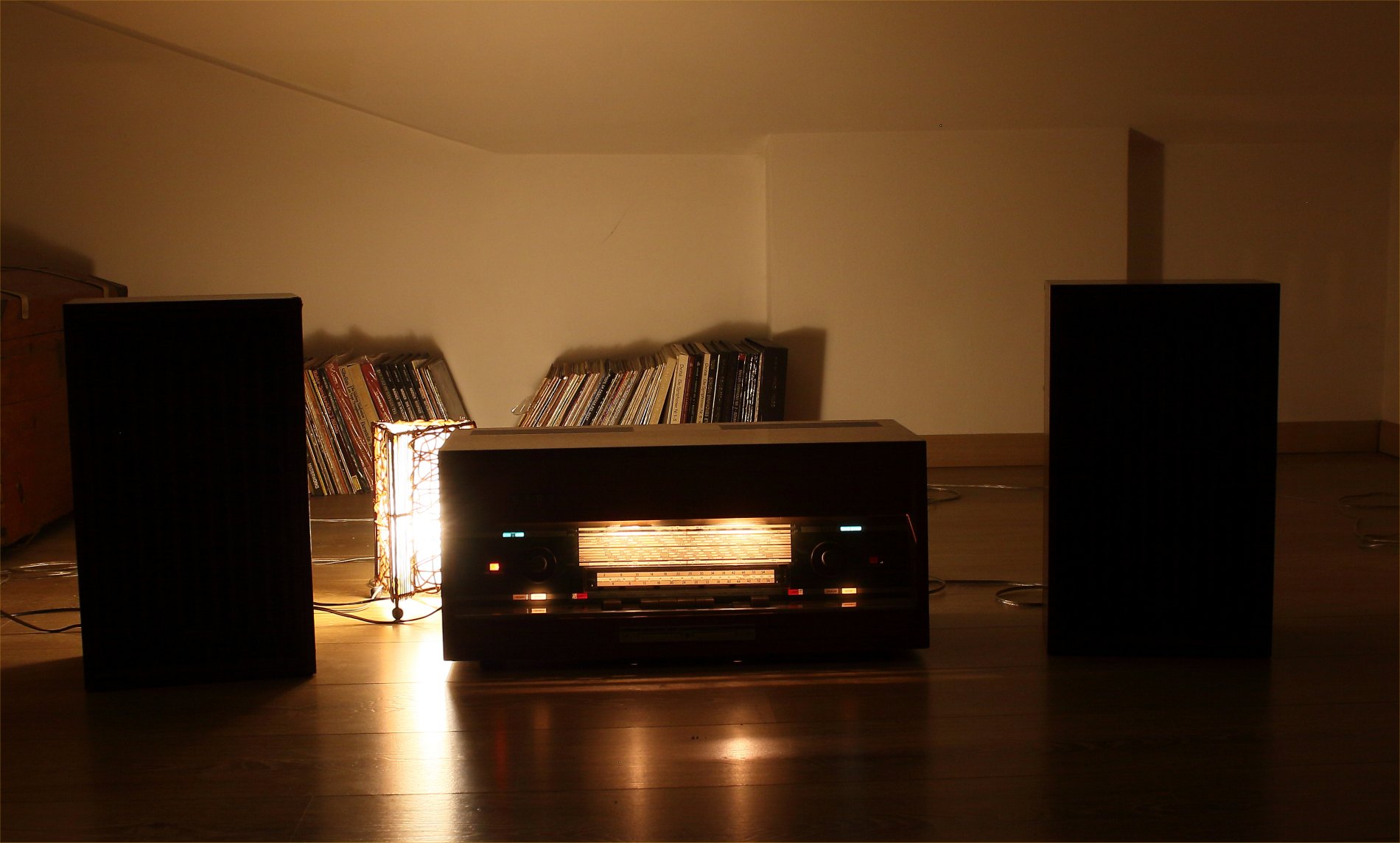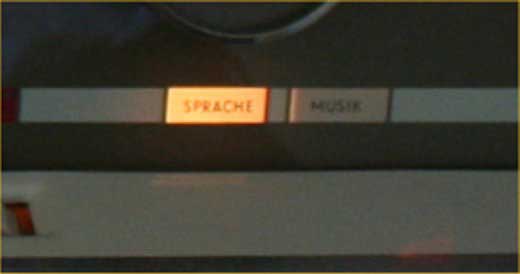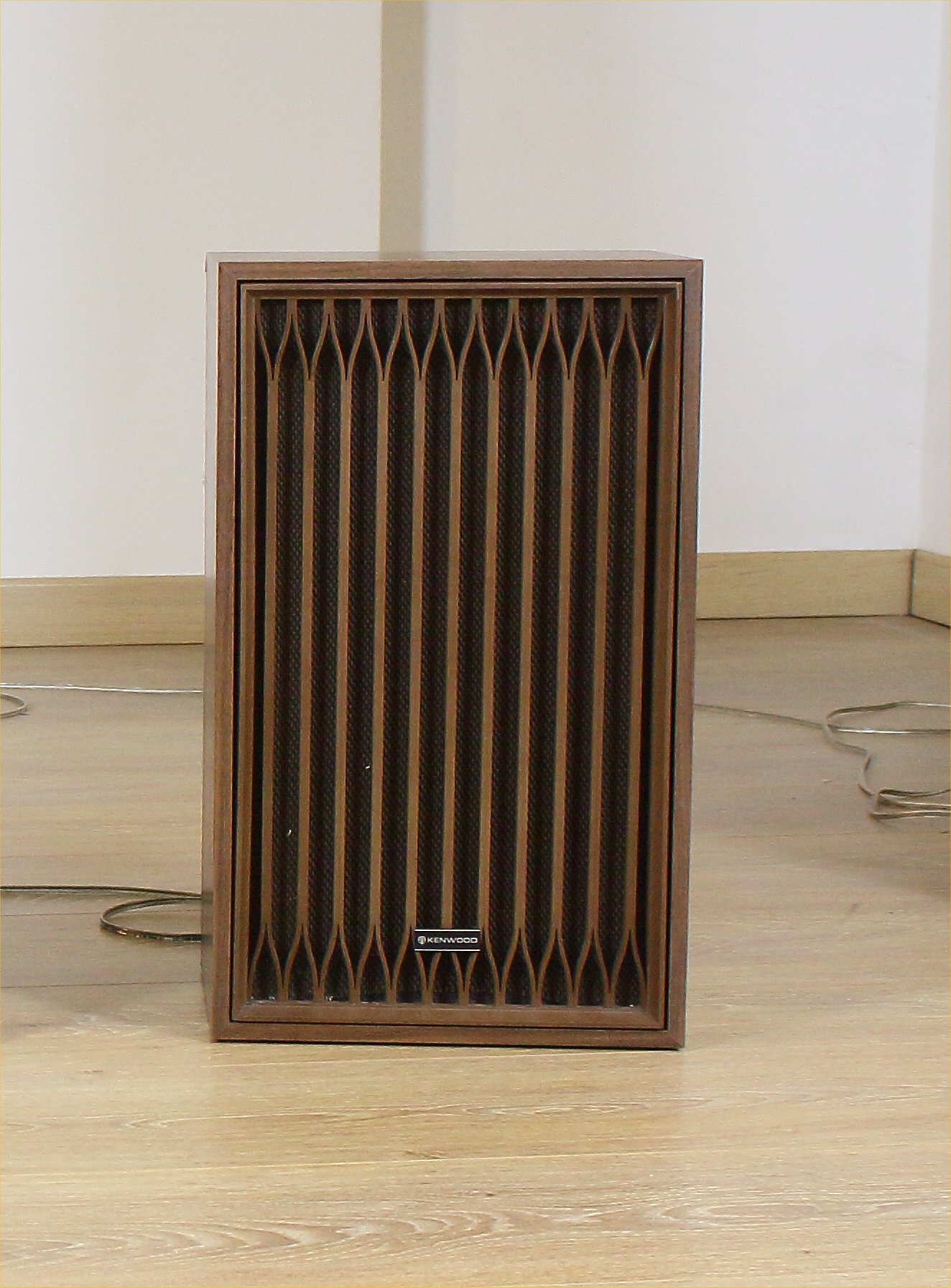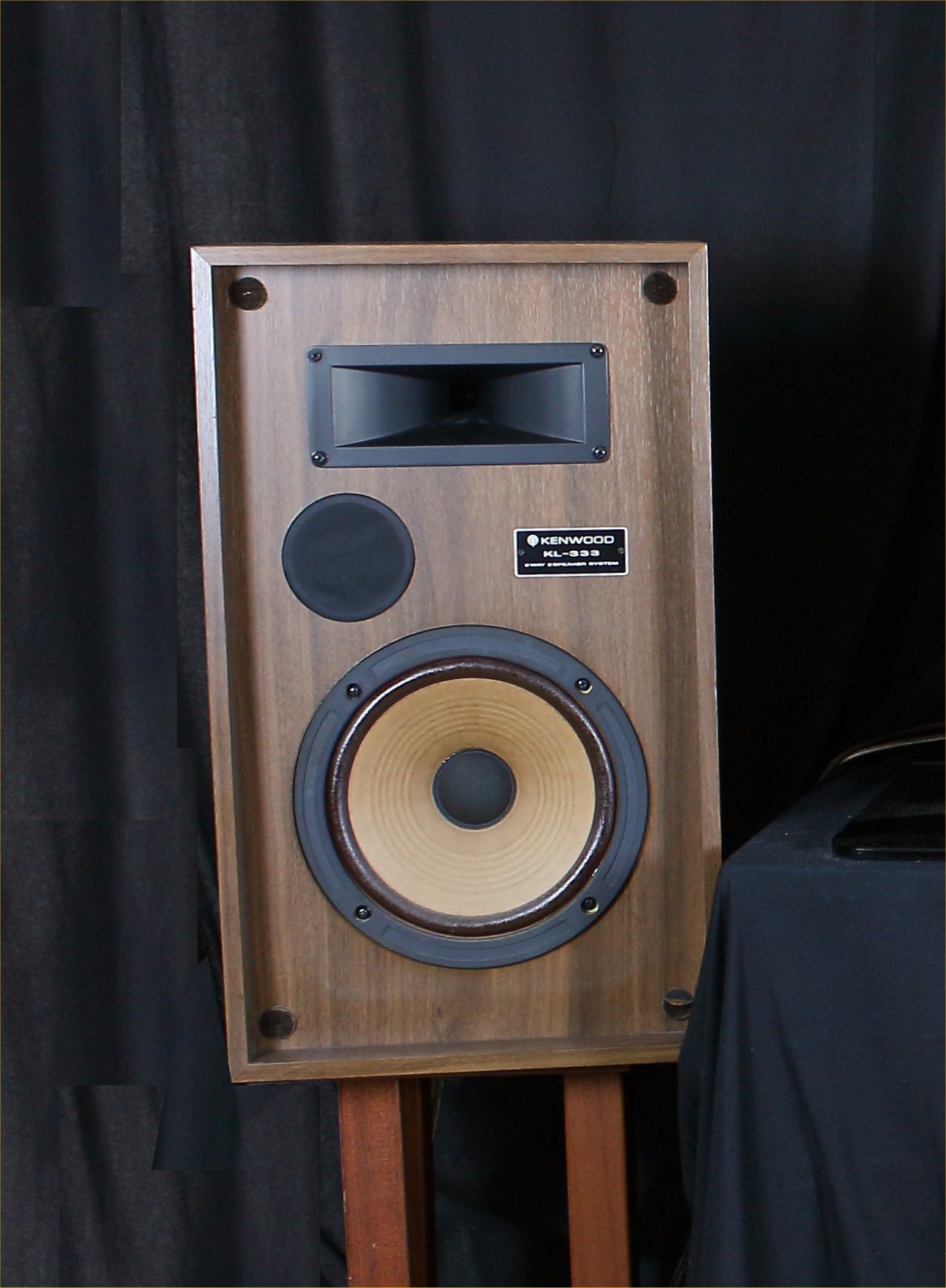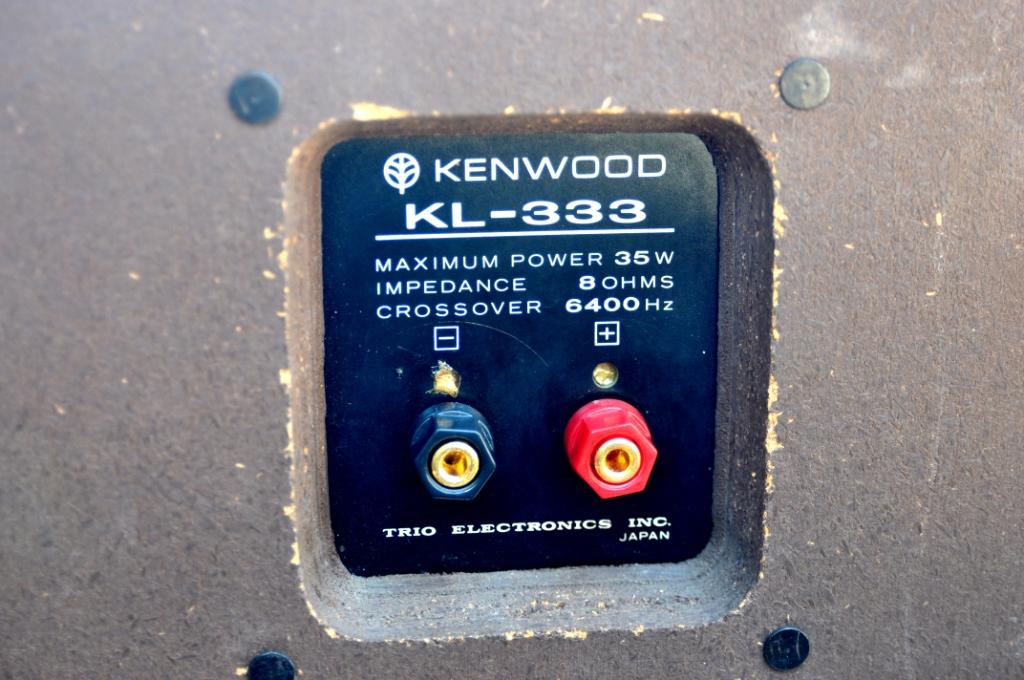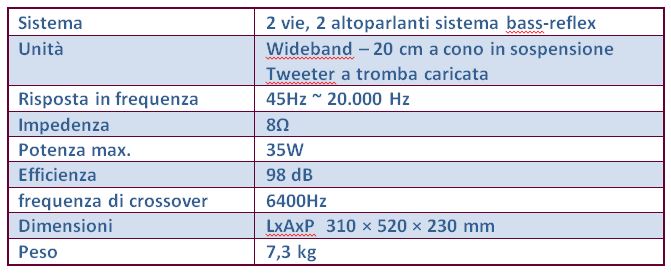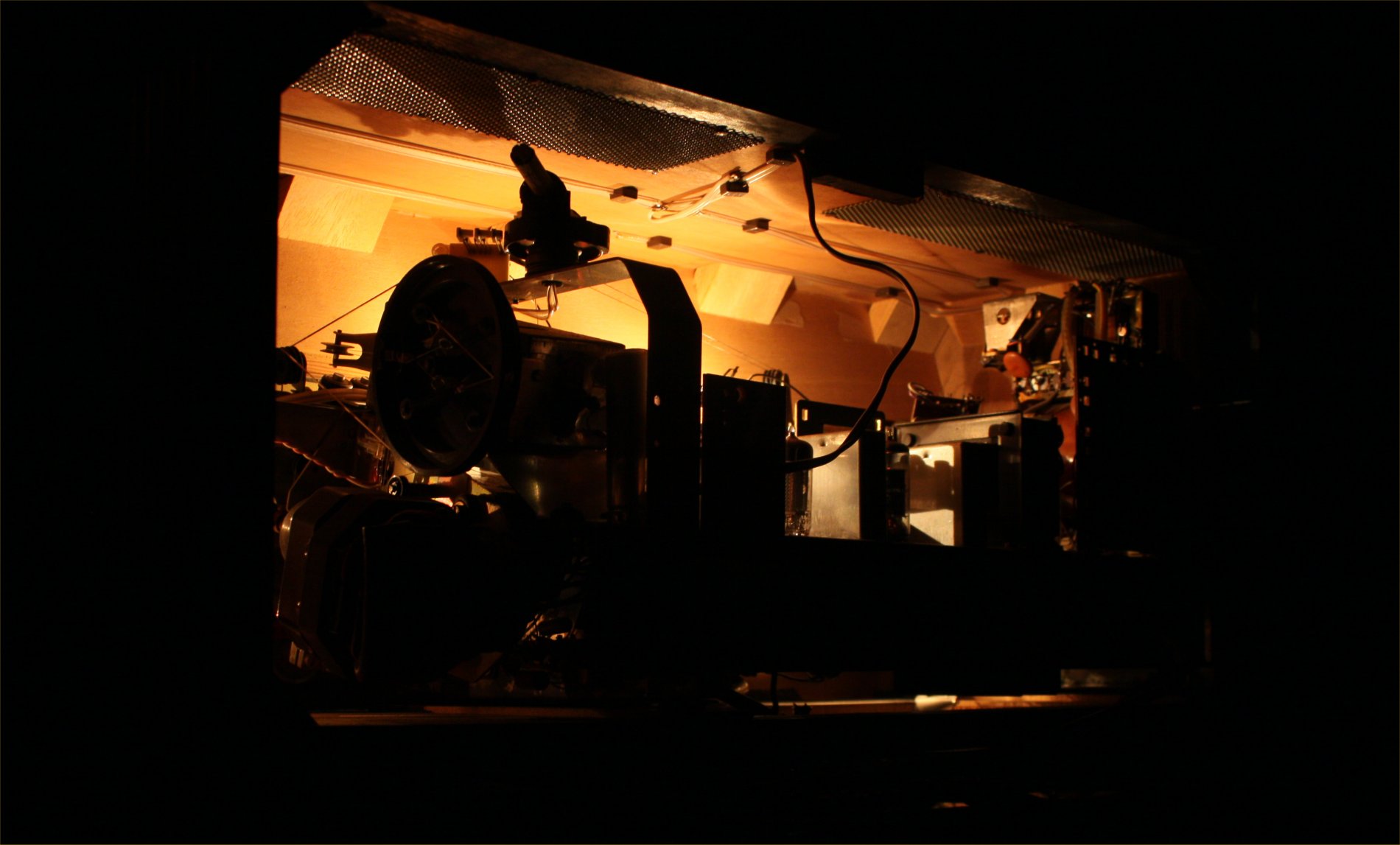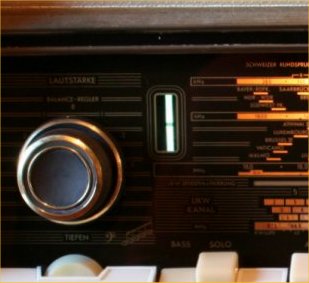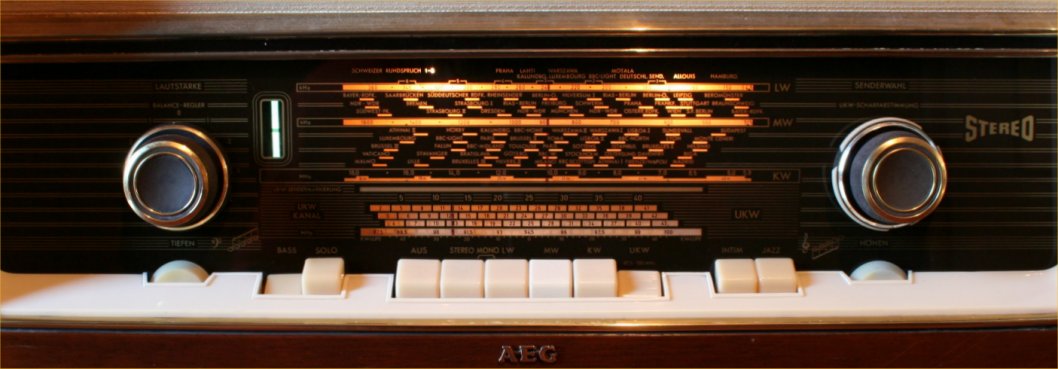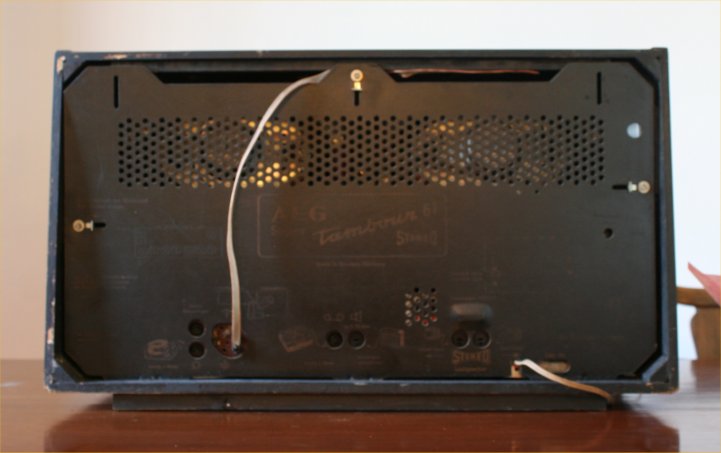Graetz is one of the most prestigious German radio manufacturers. The Graetz Fantasia 922 Luxus - Stereosuper was the flagship model in 1960.
Graetz devices have always been appreciated for their refined and elegant finish, as much as for the innovative acoustic solutions and their respective patents.
In designing the line of their flagship model, Graetz designers chose a classical and statuary kind of elegance.
The cabinet is in dark wood and the paint is very shiny. The sides with their variable width make the profile look slimmer. The base looks wide and solid, without making cabinet look heavy.
The strongly embossed texture of the canvas covering the speakers, the golden lines highlighted on the dark display and the light knobs make the visual impression even more pleasant and lively.
The stylistic attention, as in Graetz's tradition, is very accurate.
The Amplifier Section is the best that could be imagined at the time.
The Volume potentiometer has two sockets for loudness (red). As known, in fact, when listening at a very low volume the bass frequencies and the treble are not perceived with the same sound intensity as the mid, which appear to be predominant.
The loudness modifies the response of the preamplifier stage specularly to the Fletcher-Munson curves. This allows to maintain the correct perception of the sound, even at low volume levels.
The Tone Control was designed using the complex Baxandall circuit (green). The advantage of such circuit is its high precision, while the disadvantages are its cost and construction complexity. Much simpler and cheaper circuits were normally used. But not in this device.
The Balance (pink) is inserted into the feedback circuit. It works by changing the percentage of signal that is downgraded/relegated to each of the two channels. This signal is in inverted phase compared to the main signal. In this way, by acting on the balance, the level of one channel is lowered in comparison with the other and, at the same time, the distortion is reduced.
By turning the knob at the ends, this type of balance does not cause a reset of the volume of the channels as in the modern balance control, but it is to be considered a “fine” adjustment of the level between the two channels.
The Phase Inverter (blue) is of the Catodina type. As an advantage, it is very well-balanced. This circuit is still used in hi-fi amplifiers.
The Push-Pull section (blue) uses two separate tubes (EL95) for each channel. The EL95 are pentodi expressly designed for audio use.
In the receivers, even high-class, provided with Push-Pull output power, bulbs were normally used, which enclosed multiple valves (ELL80, ECLL800). In this way, space and components were saved. But if one of the pentods inside thei complex tube decays differently, the reproduction is altered, with an exponential increase in the crossover distortion. These multiple tubes, once common, are rare and expensive today, so the replacement can be economically significant. The use of separate pentods, as in the Graetz Fantasia 922, eliminates this problem, and it is possible to select pairs of EL95 with the same characteristics.
Only the Graetz Fantasia 922 and 1022 and the Telefunken Opus 2430/2550 use 4 x EL95 in the stadio finale.
The Tuner Section is also very well taken care of.
The most interesting feature is the high selectivity of this device, due to the twin IF stage. The two EF89 pentods and the numerous IF transformers, in fact, are visible in the photos.
In FM an additional transformer has been implemented, accordato all'interno del convertitore in order to make more stable and insensibile ai disturbi the reception of such frequencies.
Finally, the L0udspeakers set.
The Graetz 922 Luxus features 6 loudspeakers. Four are placed frontally and two on the sides.
The four front loudspeakers are two tweeters and two oval wideband. The tweeters are placed in front of the wideband, on the same axis. This particular arrangement has the great advantage of making the origin of the sound close to that produced by a point source.
This characteristic corresponds to a very linear scatter diagram, and therefore to a much more regular realistic sound image than if the tweeters and the woofers were placed side by side.
The two loudspeakers placed on sides are, at such power level, the mid / tweeters, and allow a balanced listening from any position with respect to the radio, frontally or sideways.
This last feature makes the device very enjoyable as for daily listening. You will no longer want to turn on the HI-FI system ...
 german radios - cn
german radios - cn
